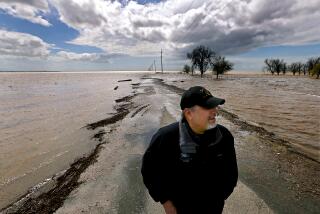‘Severe’ drought covers nearly 99.8% of California, report says
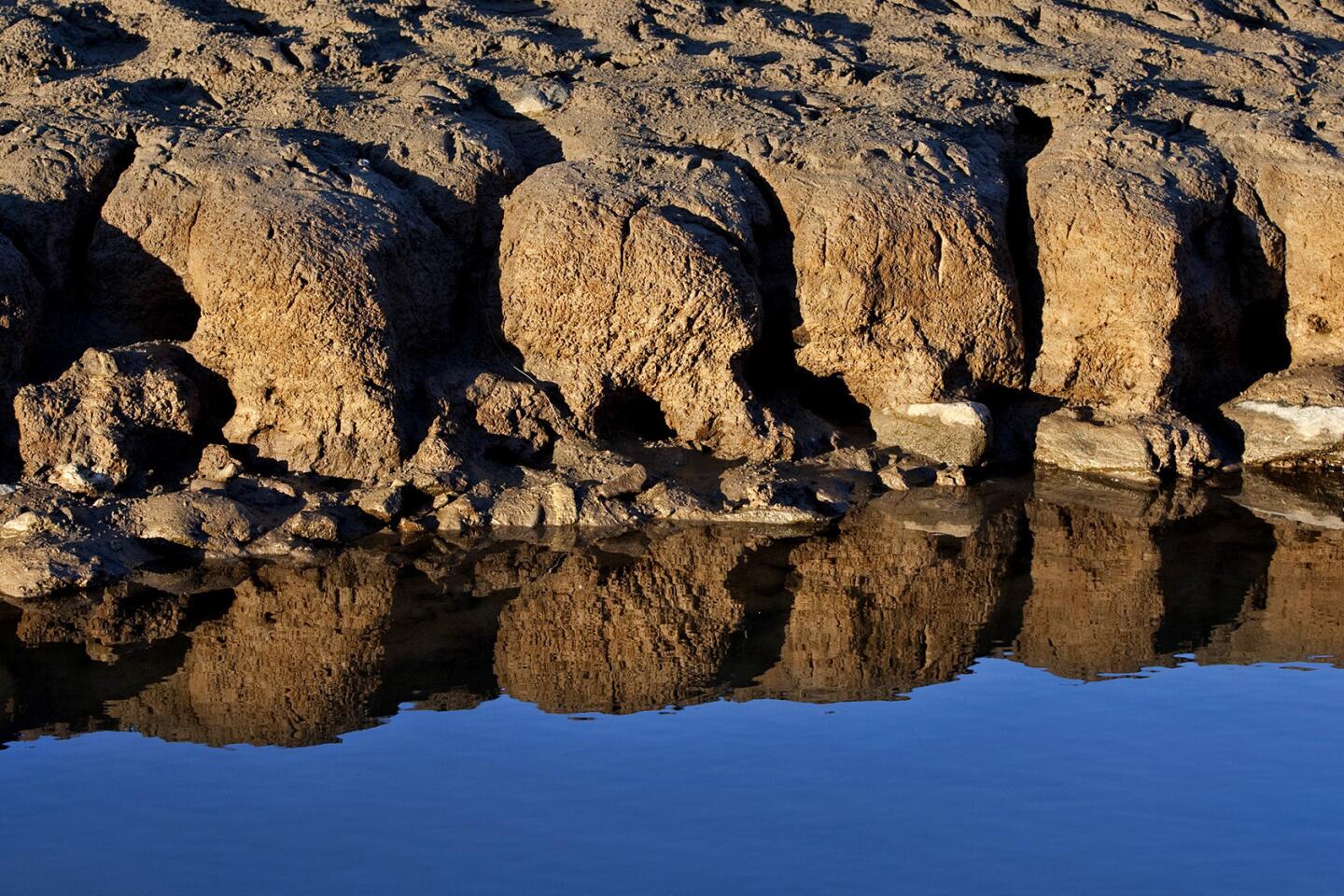
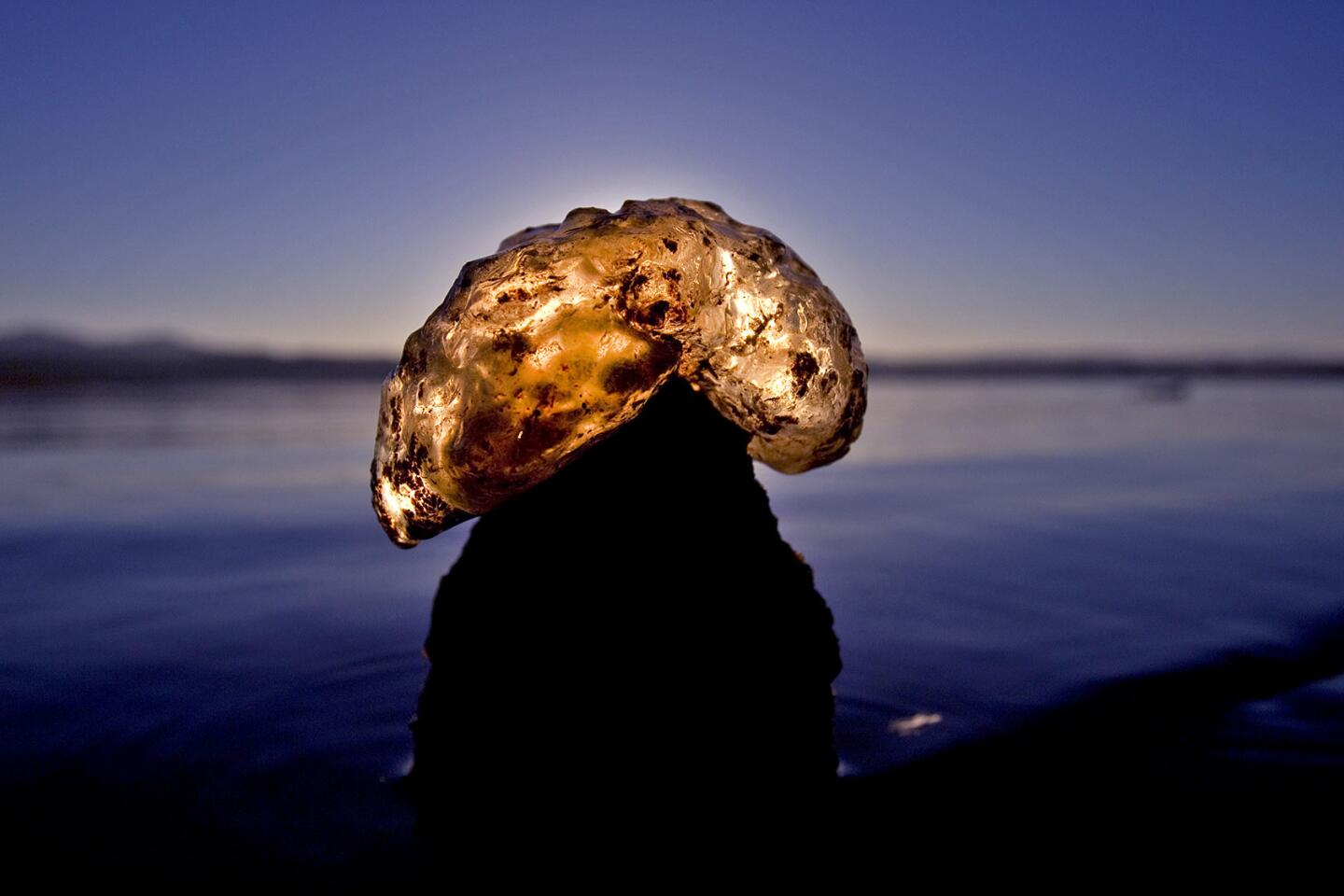
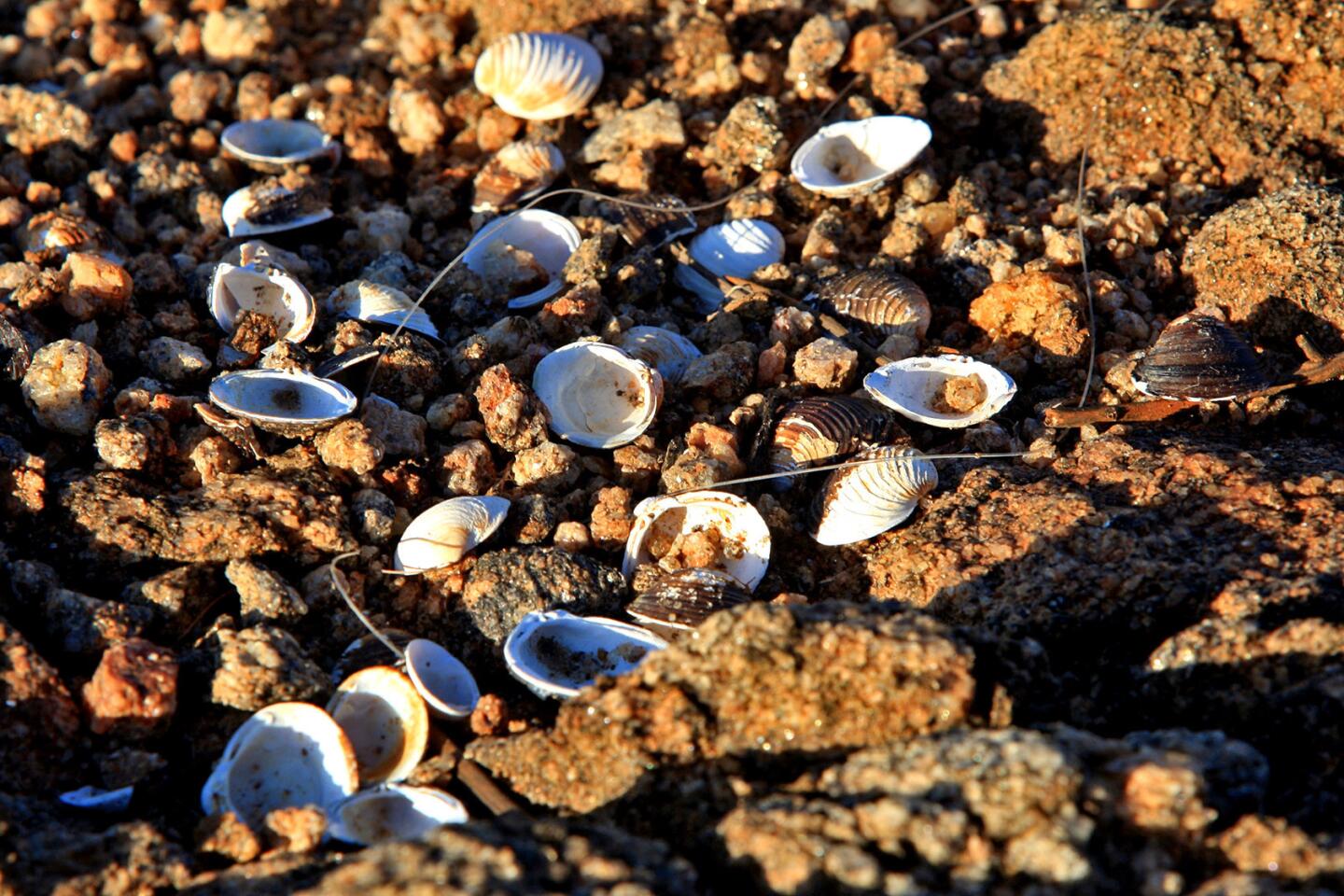
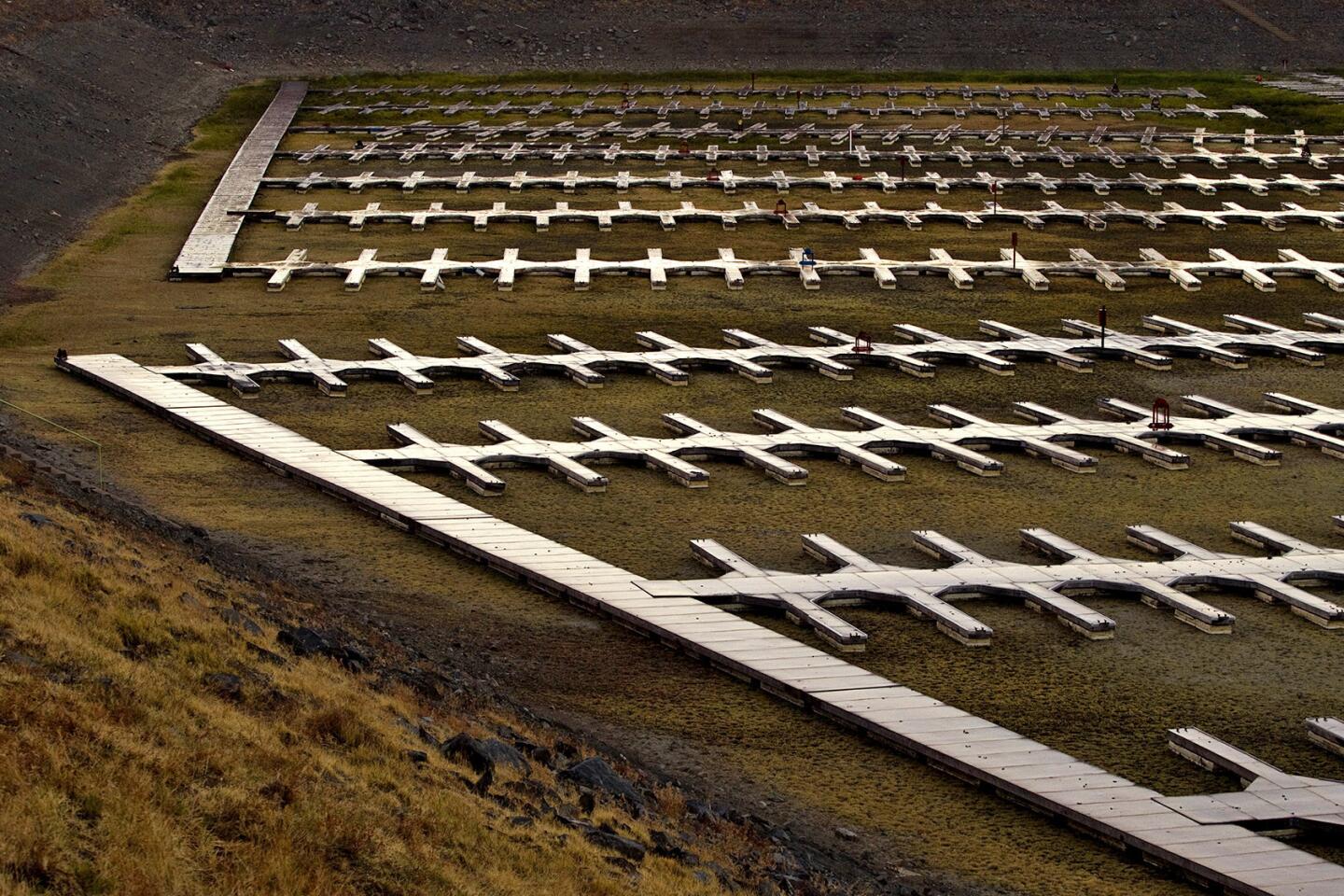

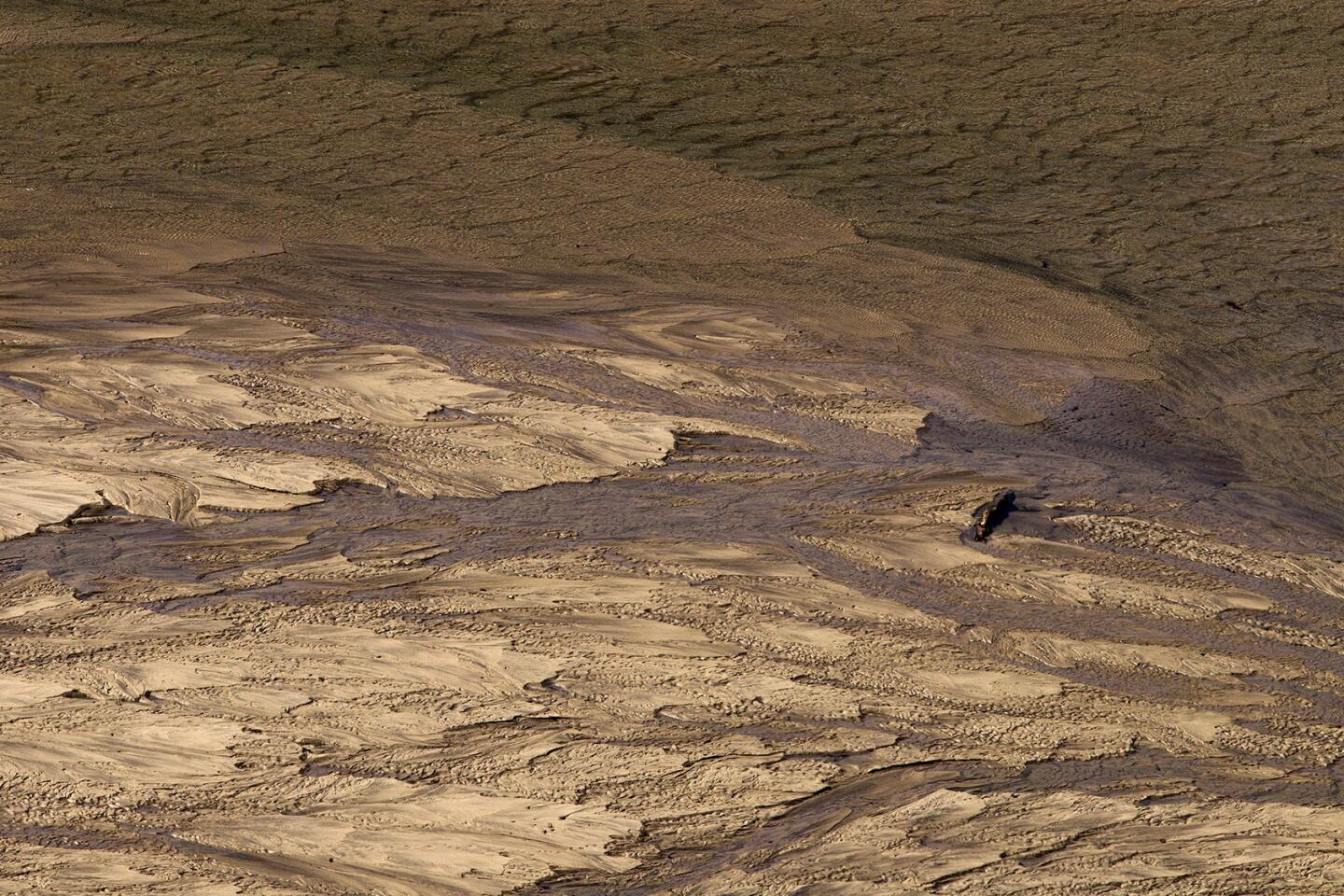

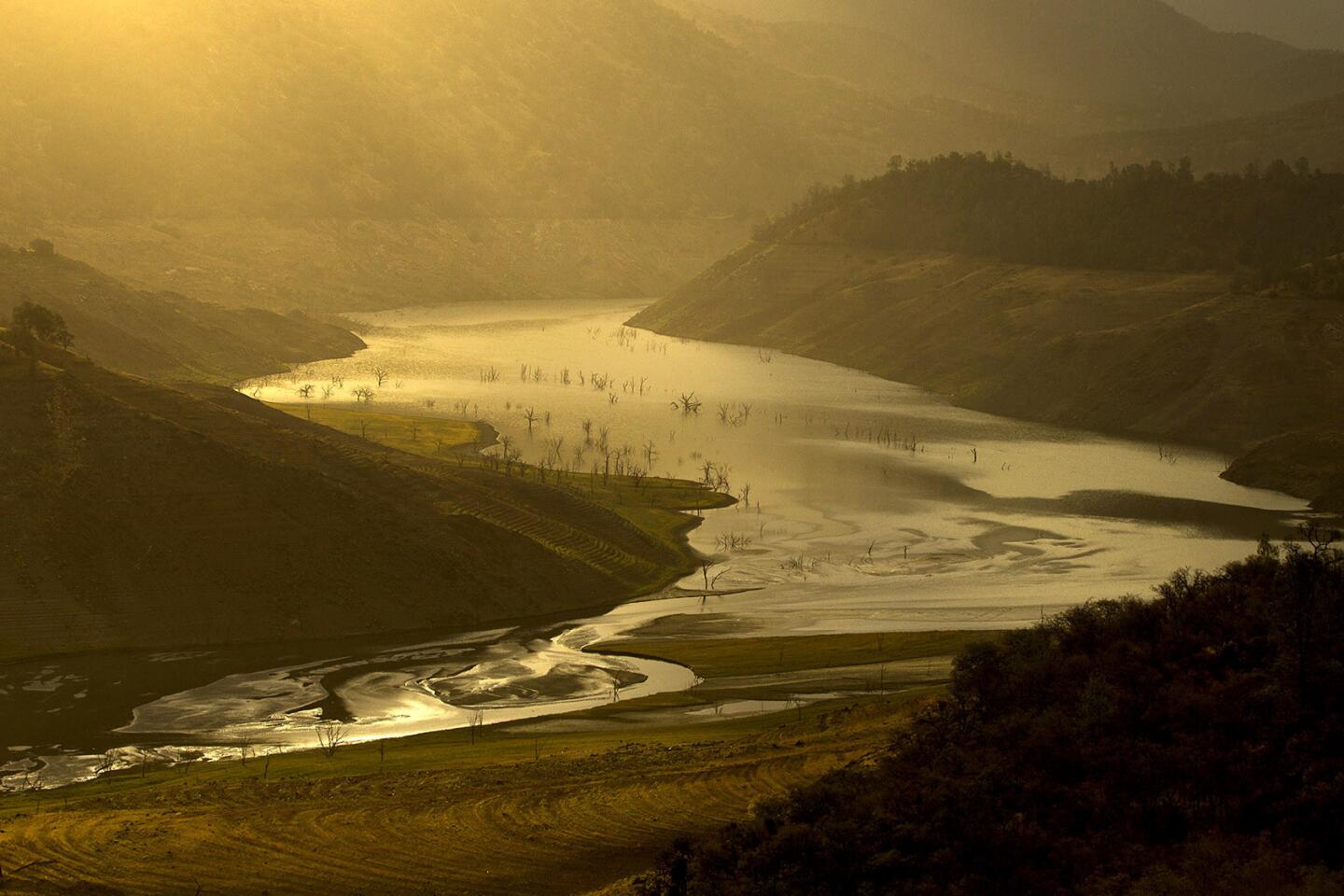
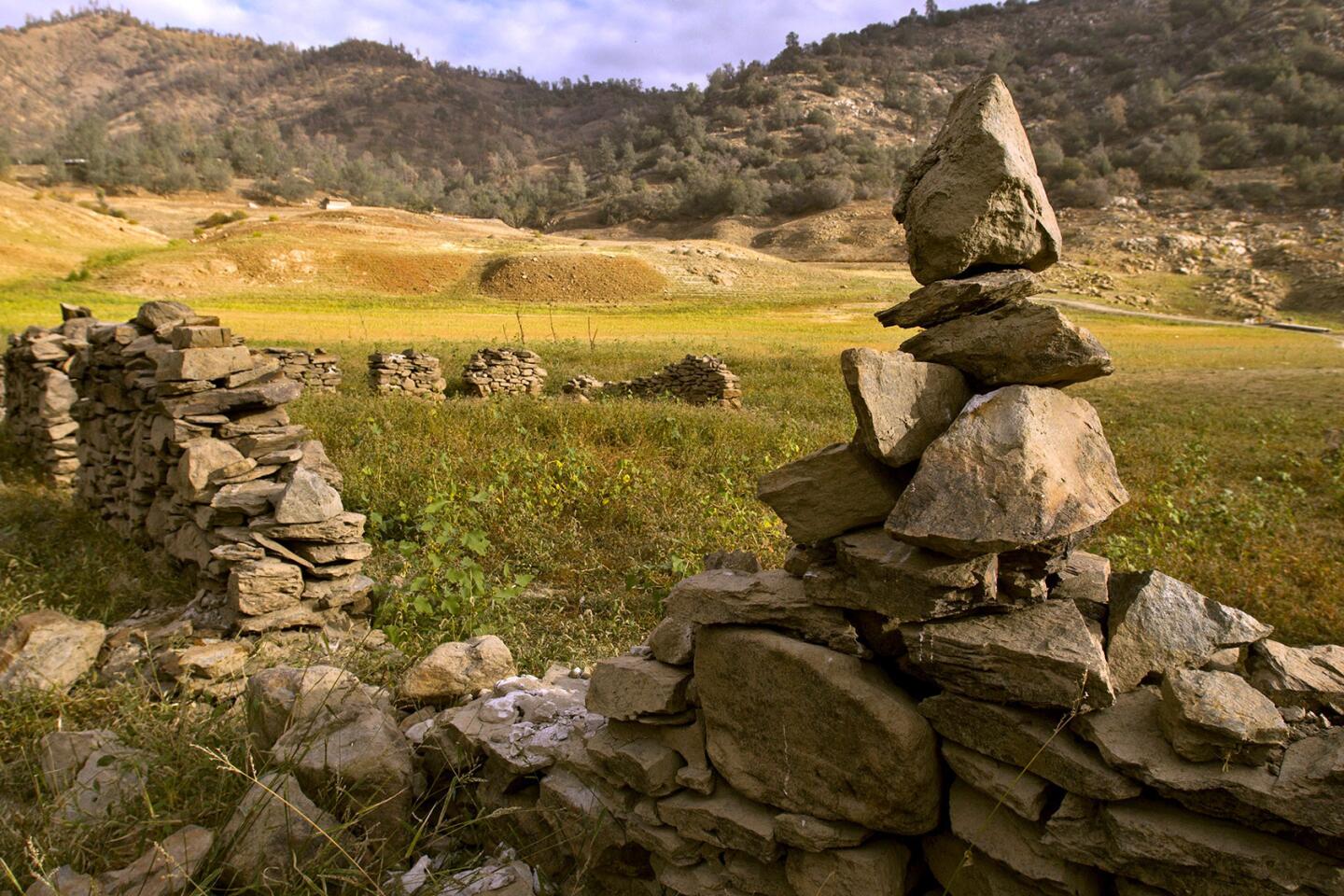
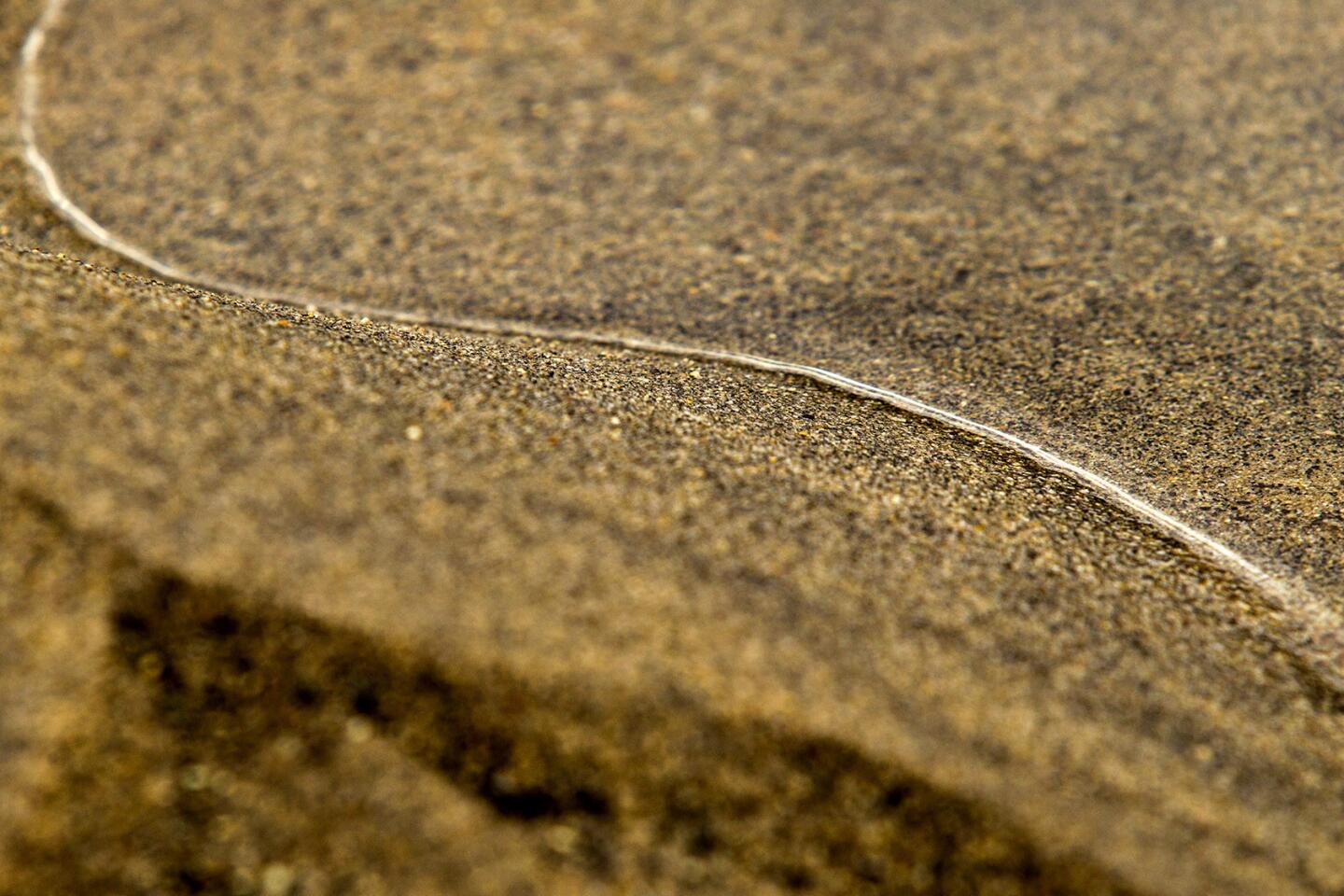
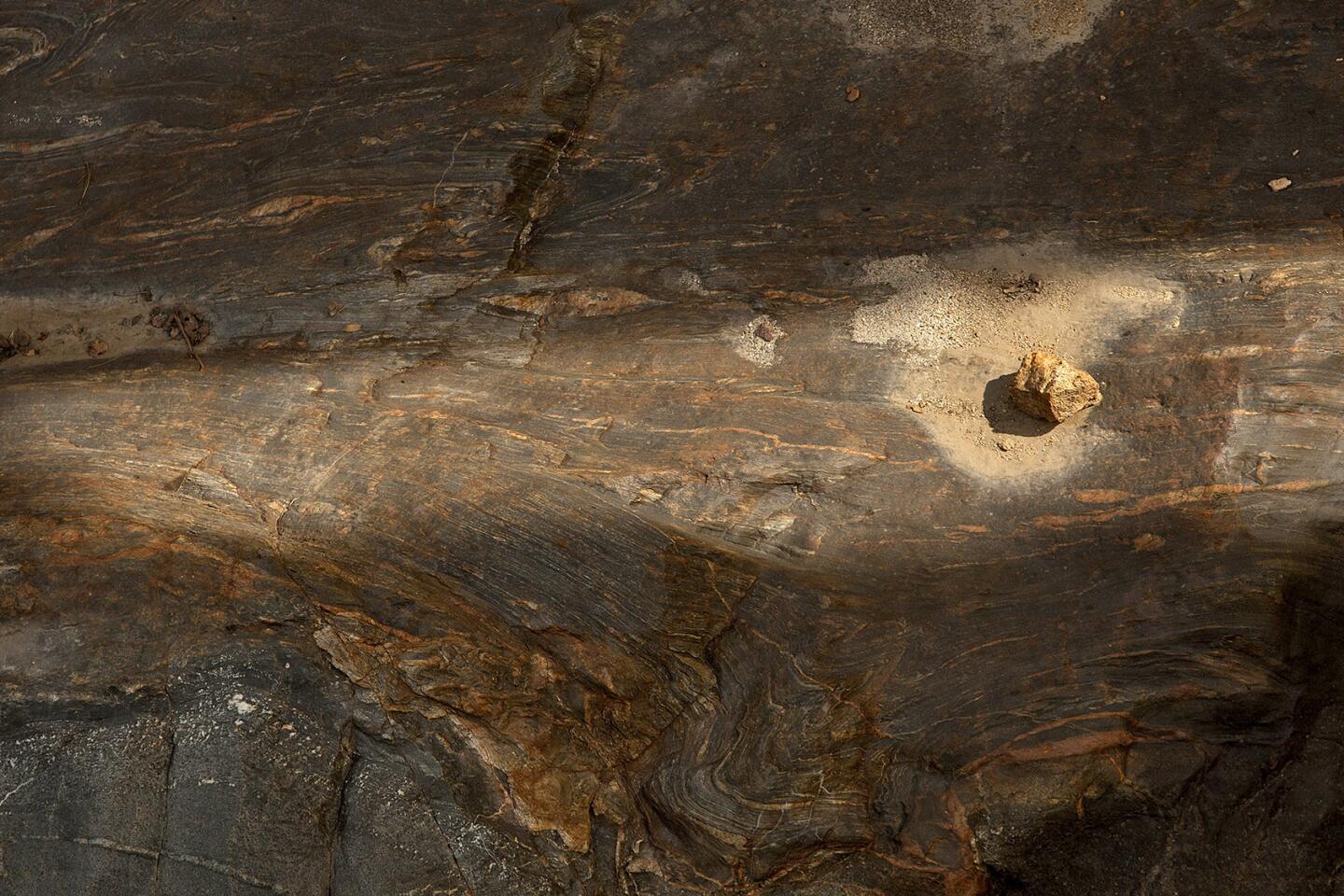

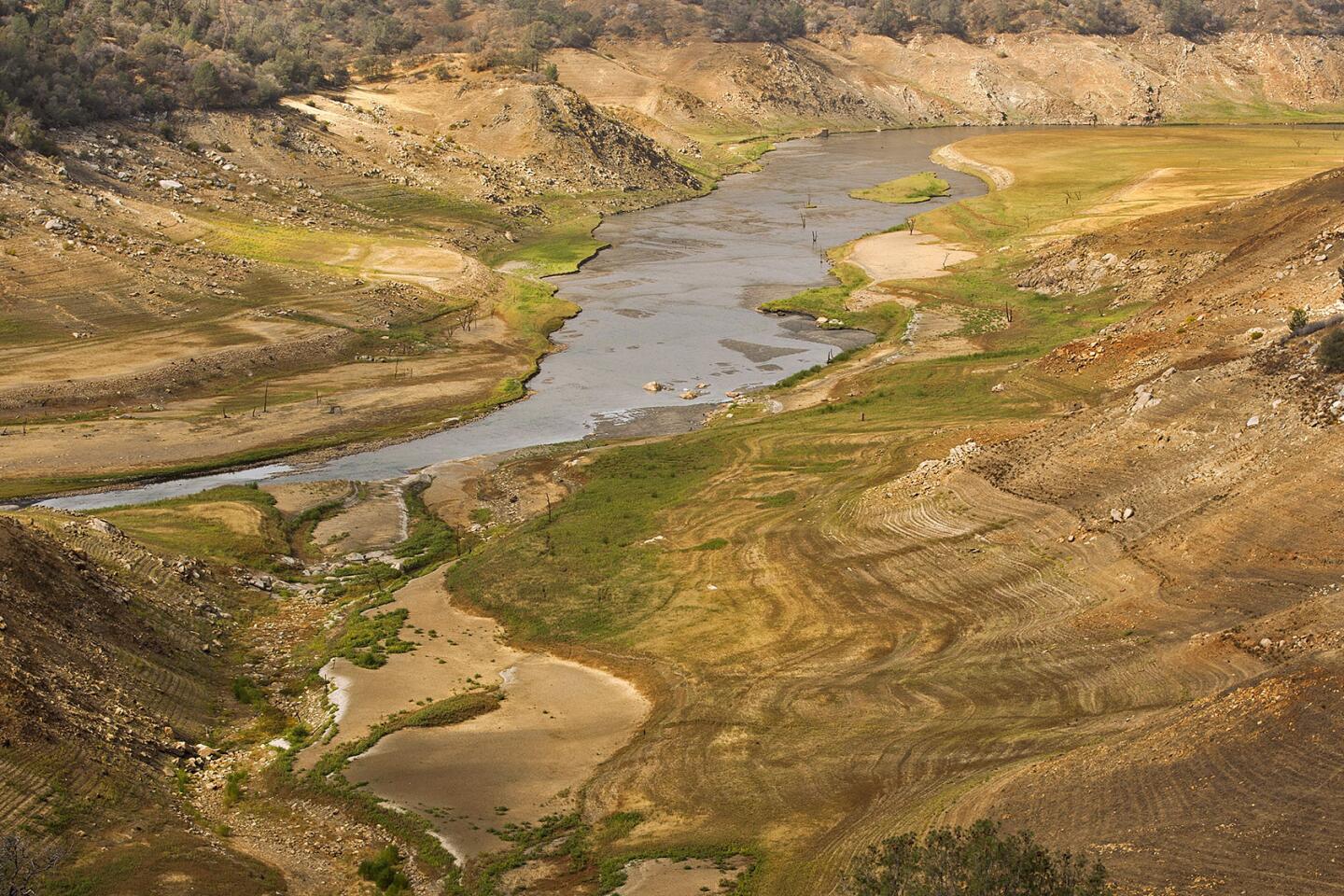
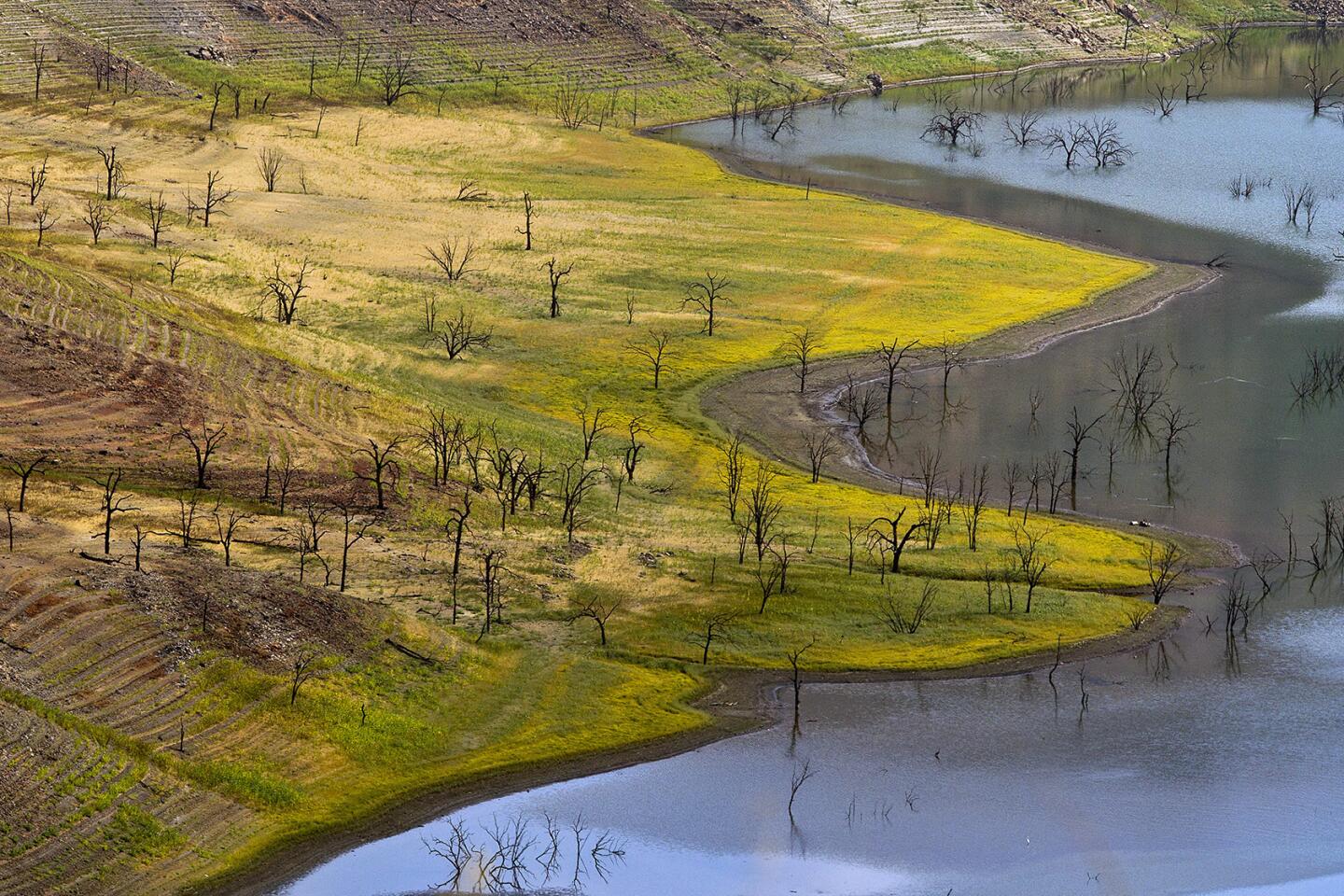
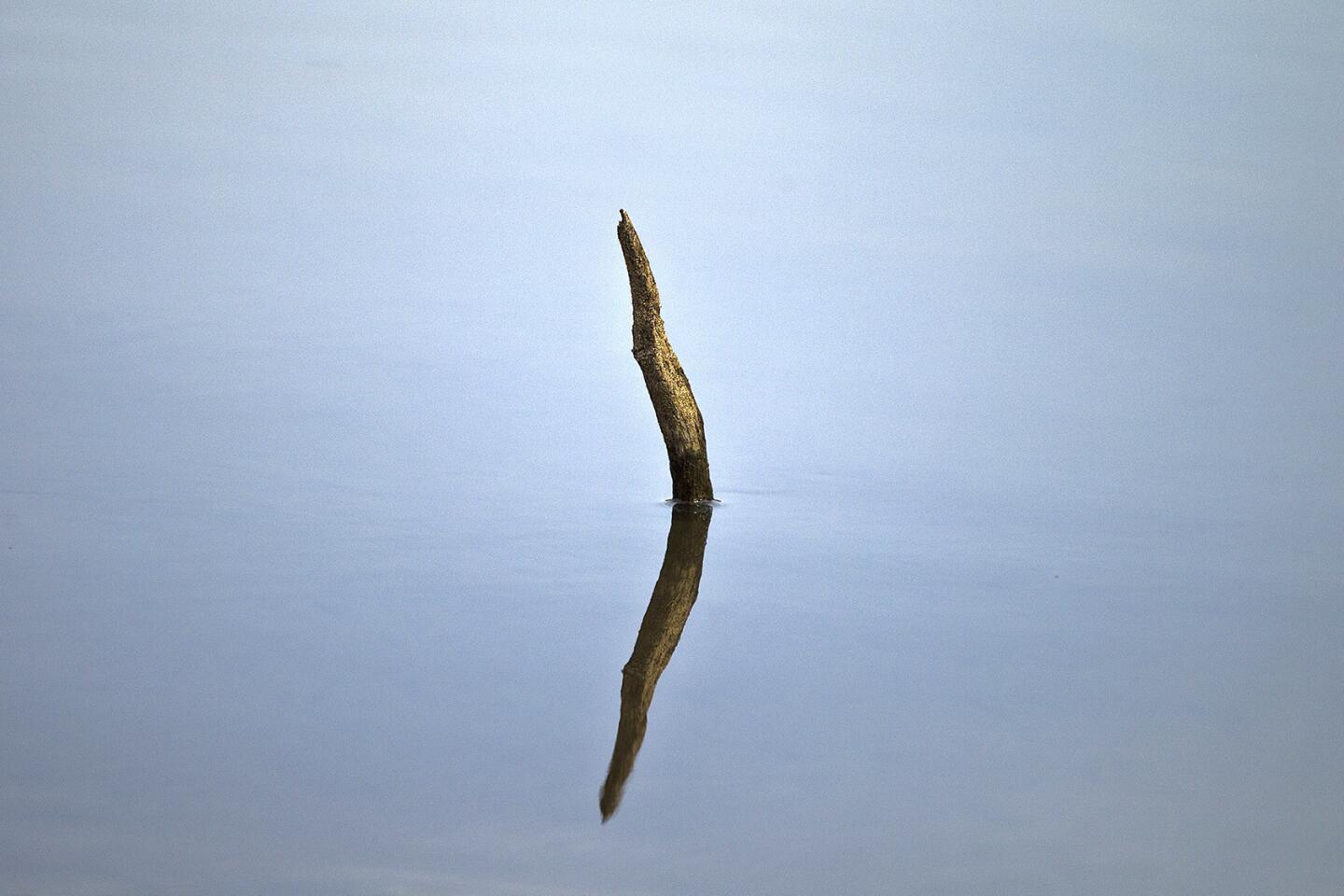
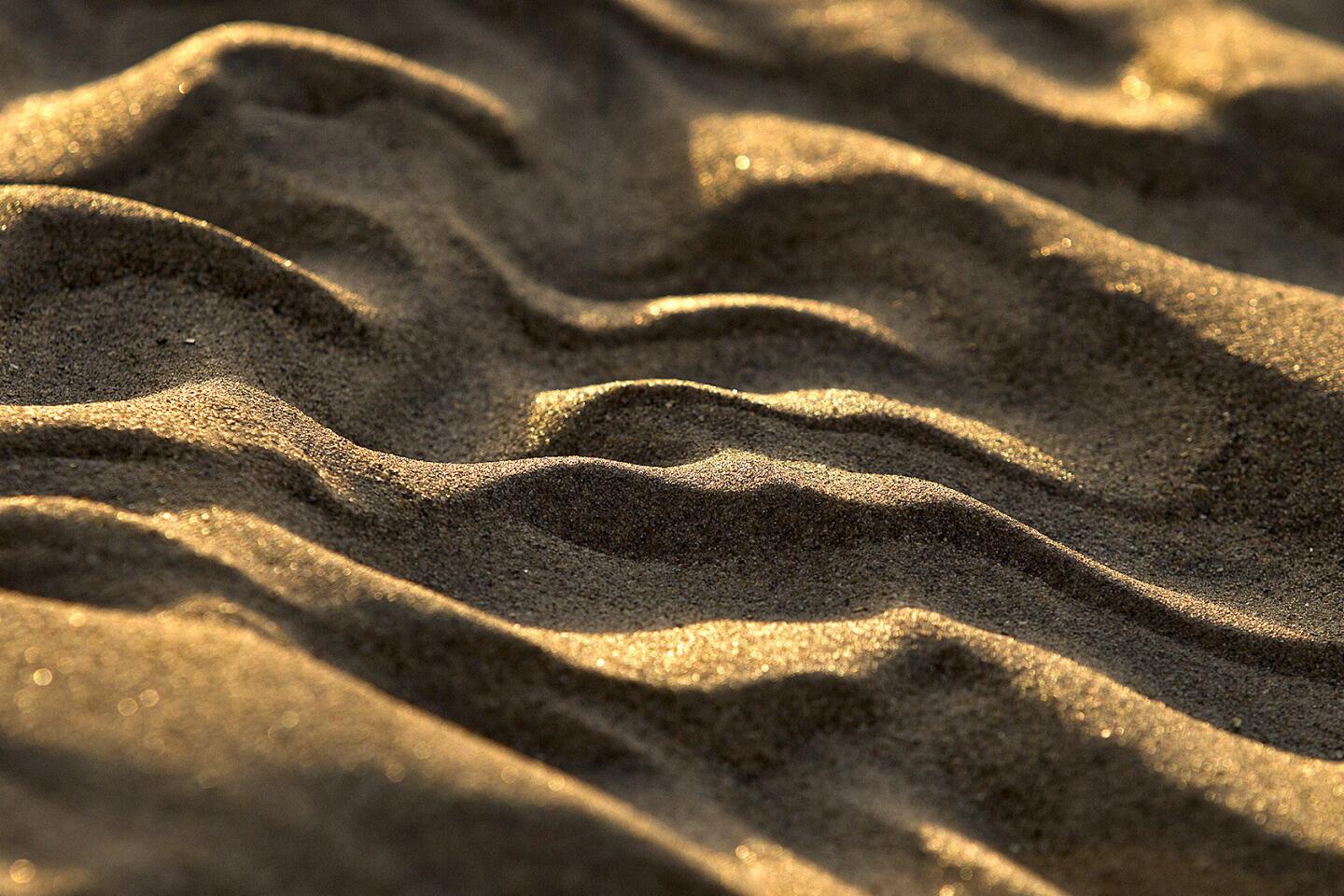
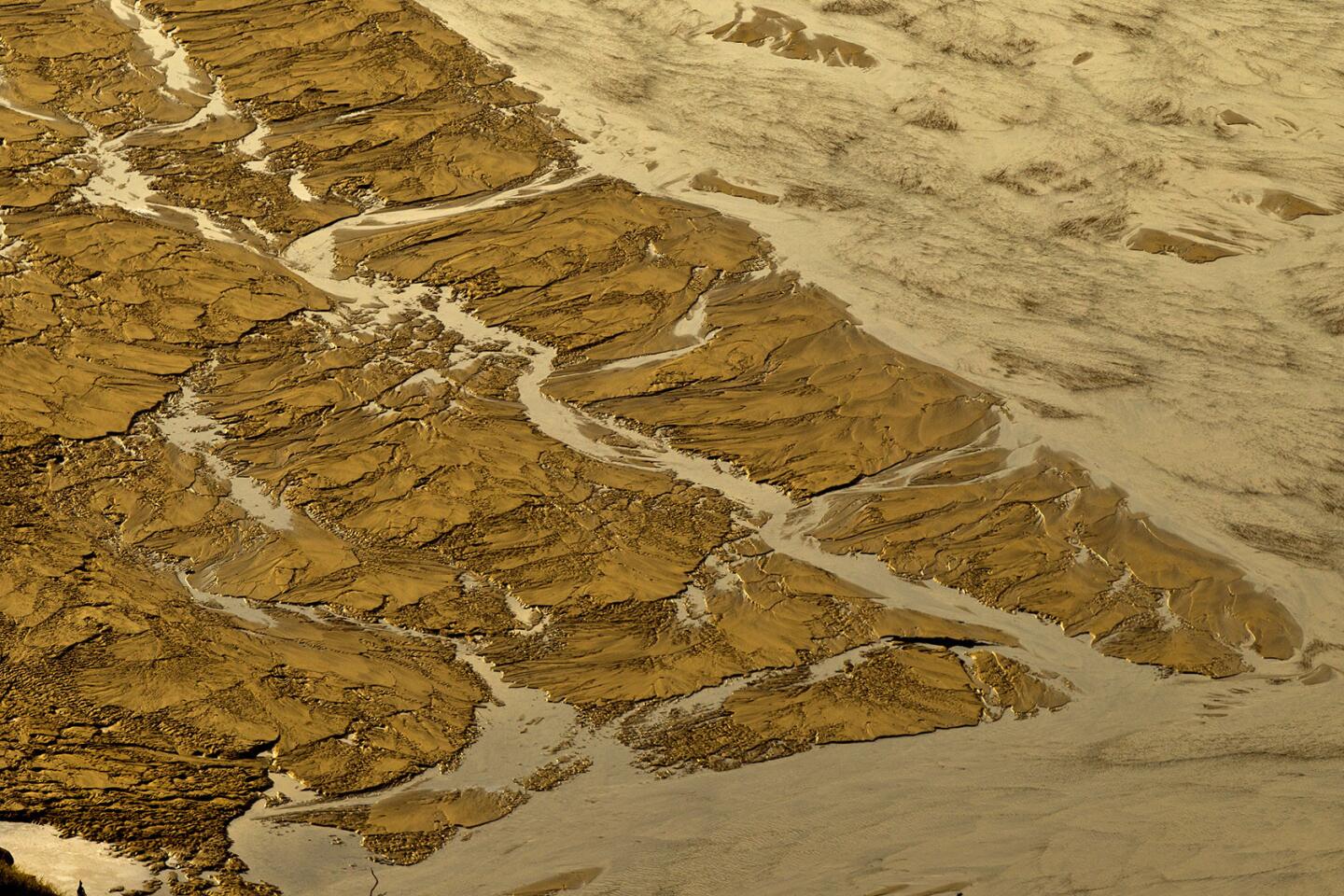
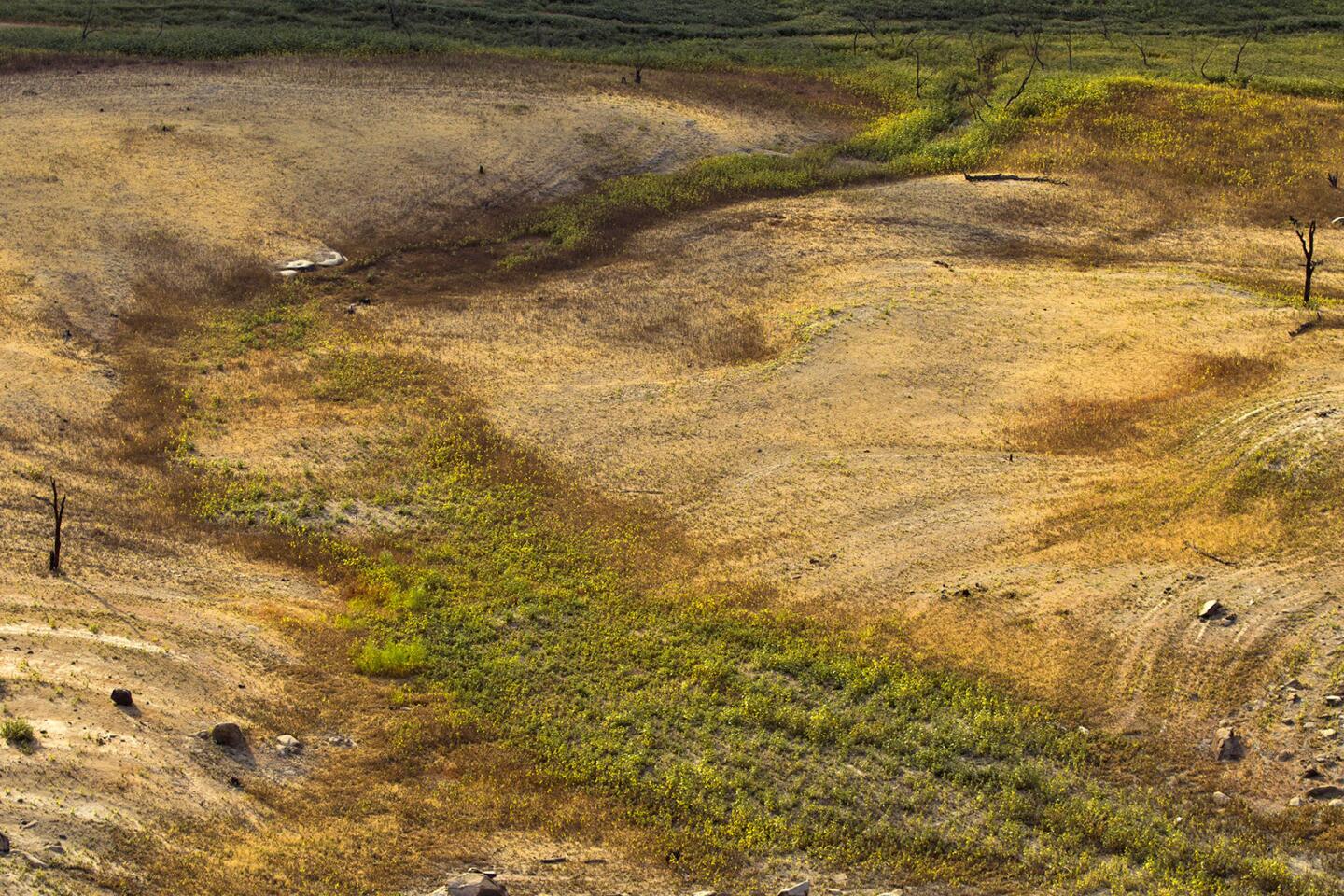
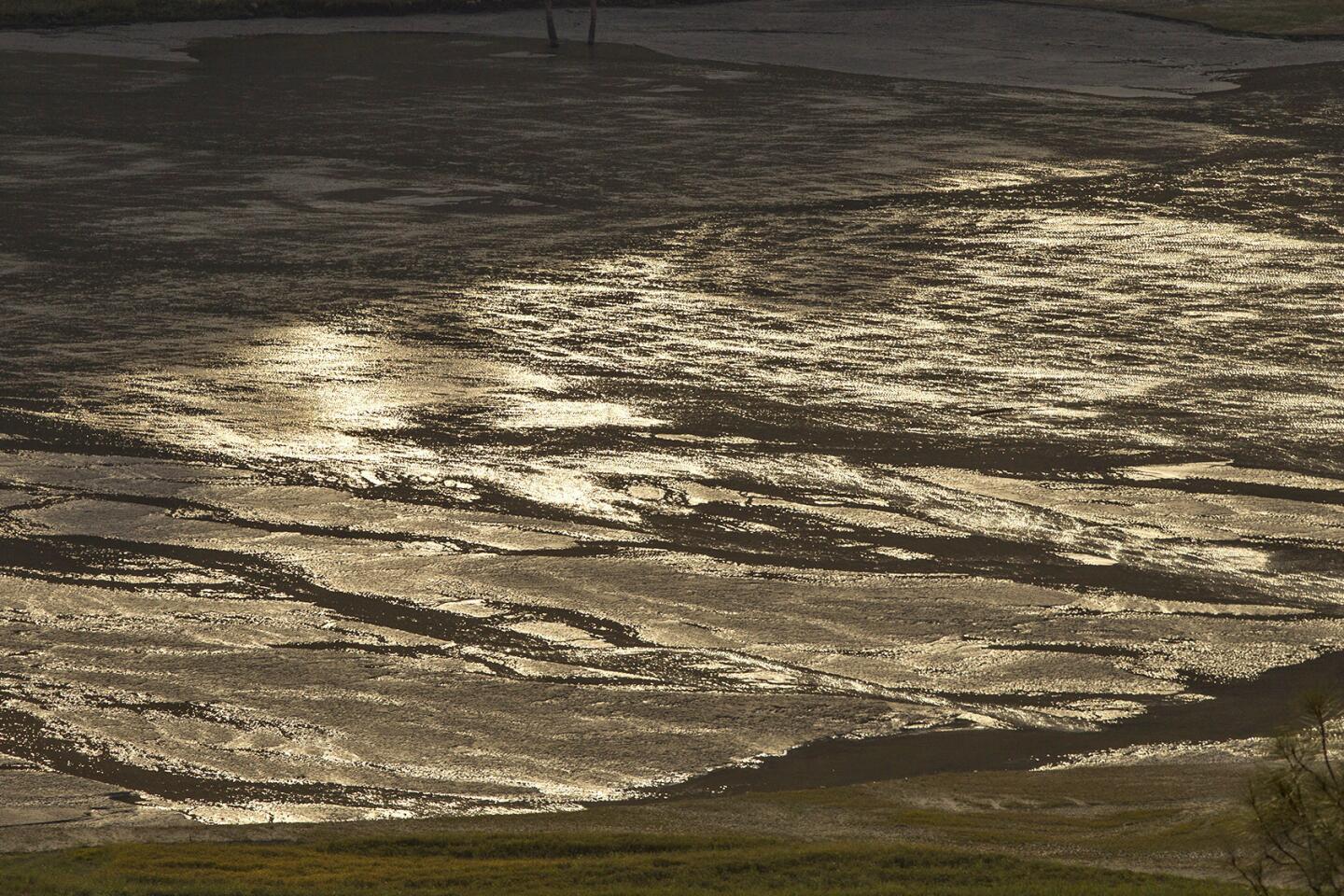
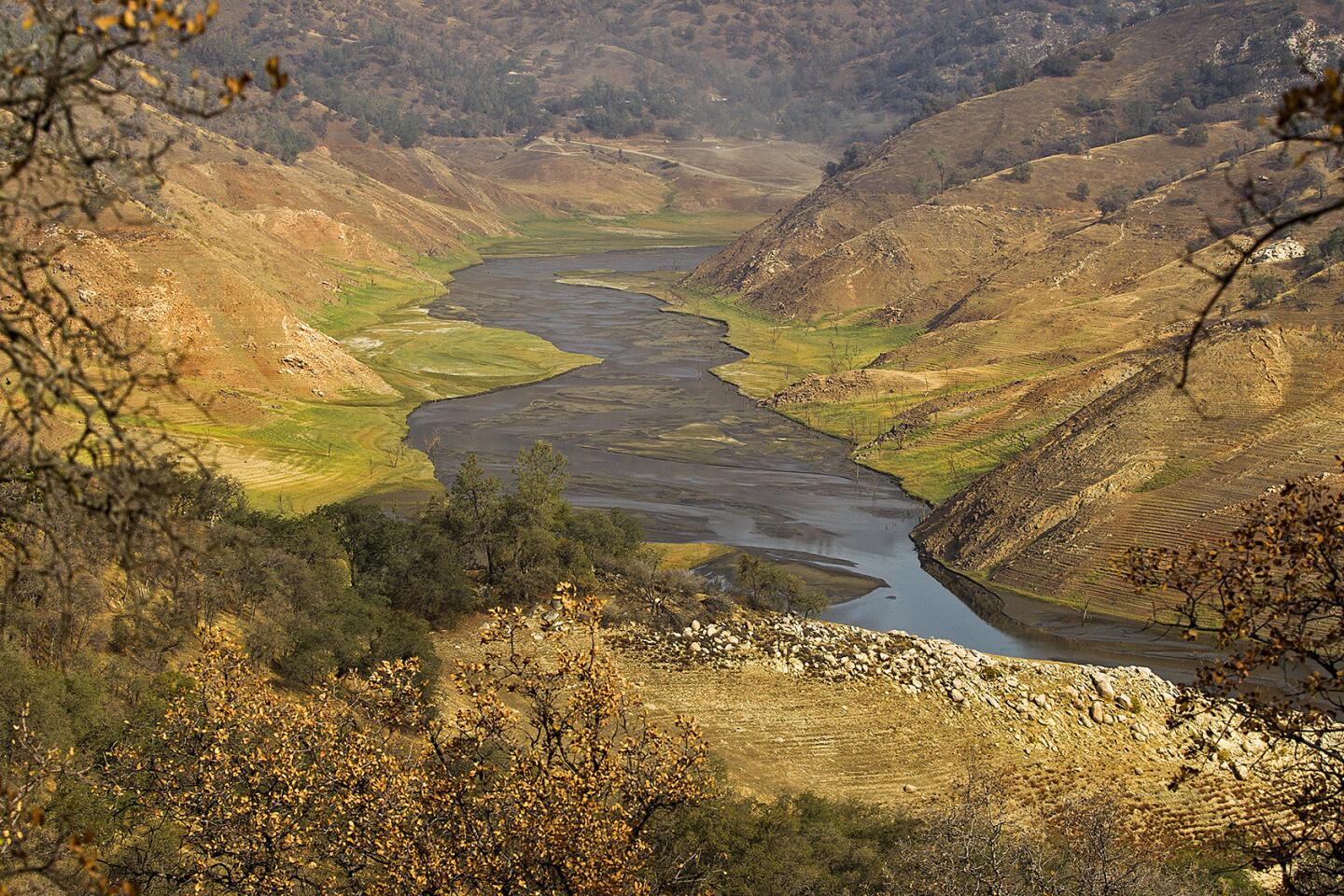
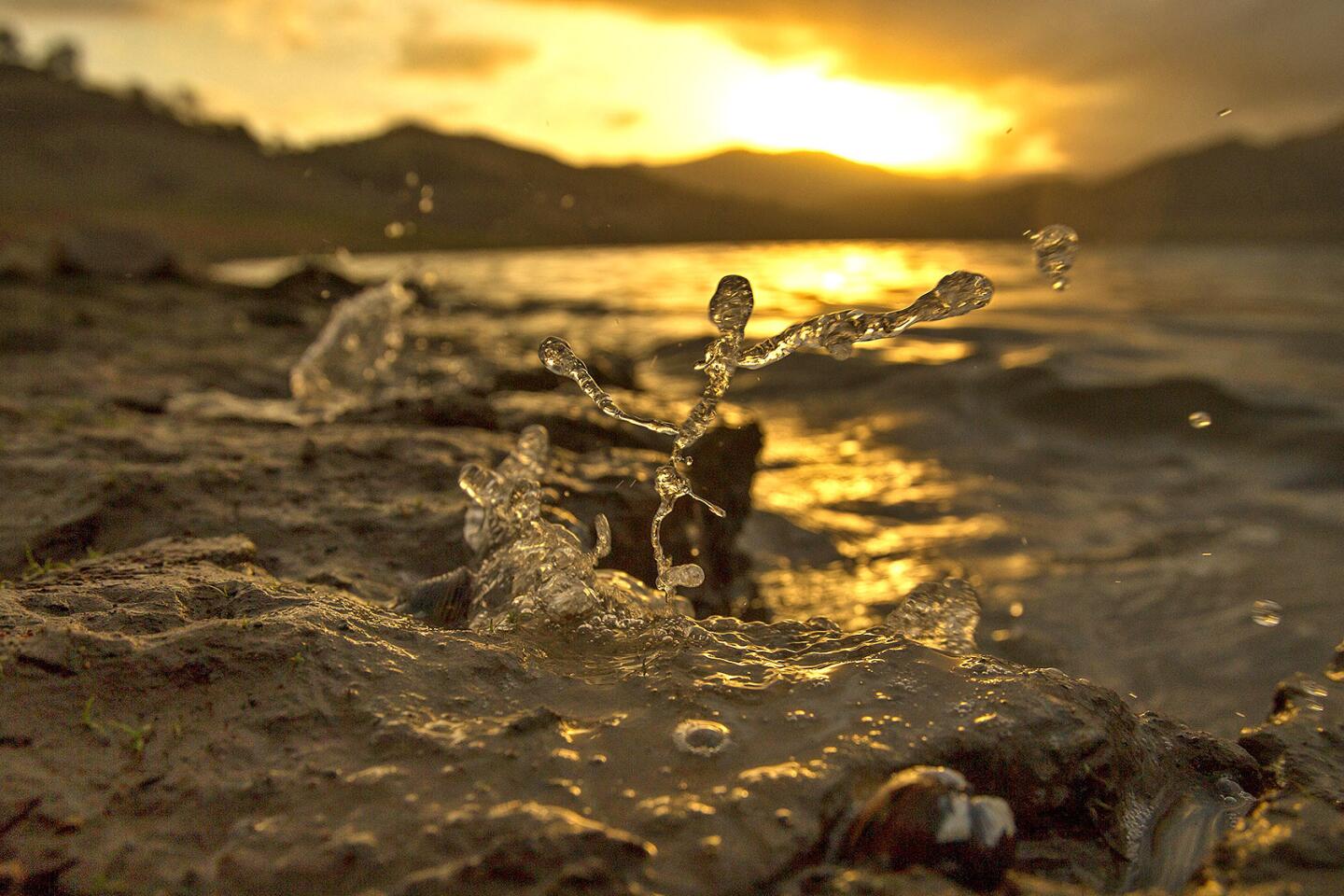
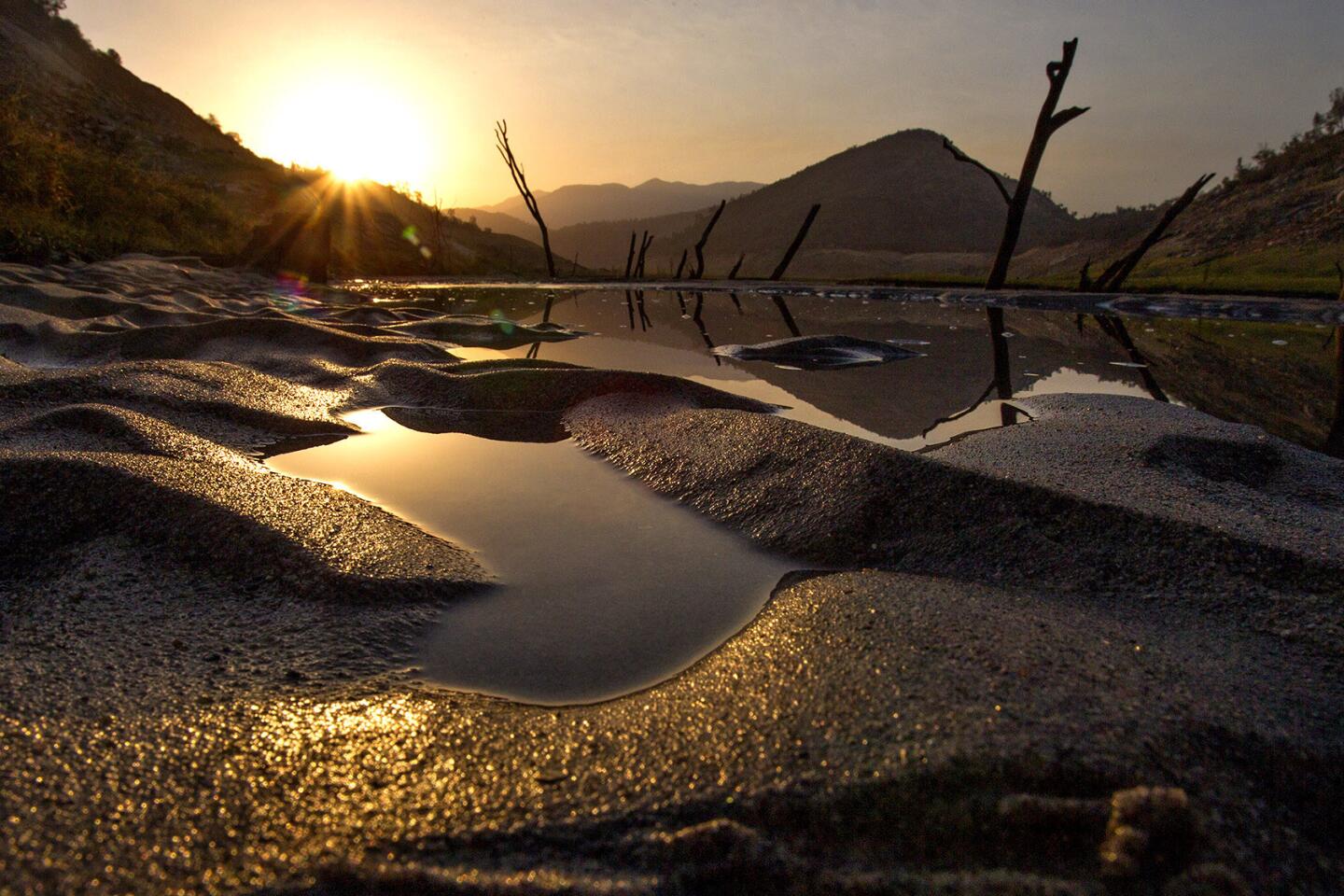

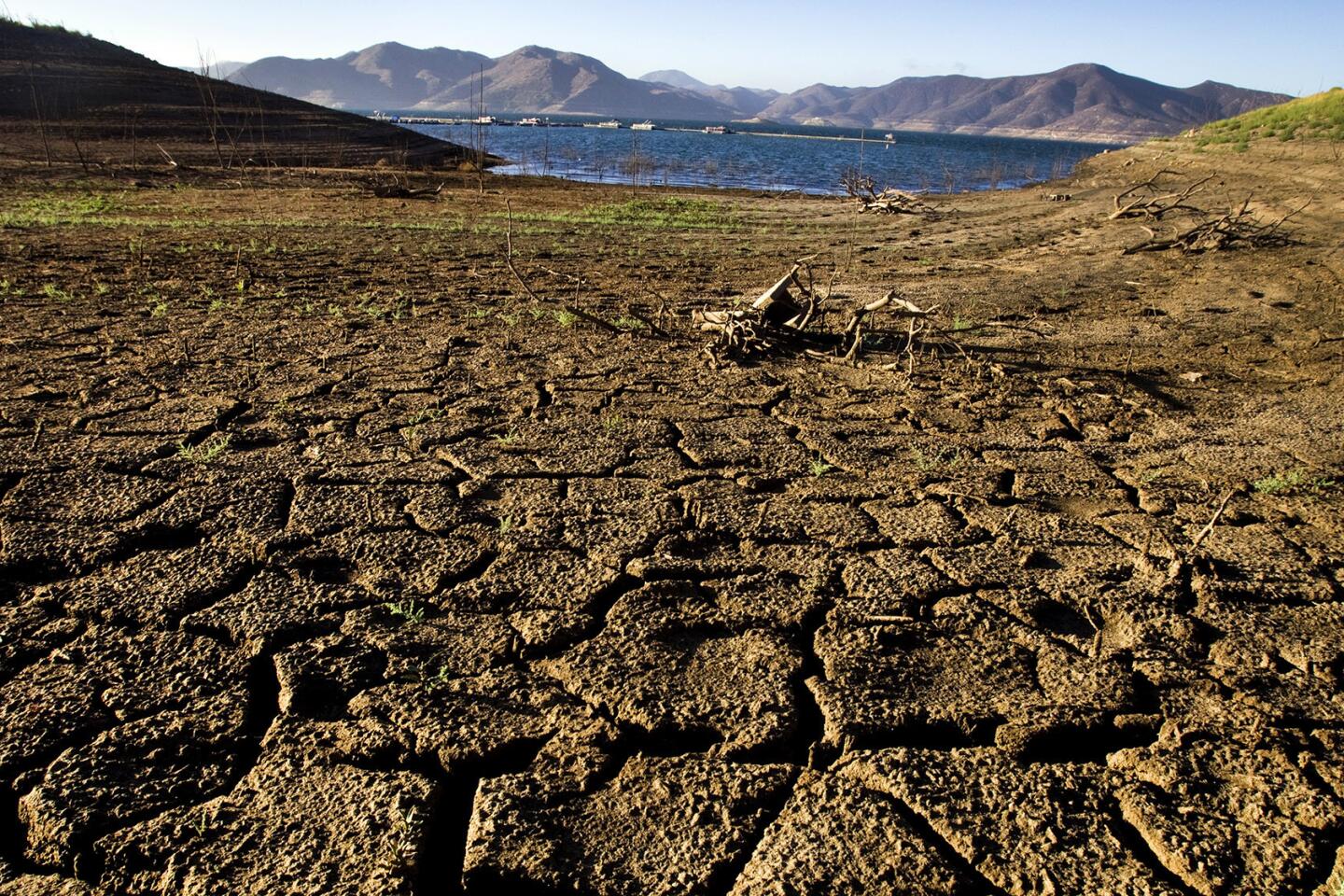
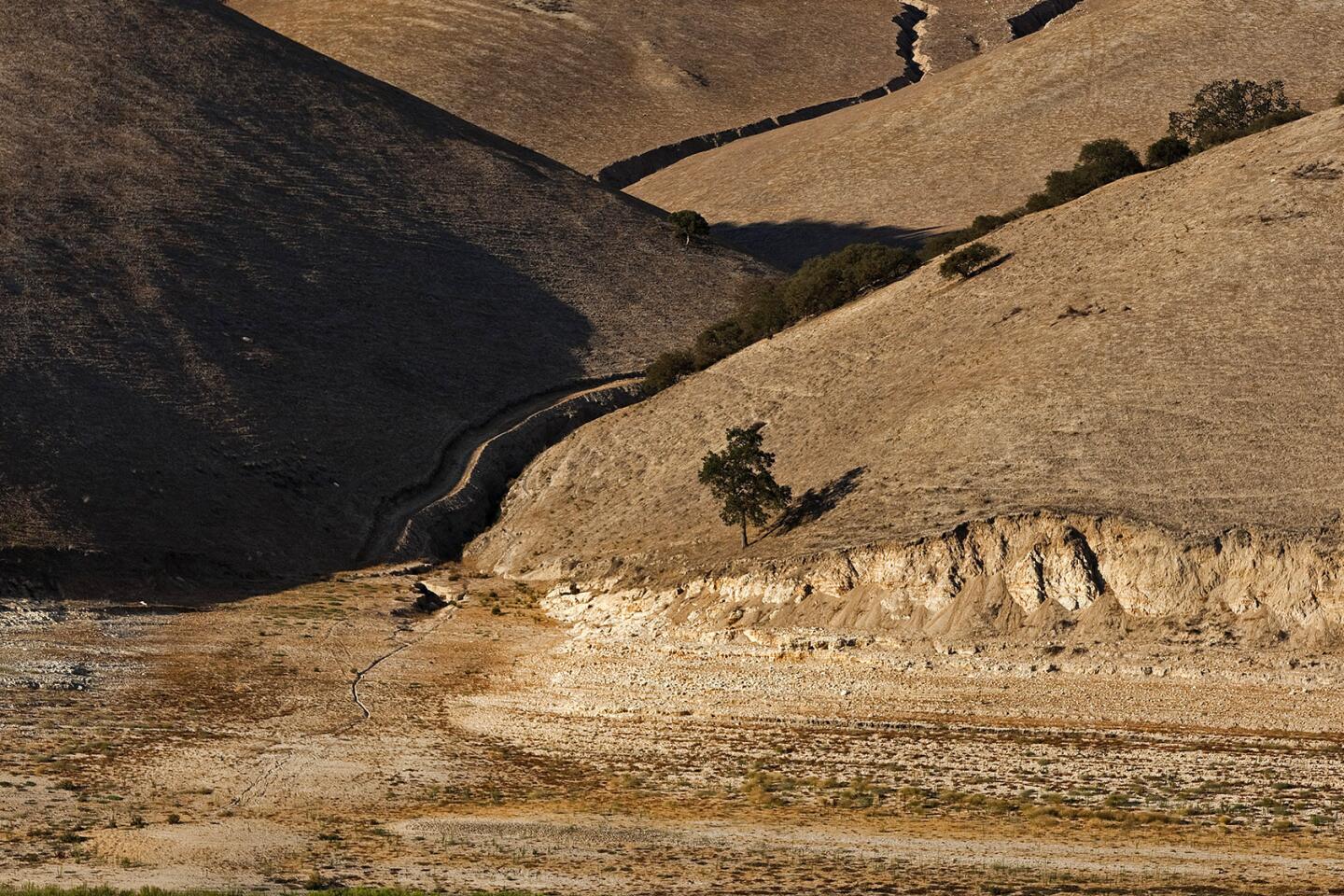
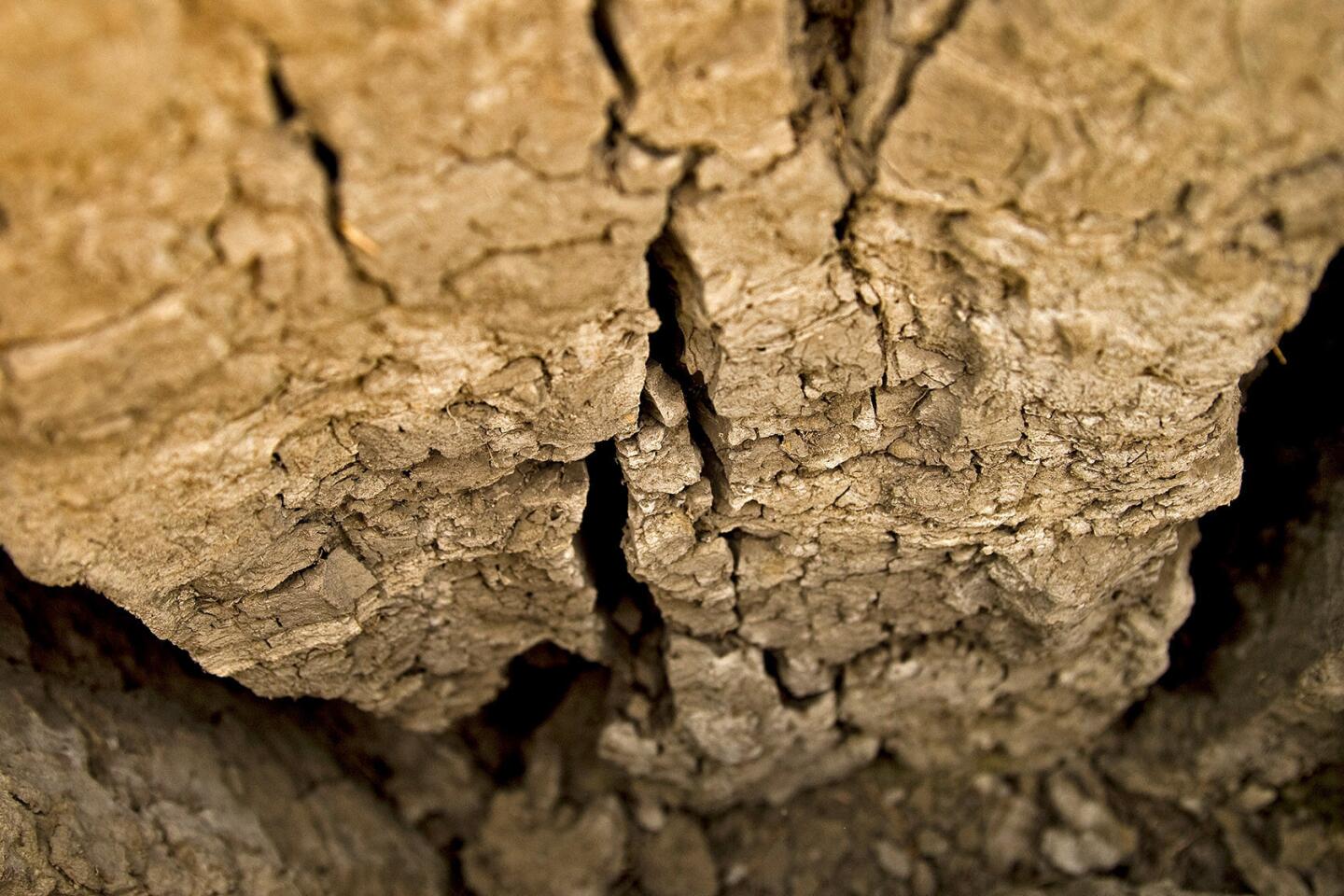
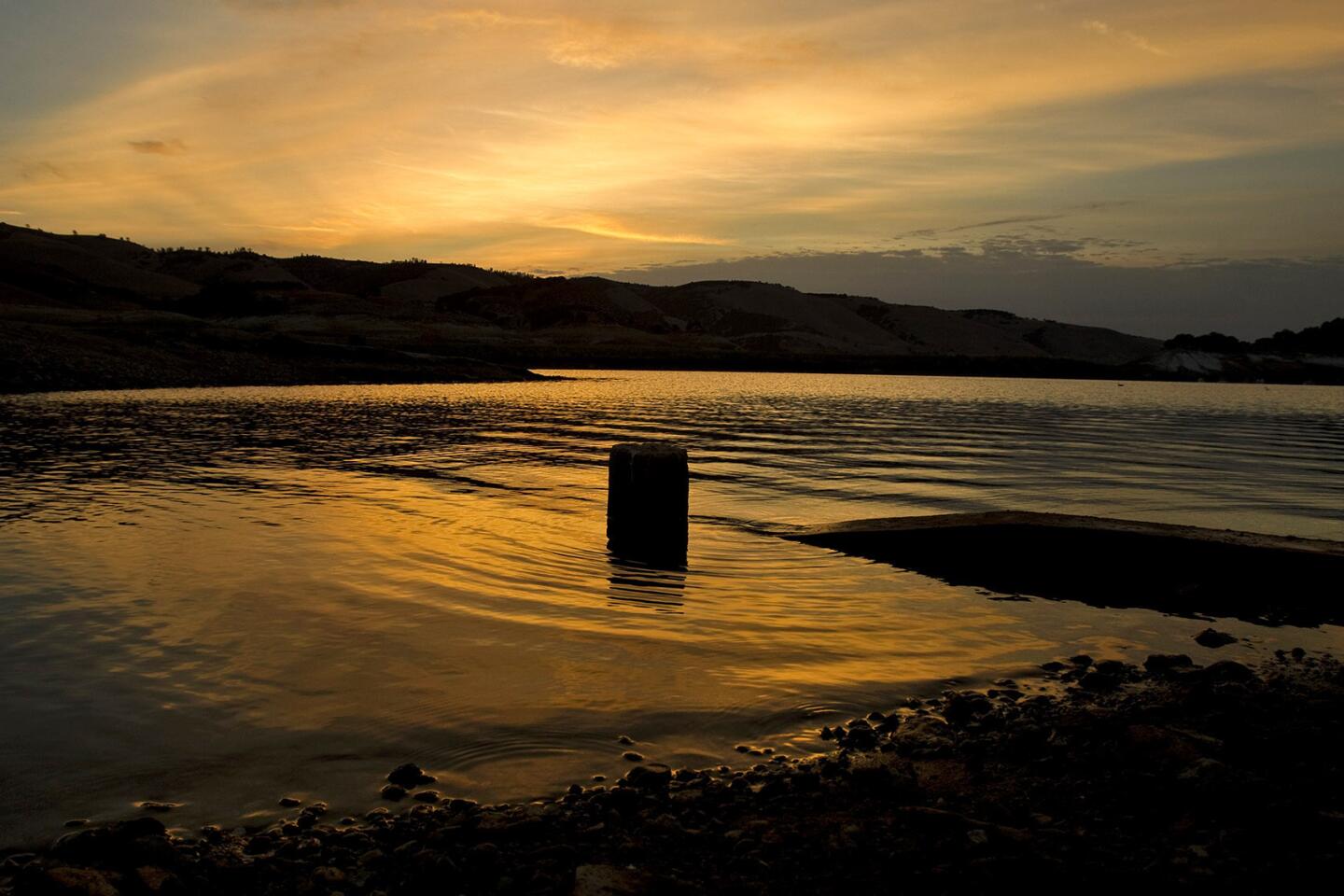
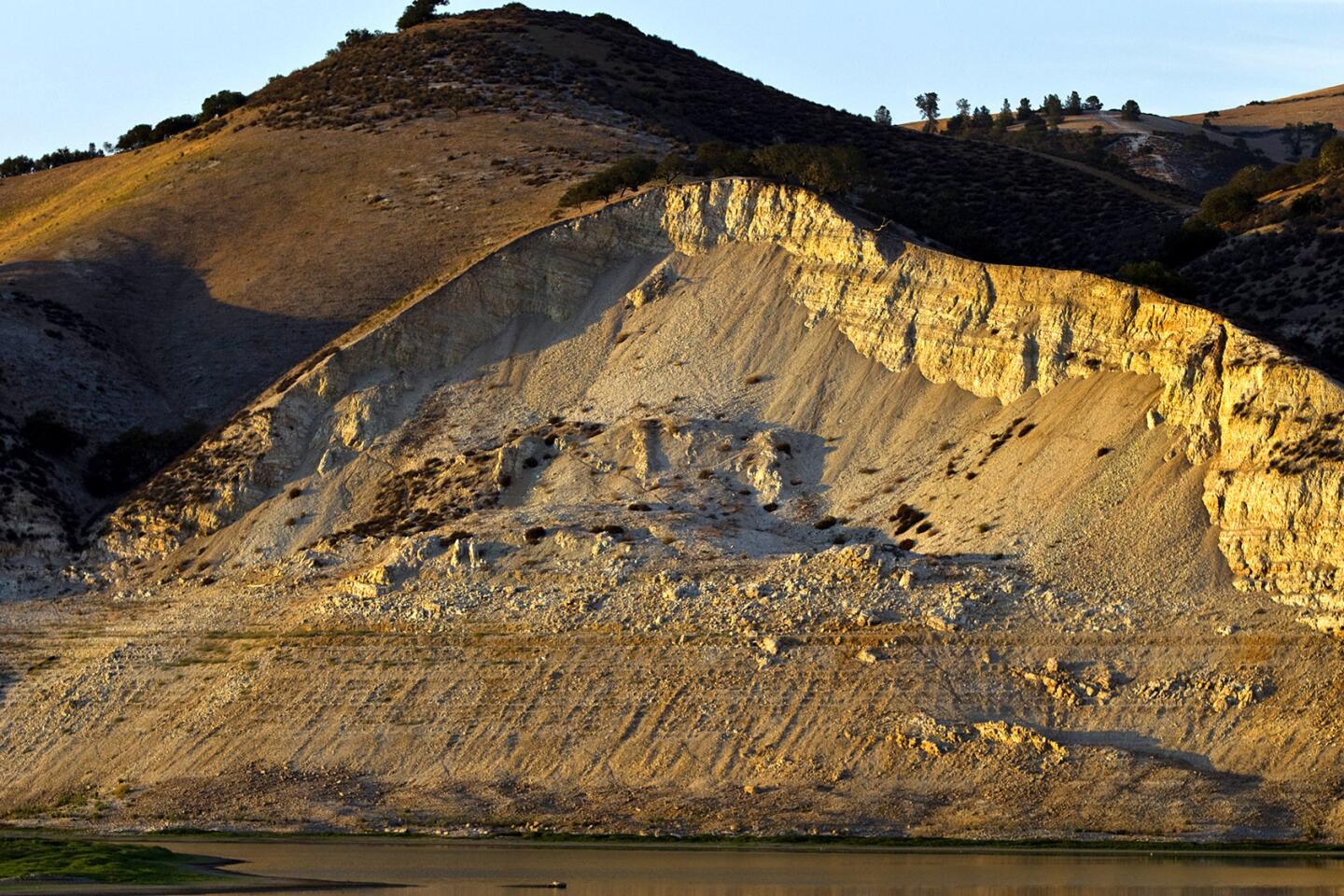
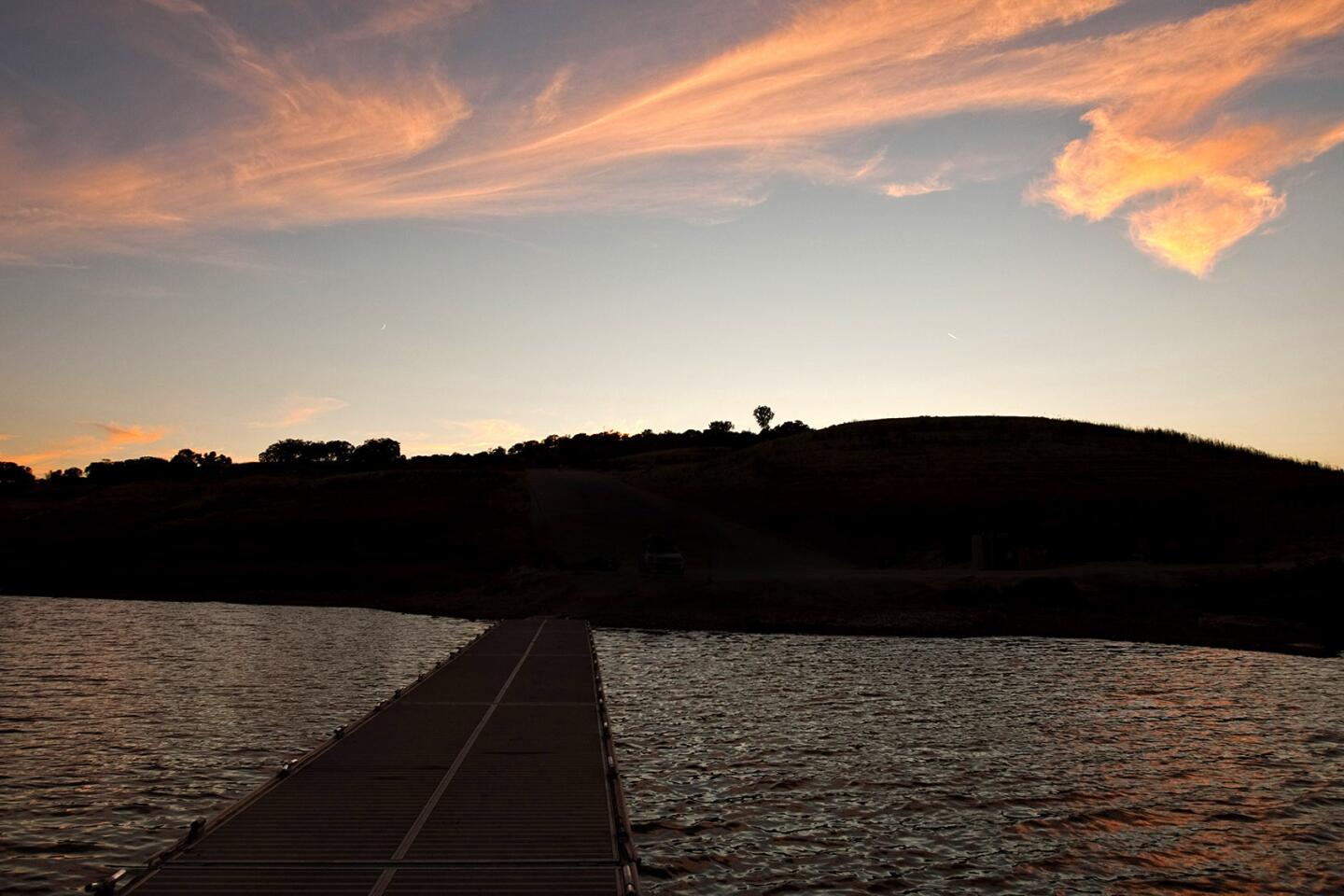
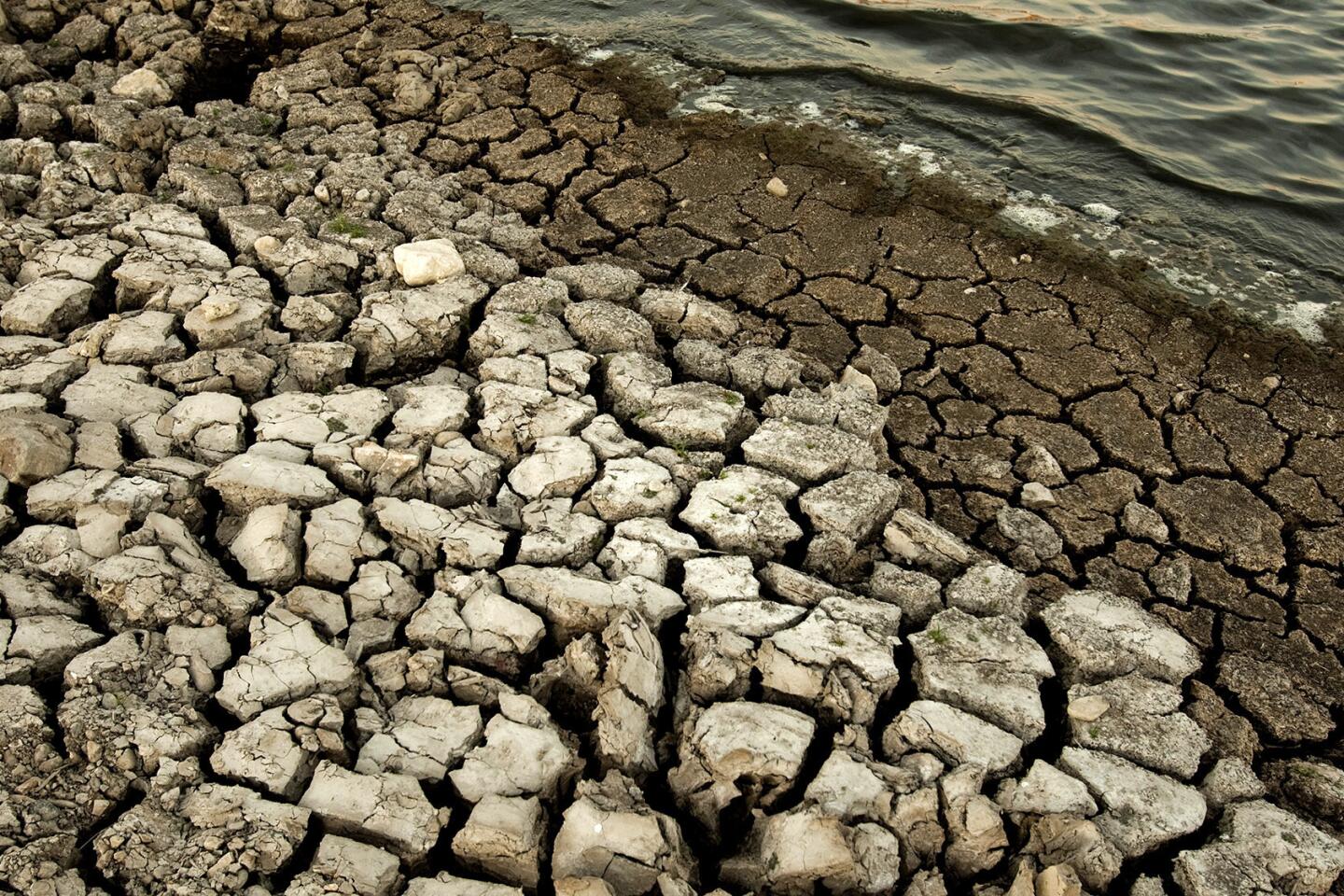
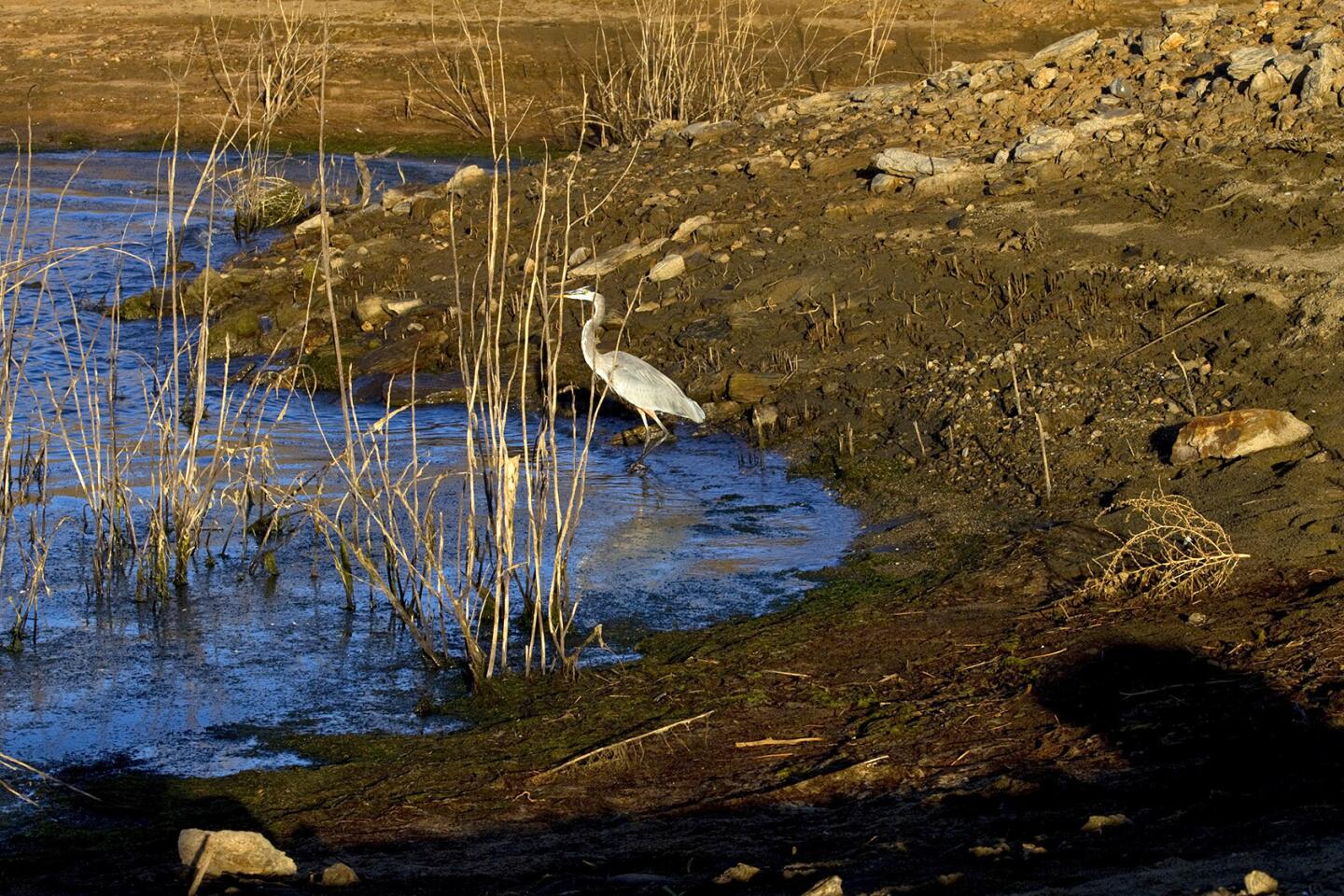

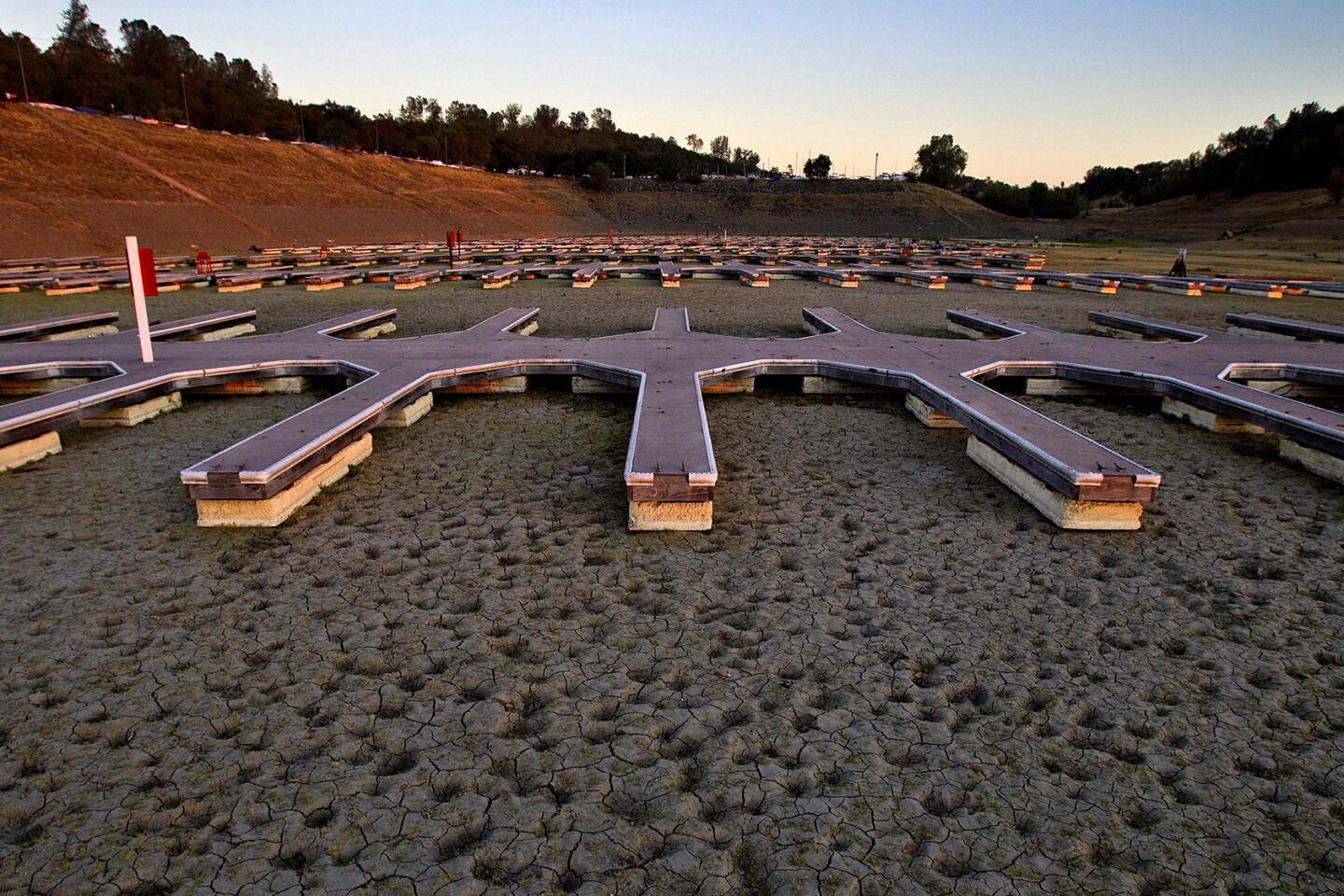
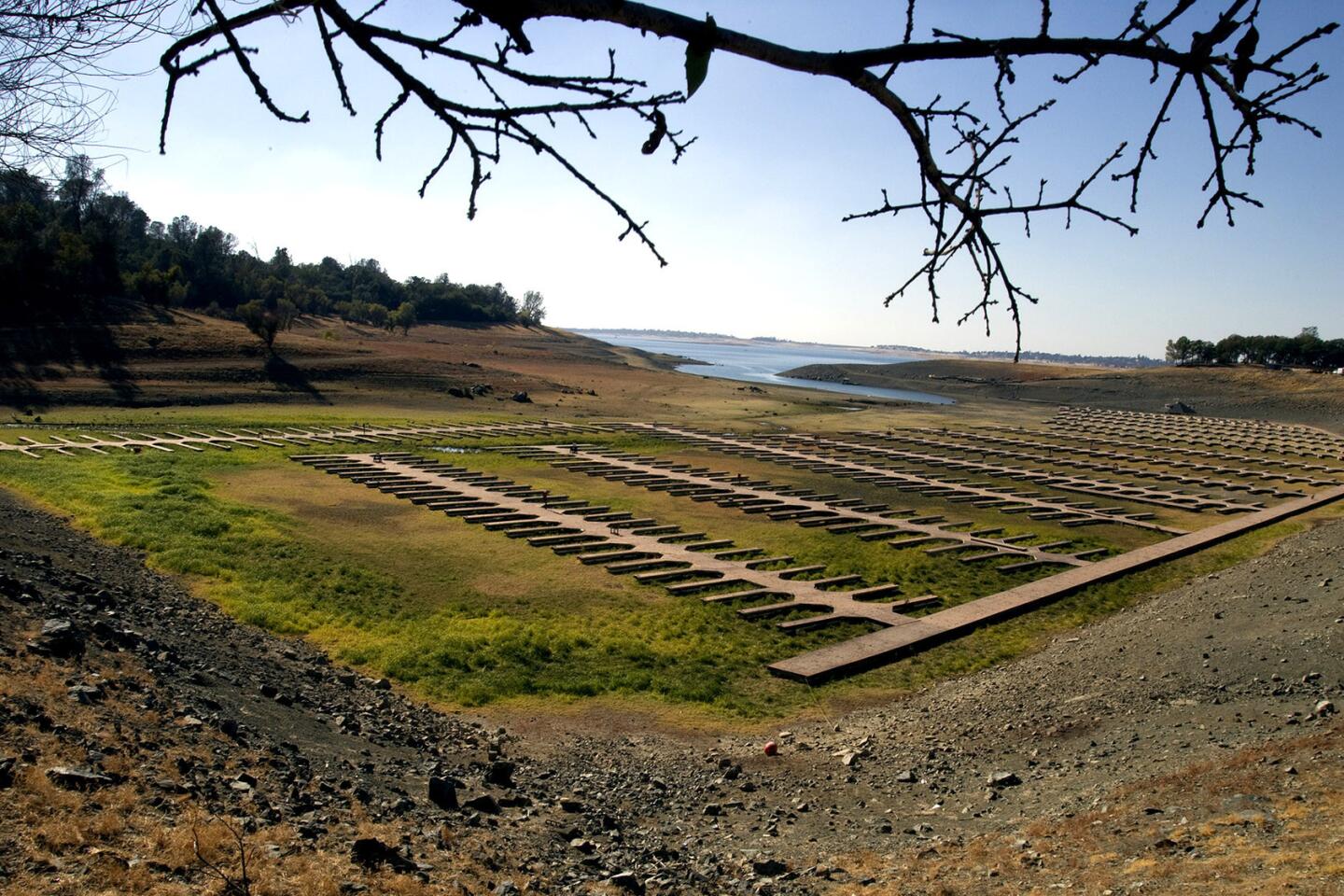
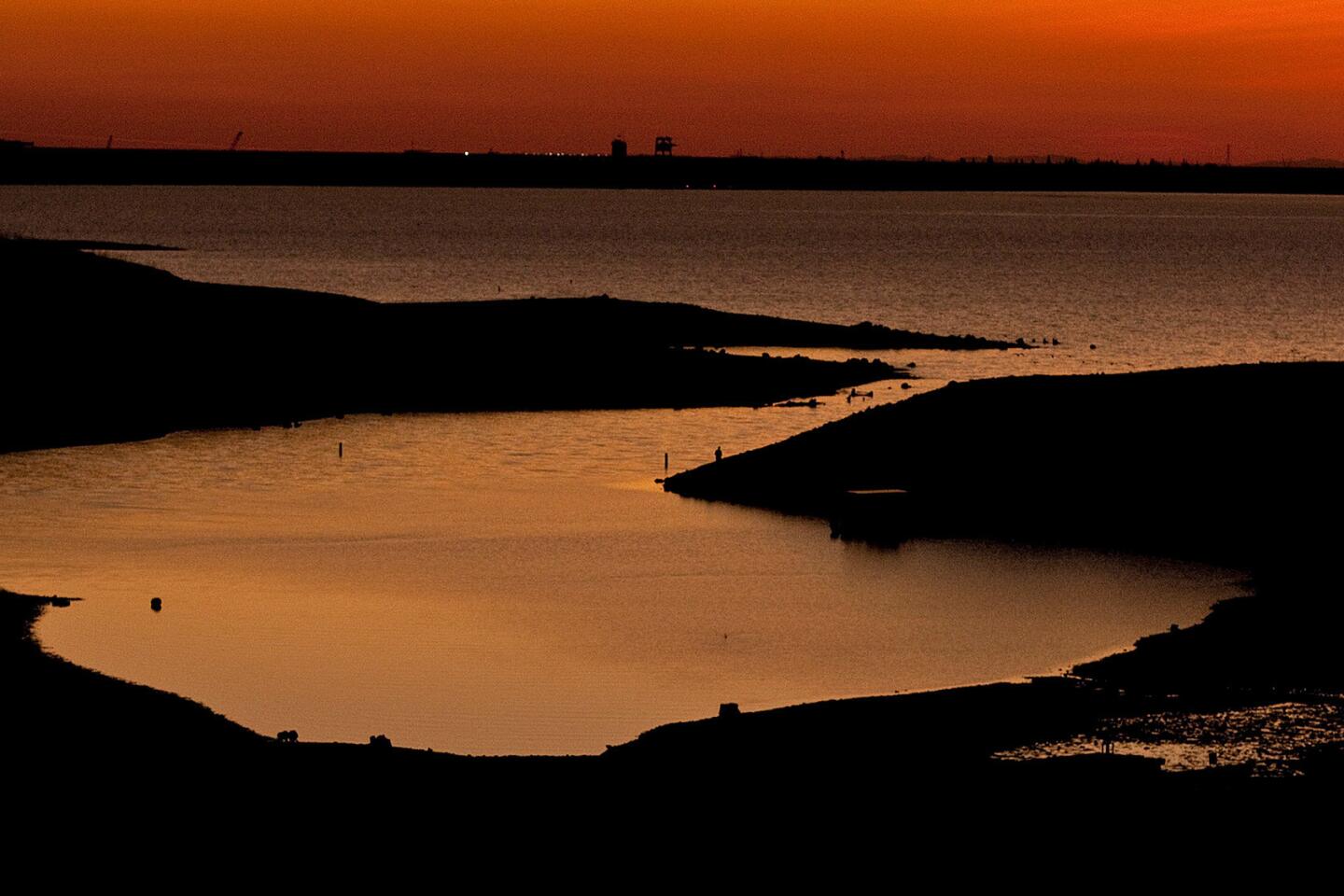
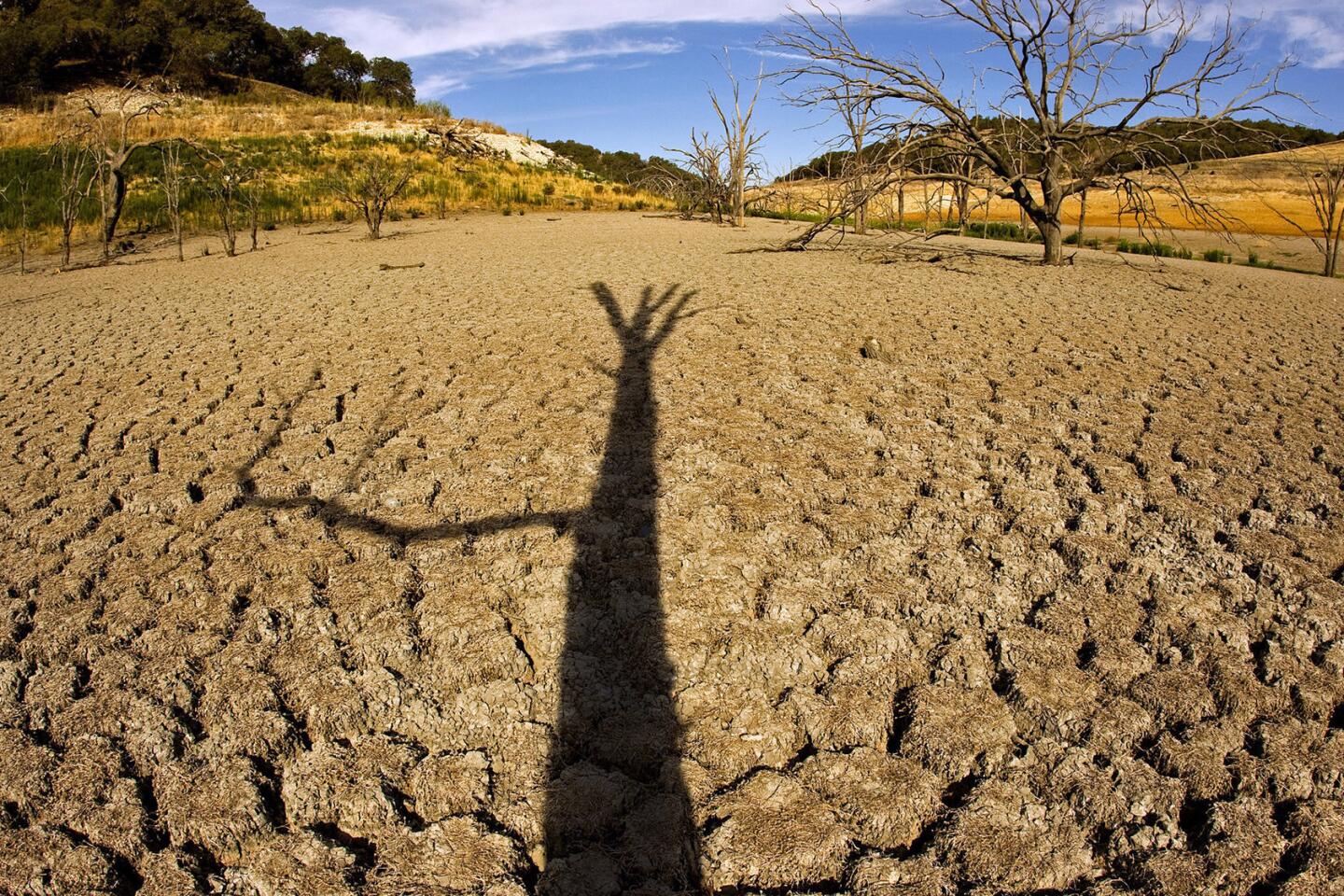
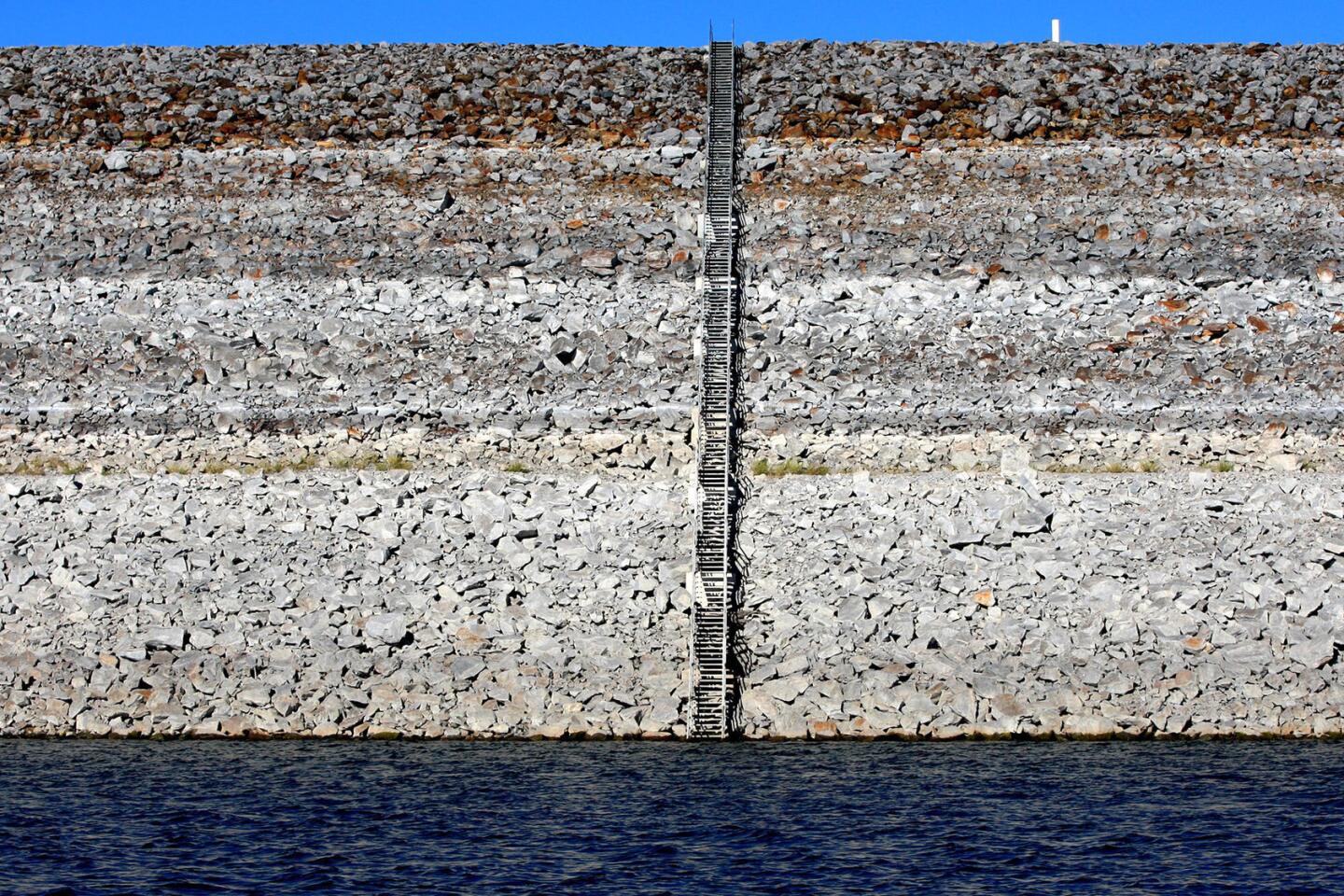
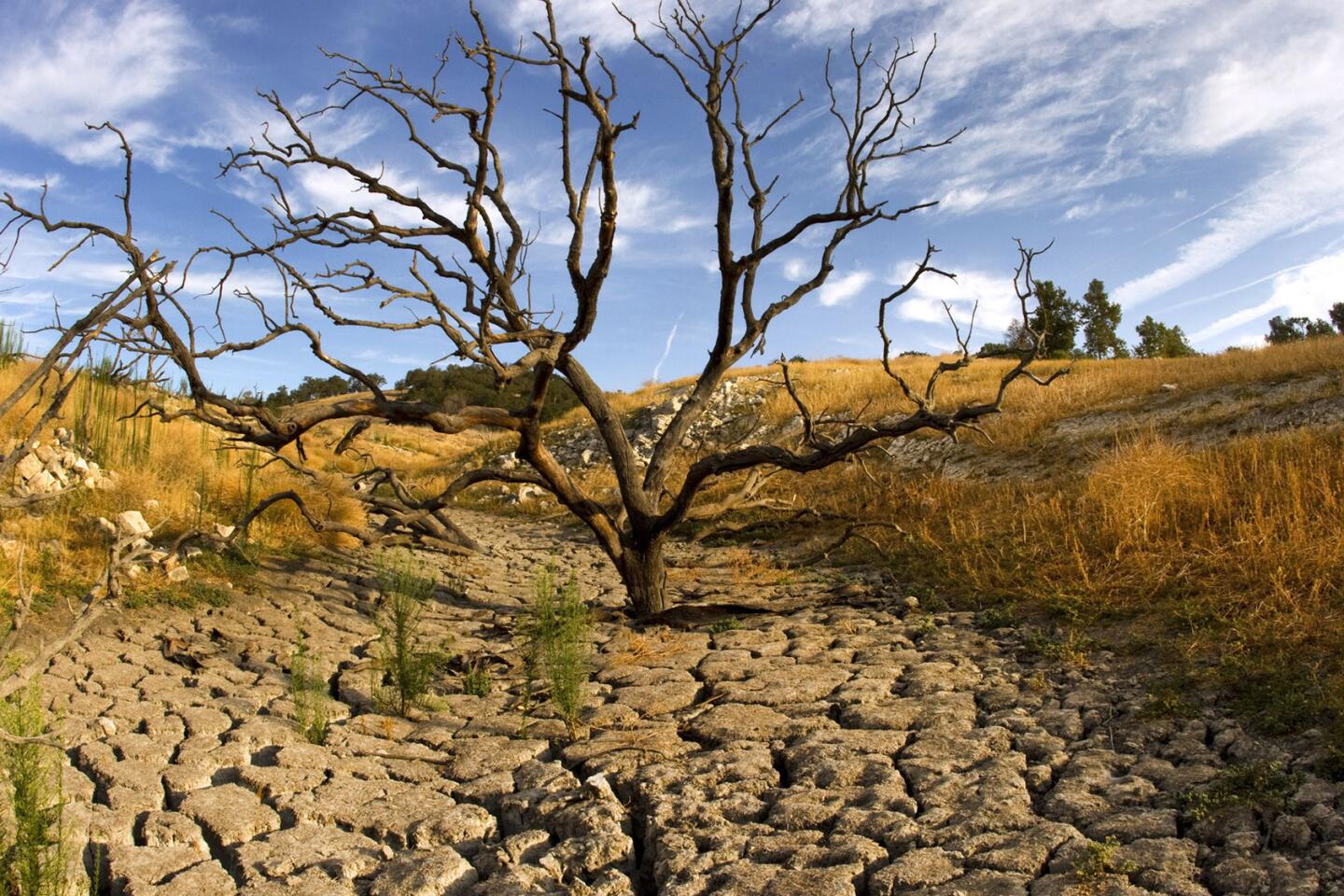

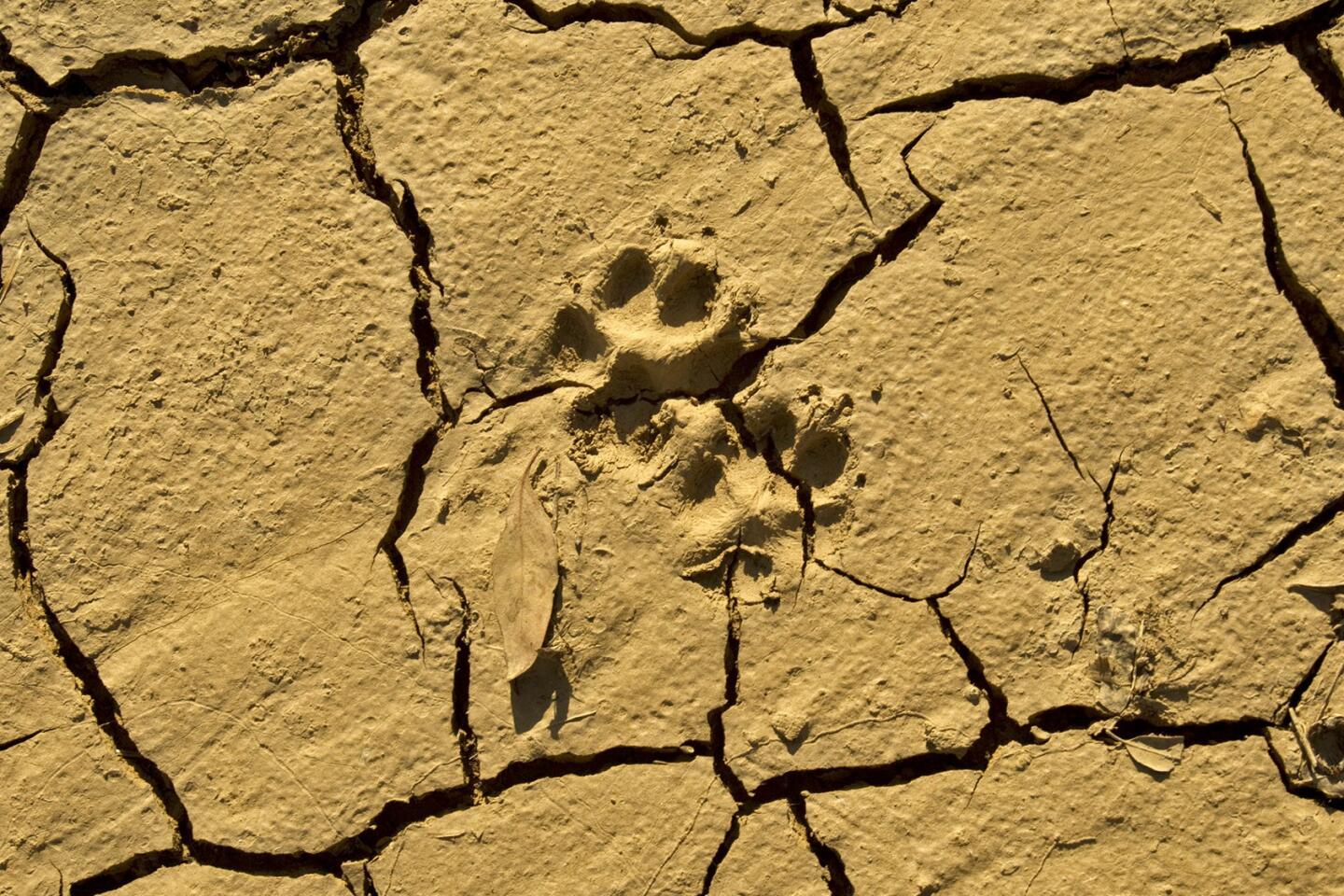
An animal’s footprint is molded into dry, cracked earth in a dry riverbed near a Castaic Lake bridge. Extremely low levels of water at sunrise at Castaic Lake and reveal the effects of the prolonged drought March 8, 2014.
(Allen J. Schaben / Los Angeles Times)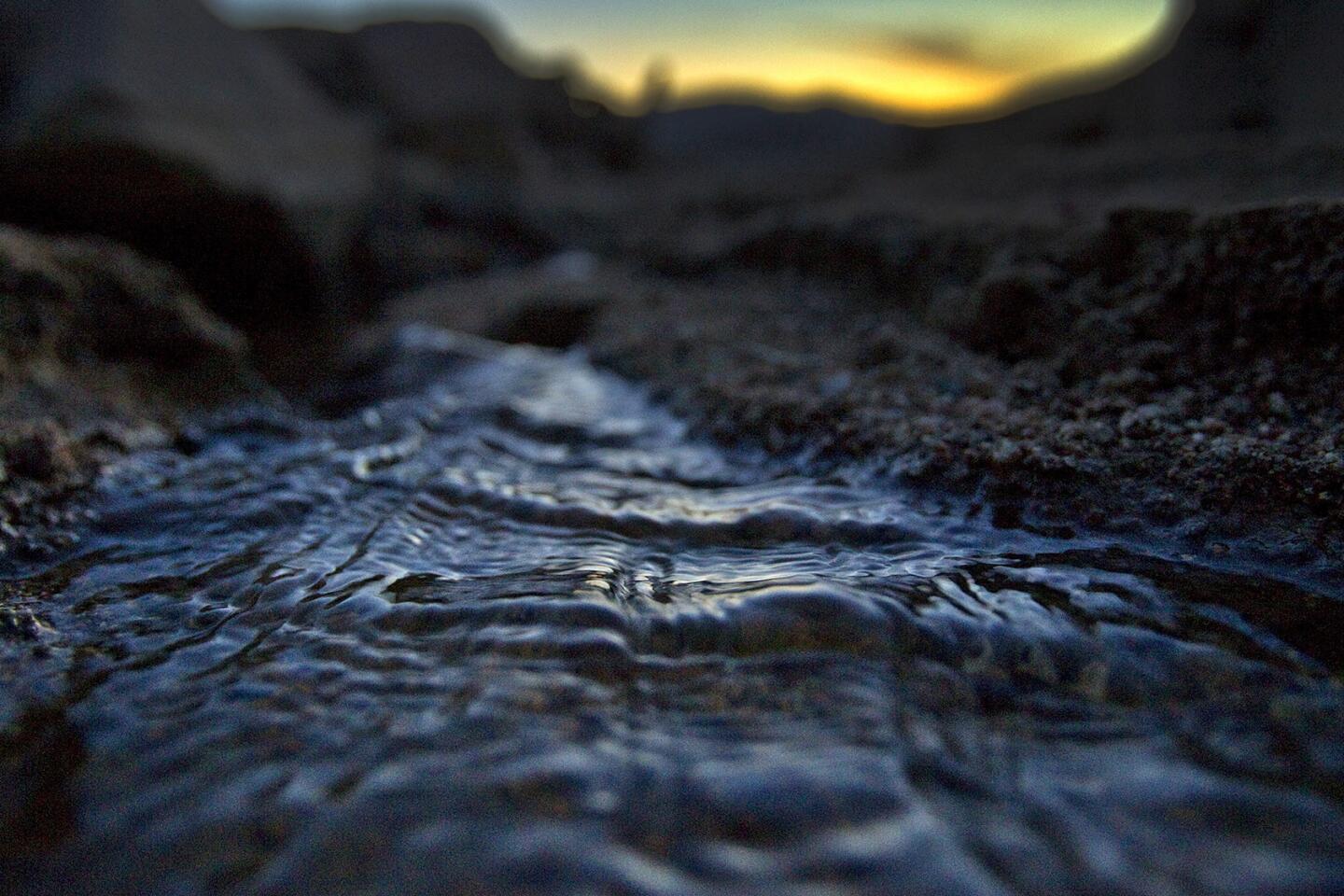
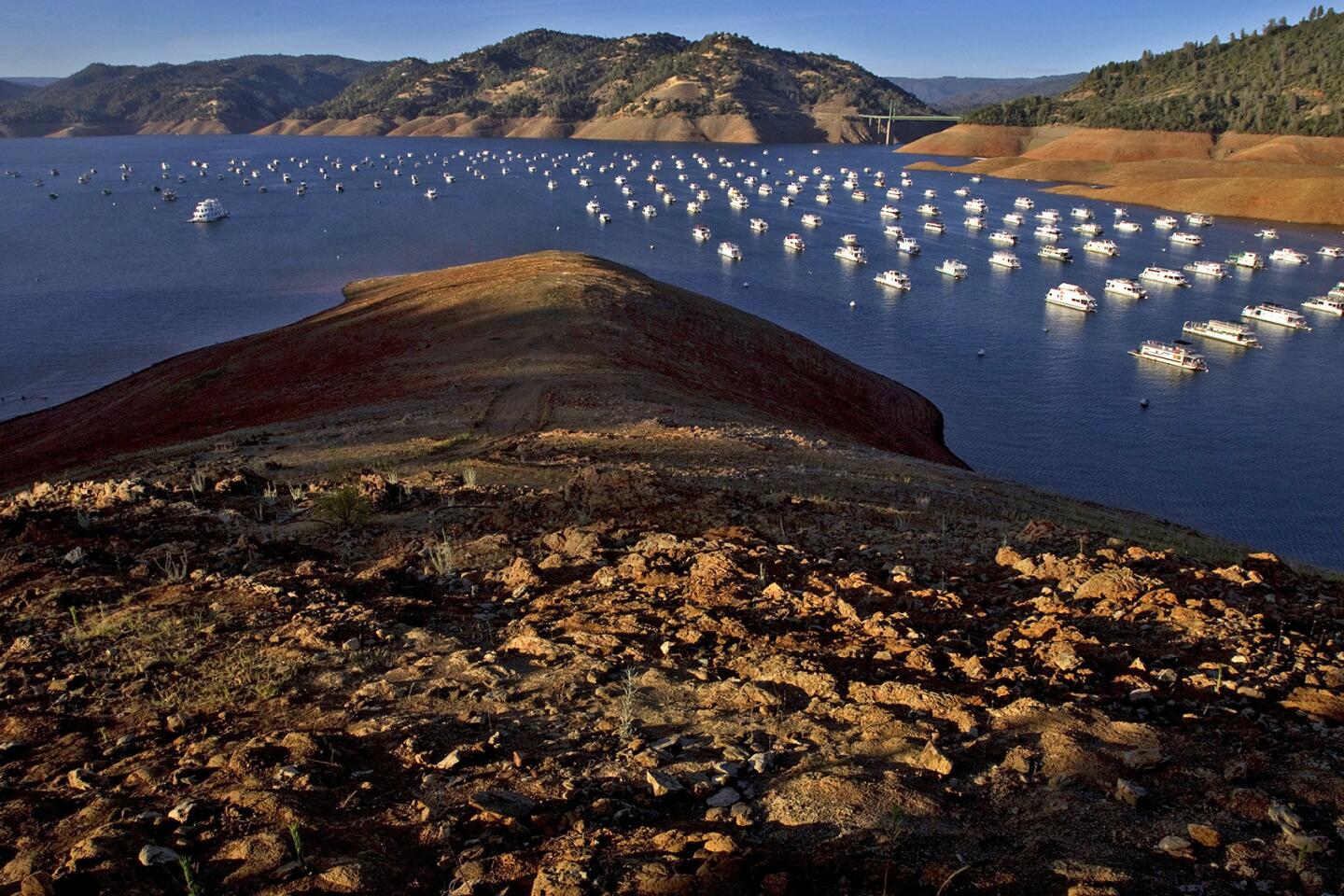

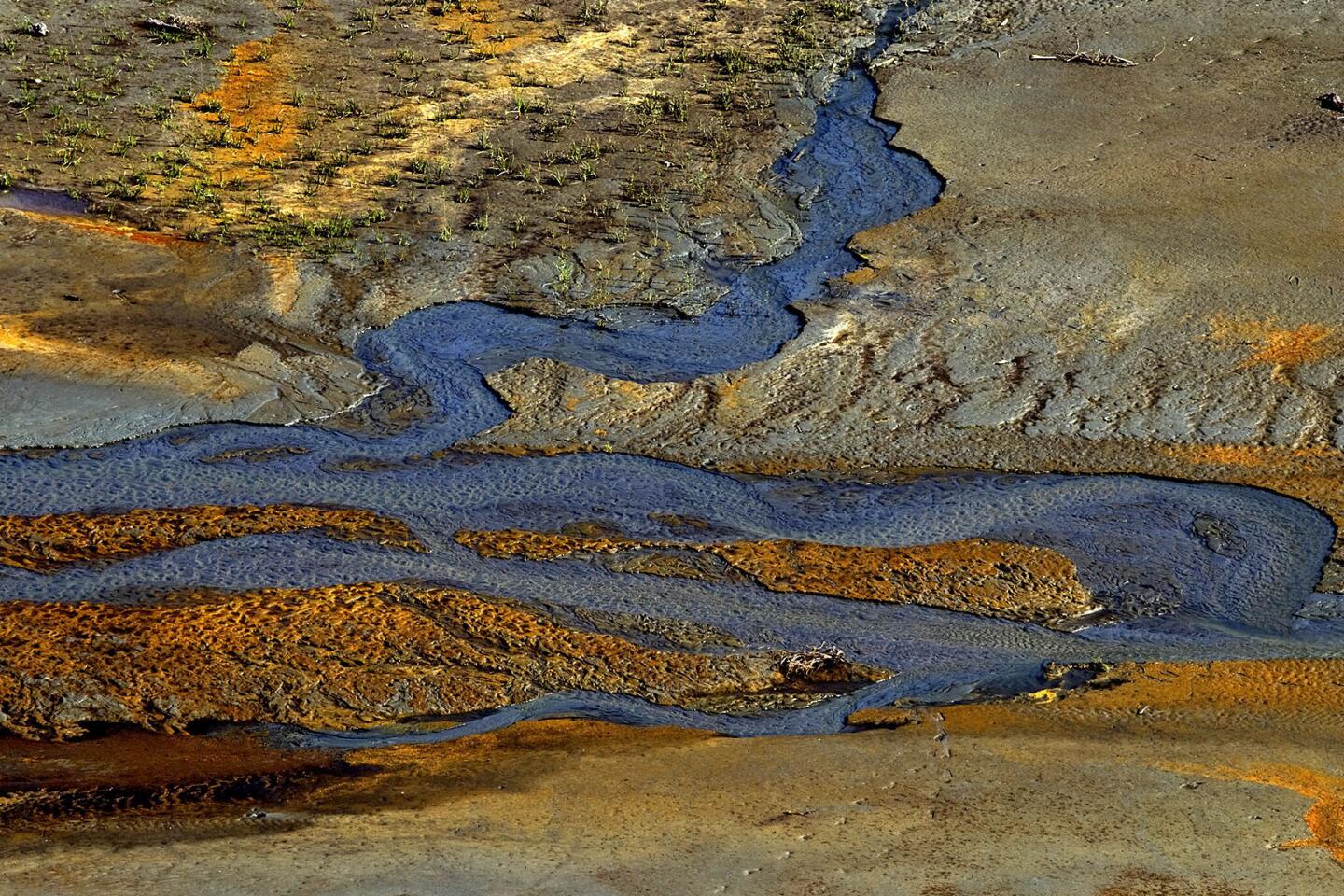
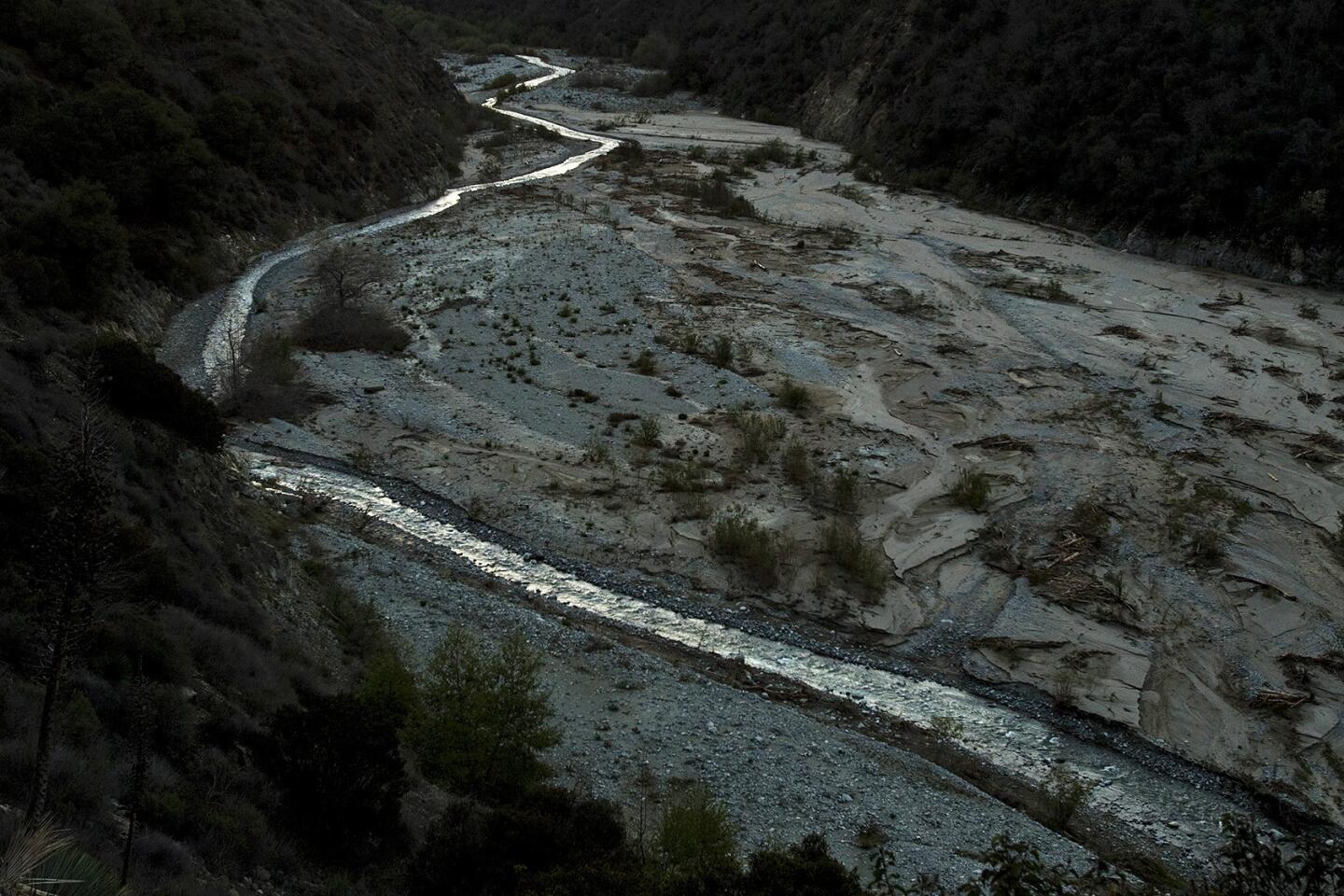
A pre-dawn glow illuminates a narrow, shallow meandering stream flowing in San Gabriel River’s East Fork in the Angeles National Forest, which reveal the effects of the prolonged drought March 12, 2014.
(Allen J. Schaben / Los Angeles Times)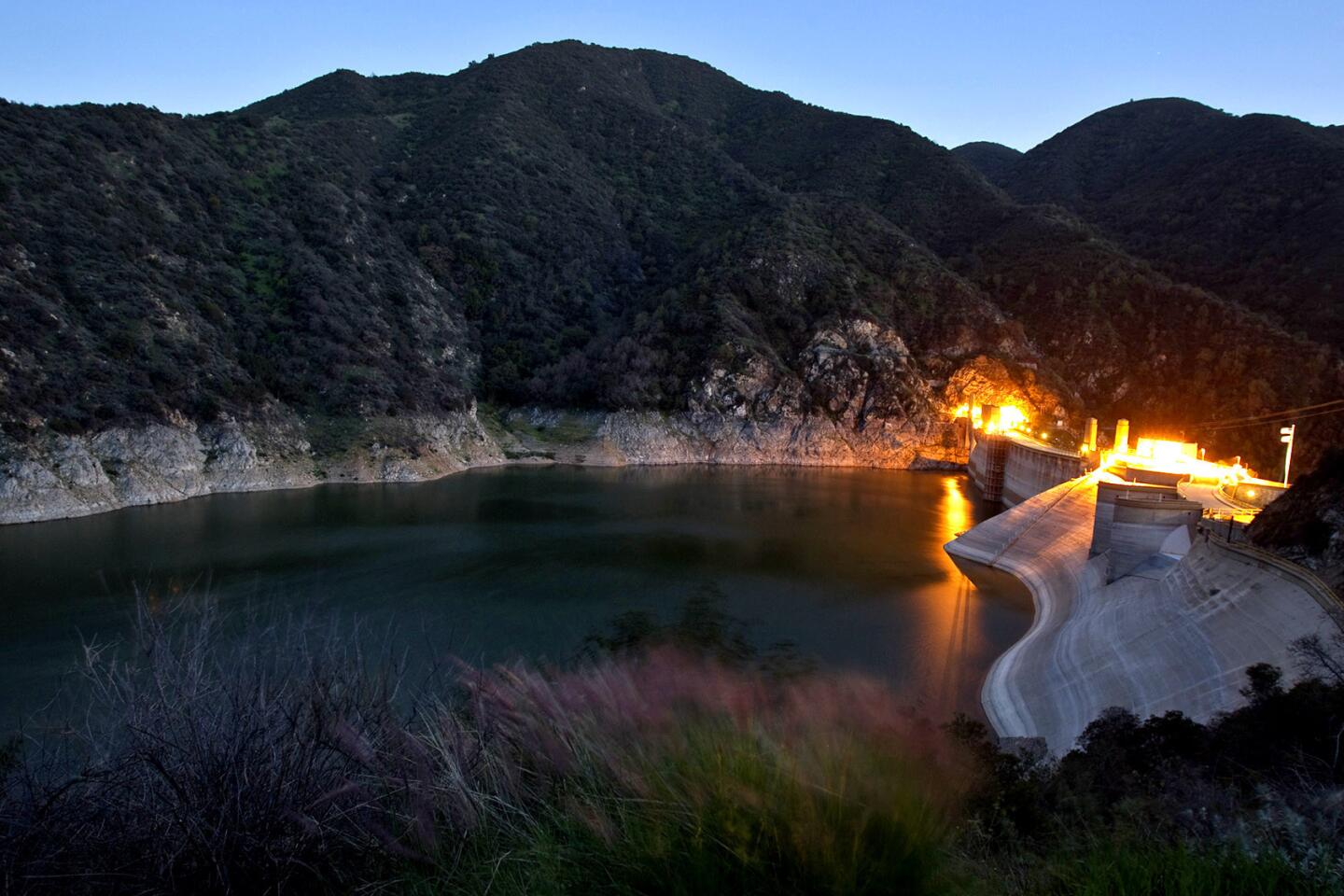
A white rocky ring reveals low levels of water in the Morris Dam, just north of Azusa in the Angeles National Forest, reflecting the effects of the prolonged drought March 12, 2014.
(Allen J. Schaben / Los Angeles Times)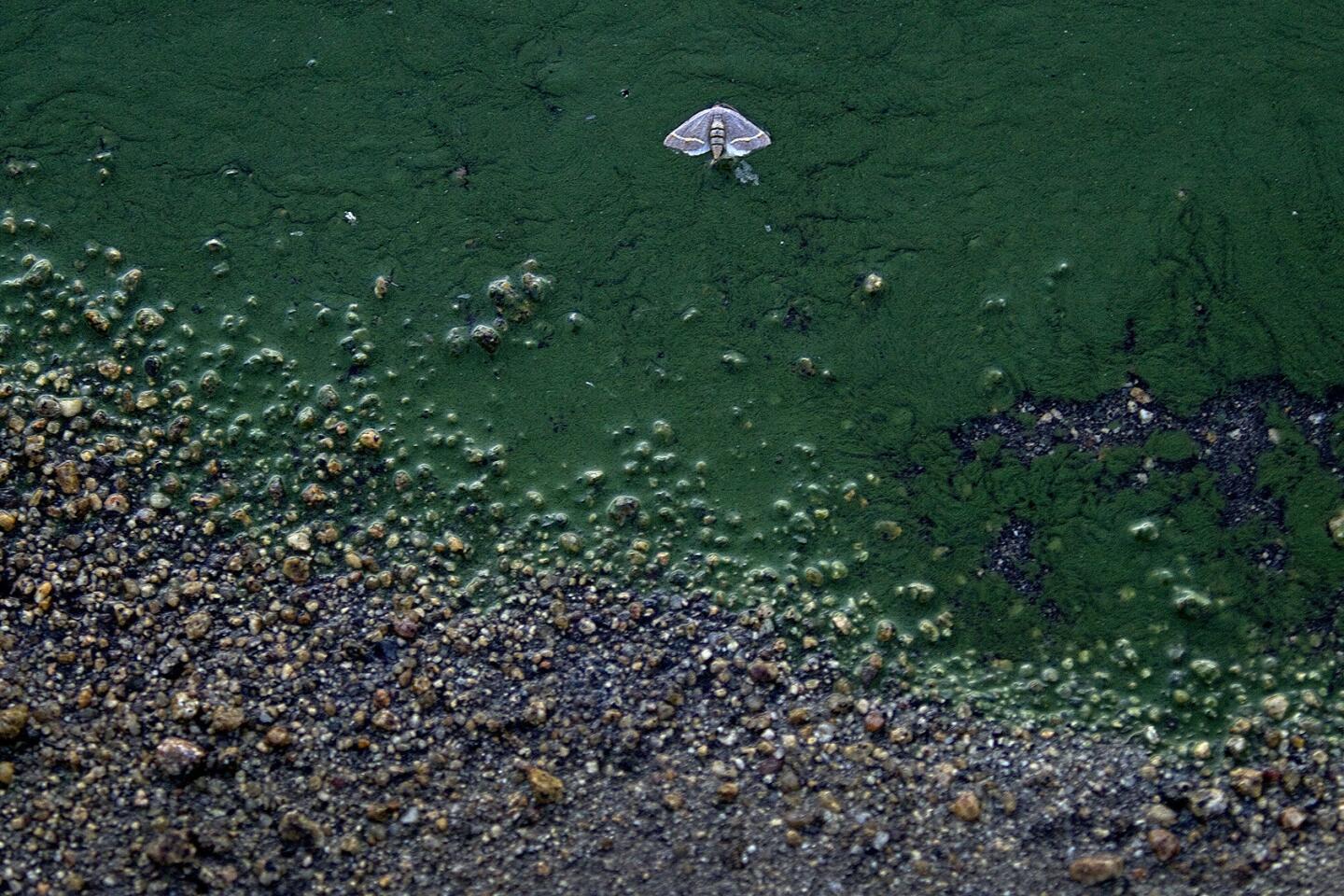

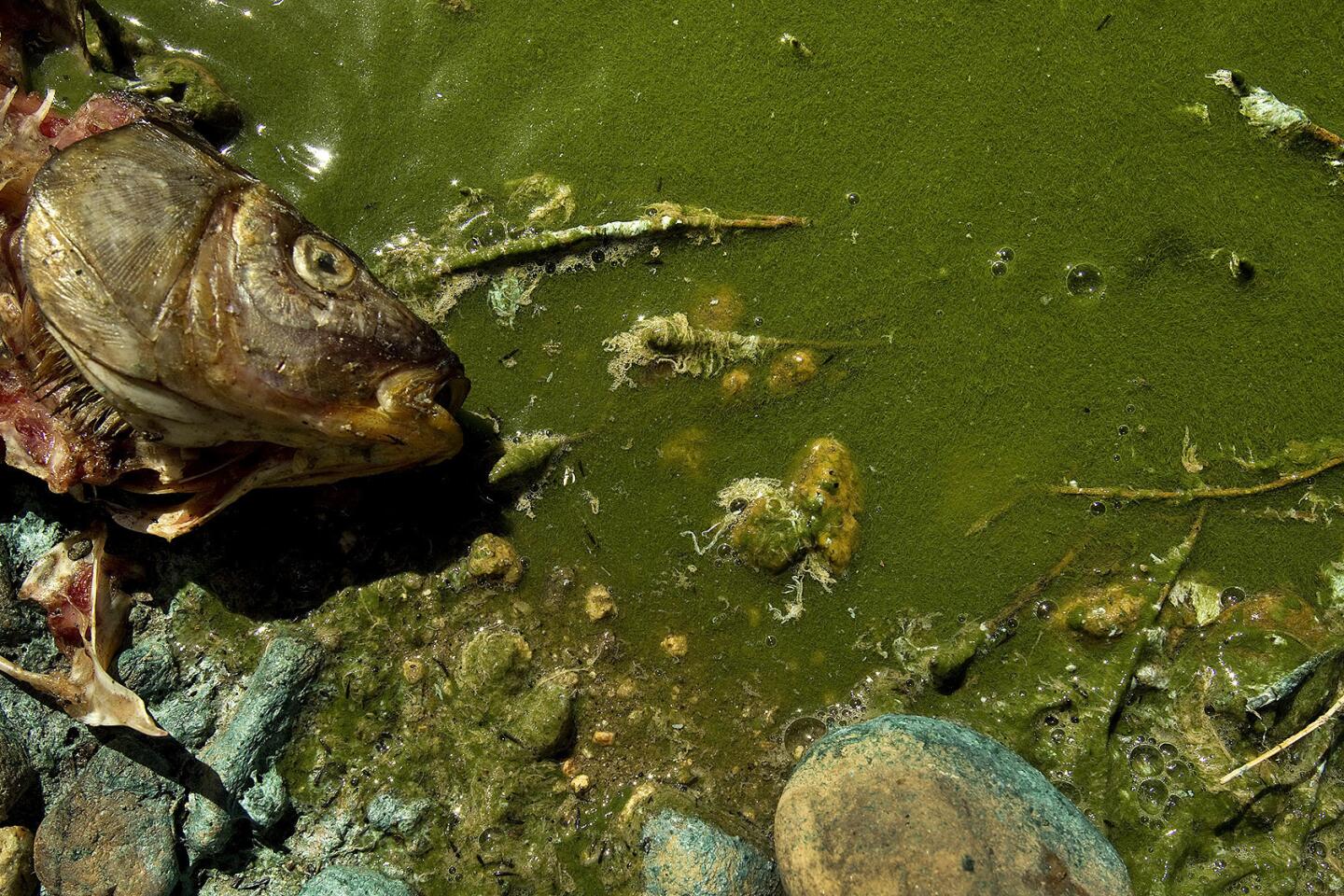
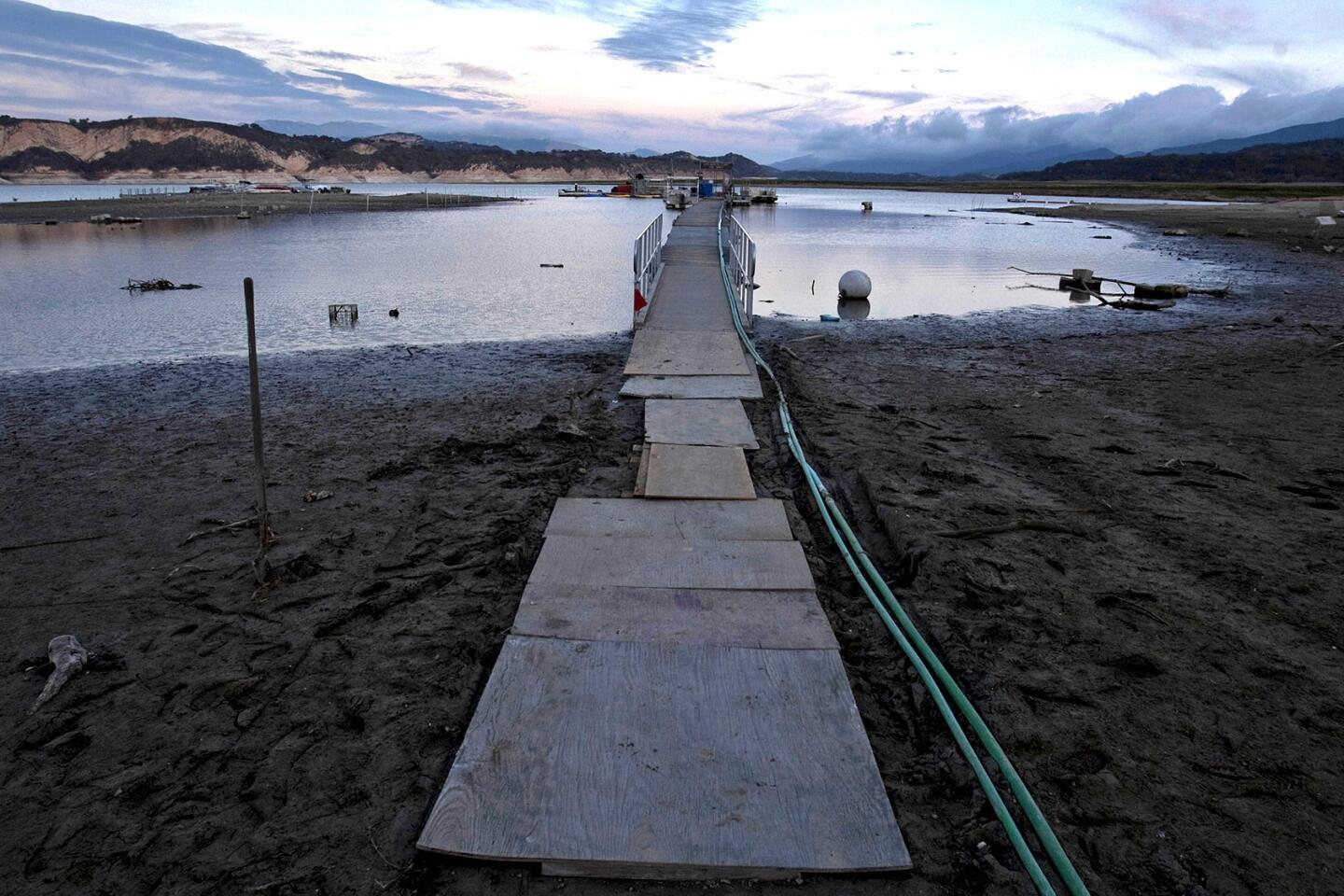
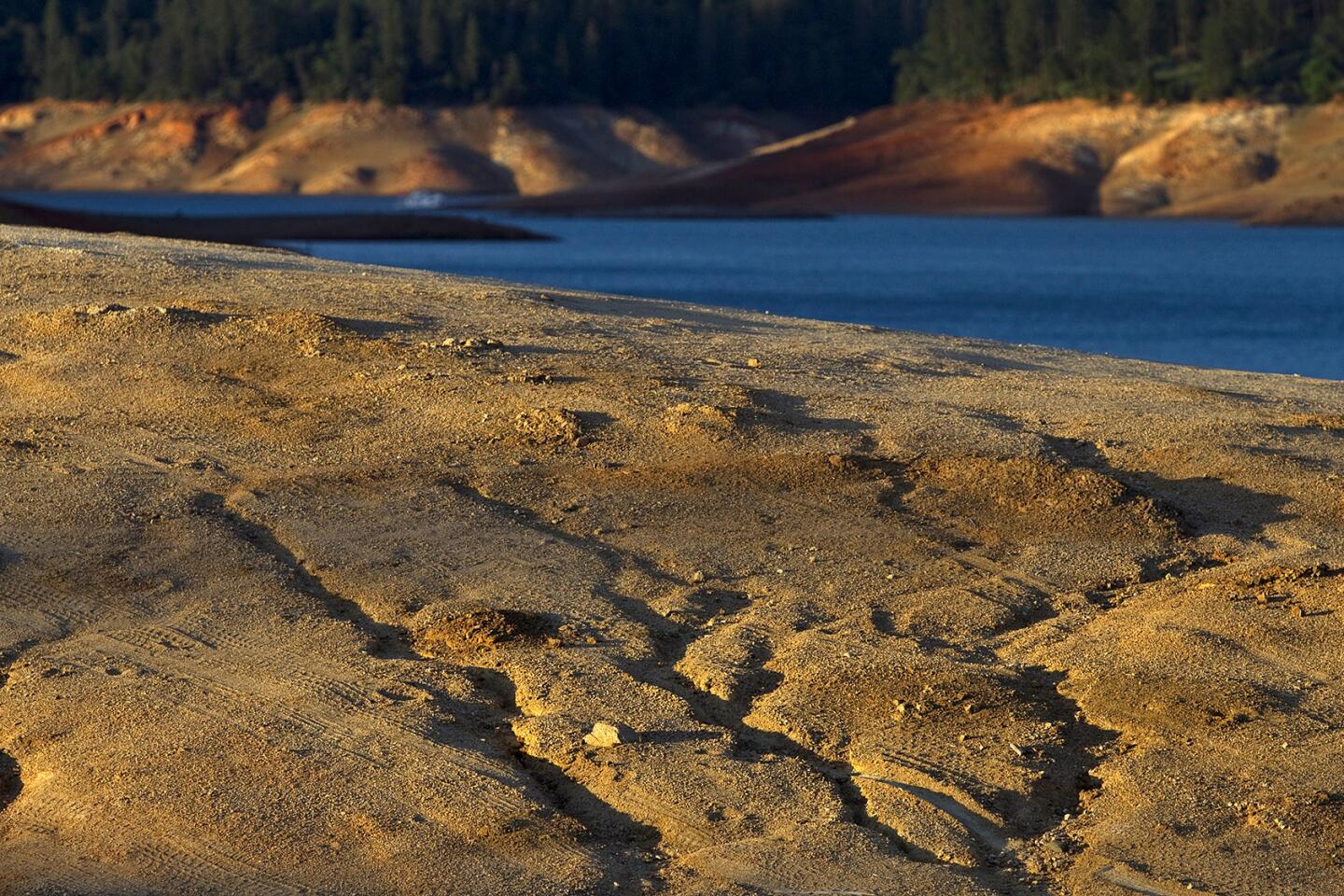
Dry ruts in a island reveal where the water level used to be at Lake Shasta due to serious drought conditions. Lake Shasta is at 31% of capacity due to the ongoing drought and is likely to get worse.
(Allen J. Schaben / Los Angeles Times)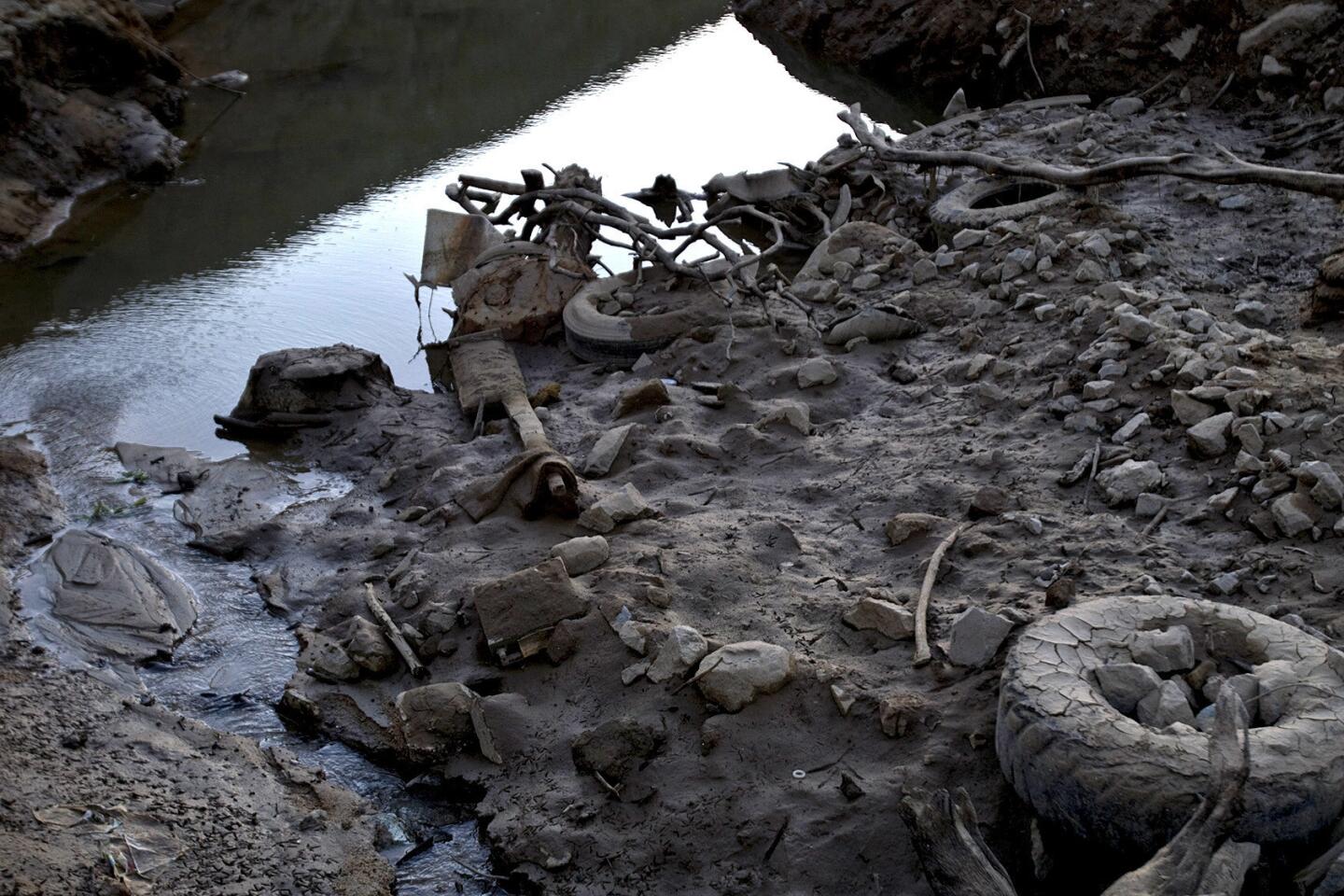
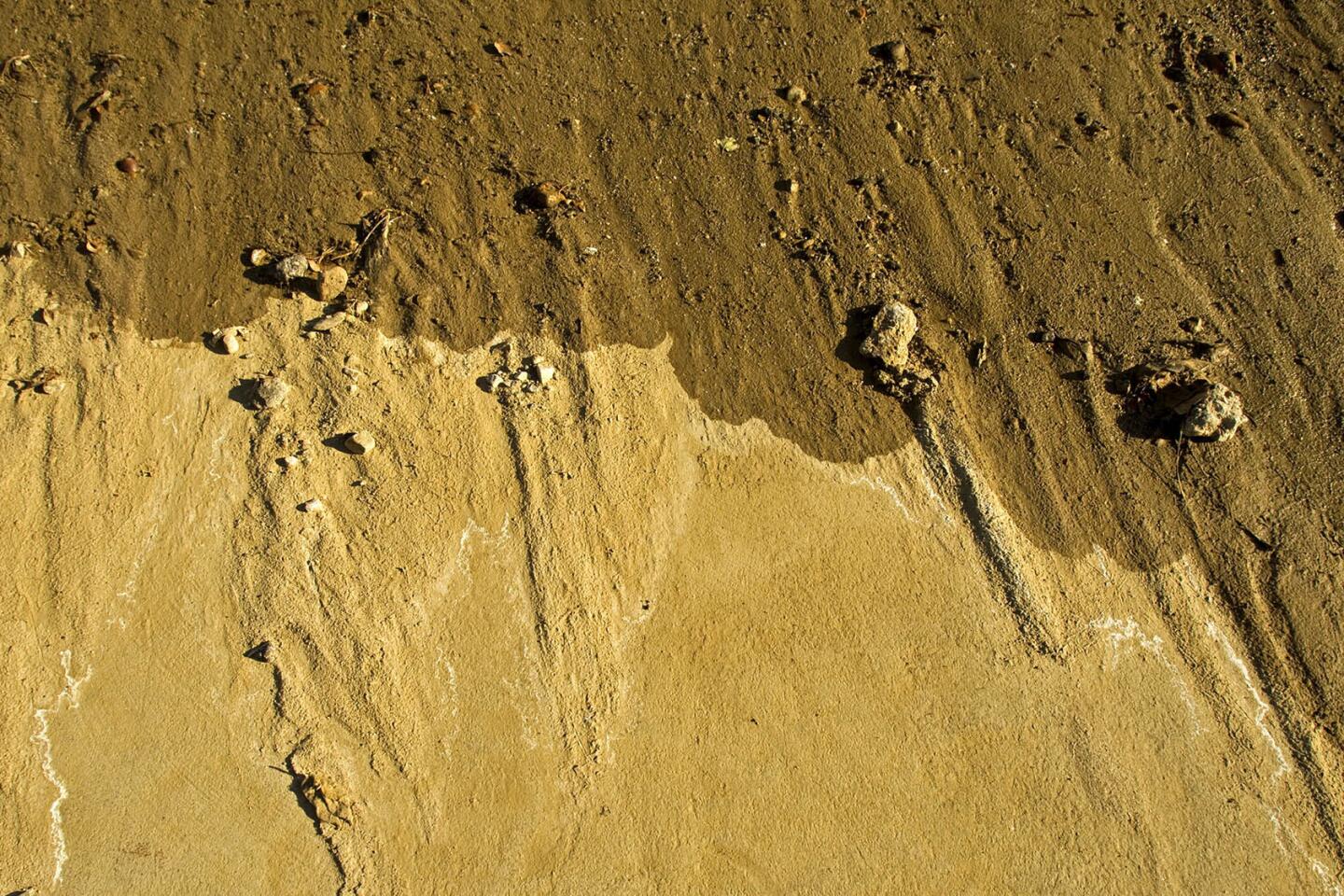
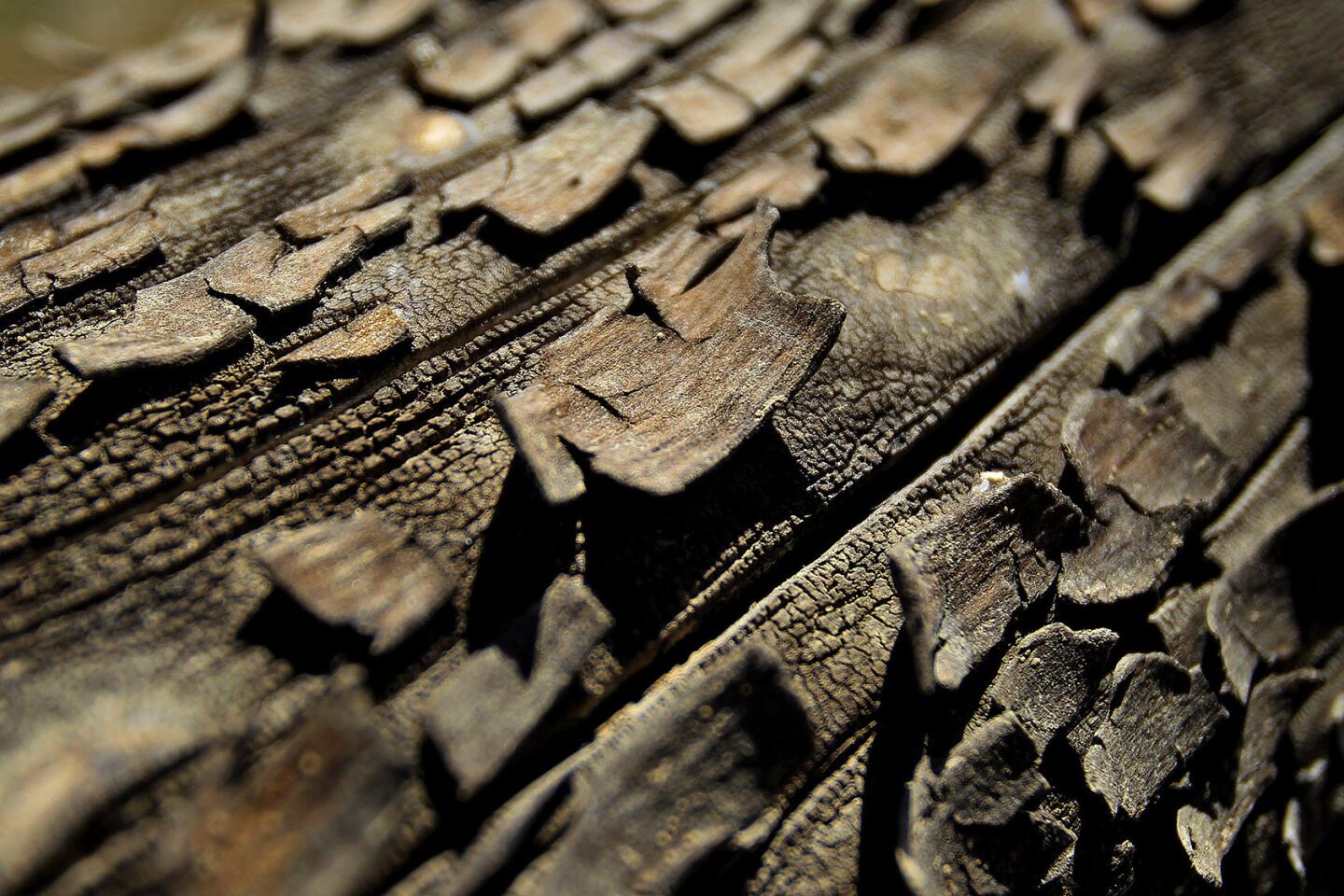
Severe drought conditions are evident as dried bark peels in the hot sun where water levels are down 160 feet from the high water mark at Lake Oroville June 21, 2014. Officials say Lake Oroville is at 43% capacity and likely to get worse, but is not as bad as the drought of 1976-77.
(Allen J. Schaben / Los Angeles Times)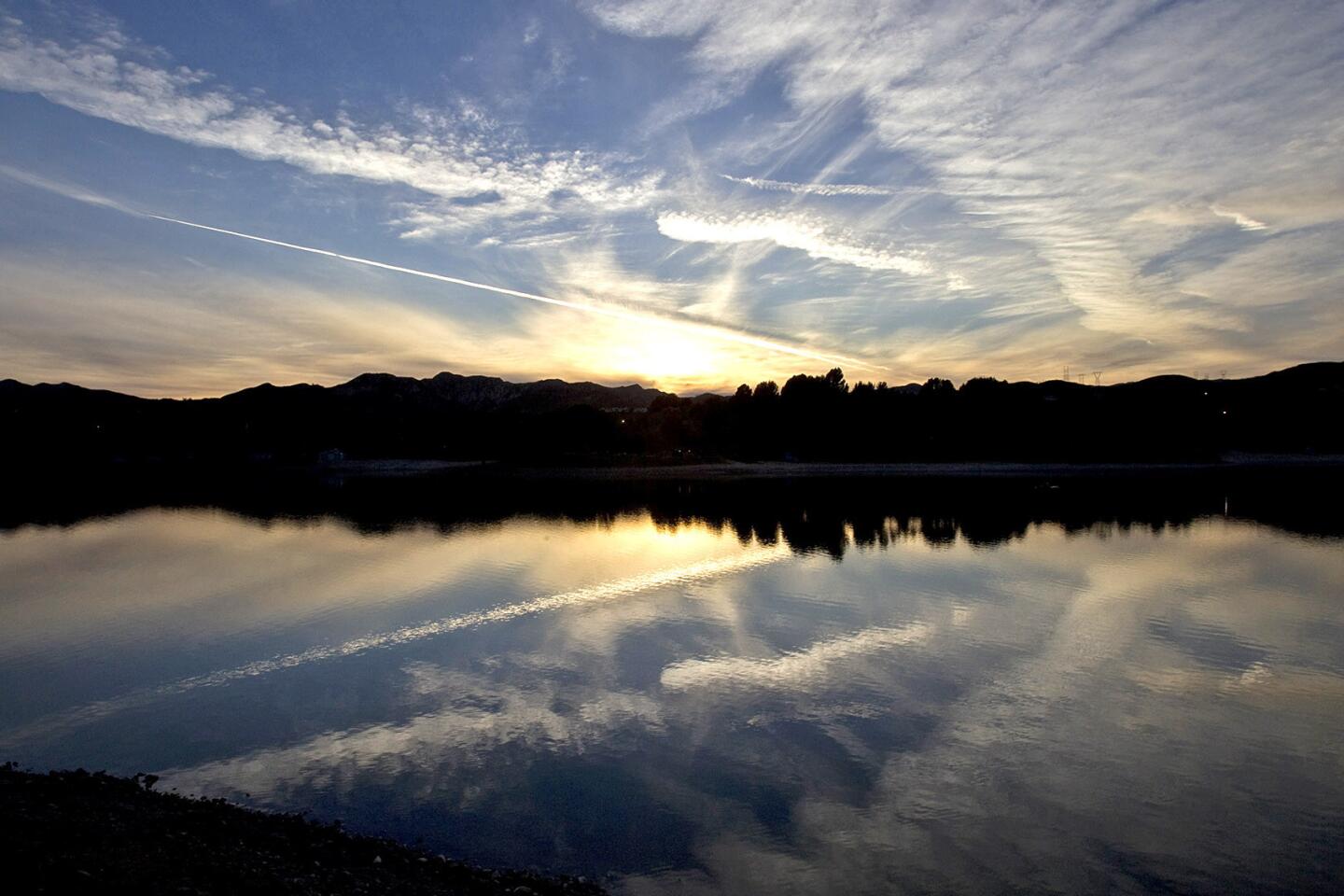
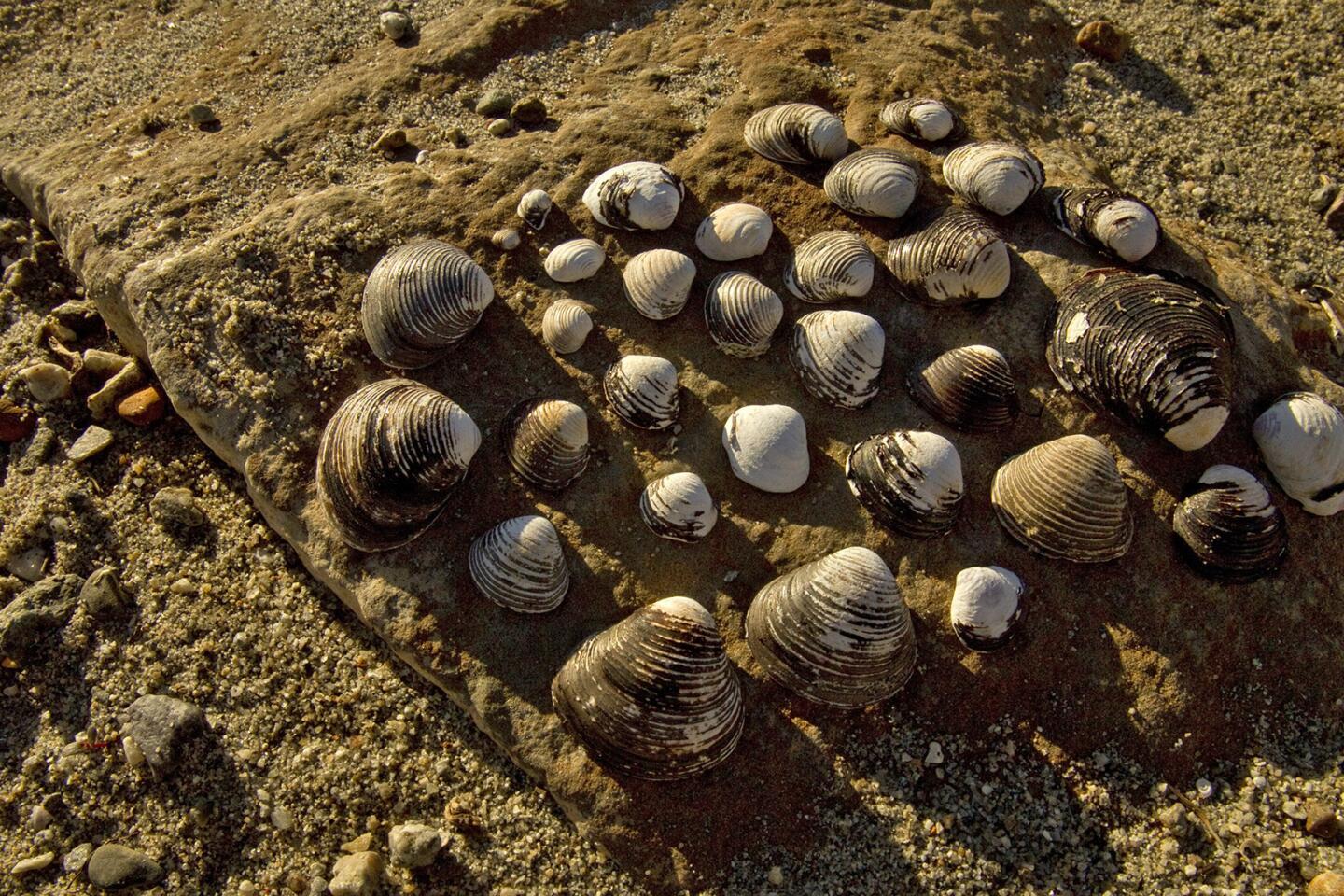

Fallen tree branches and a narrow body of water receding into Lake Shasta at dusk reveal signs of serious drought conditions June 22, 2014. Lake Shasta is at 37% of capacity due to the ongoing drought and is likely to get worse.
(Allen J. Schaben / Los Angeles Times)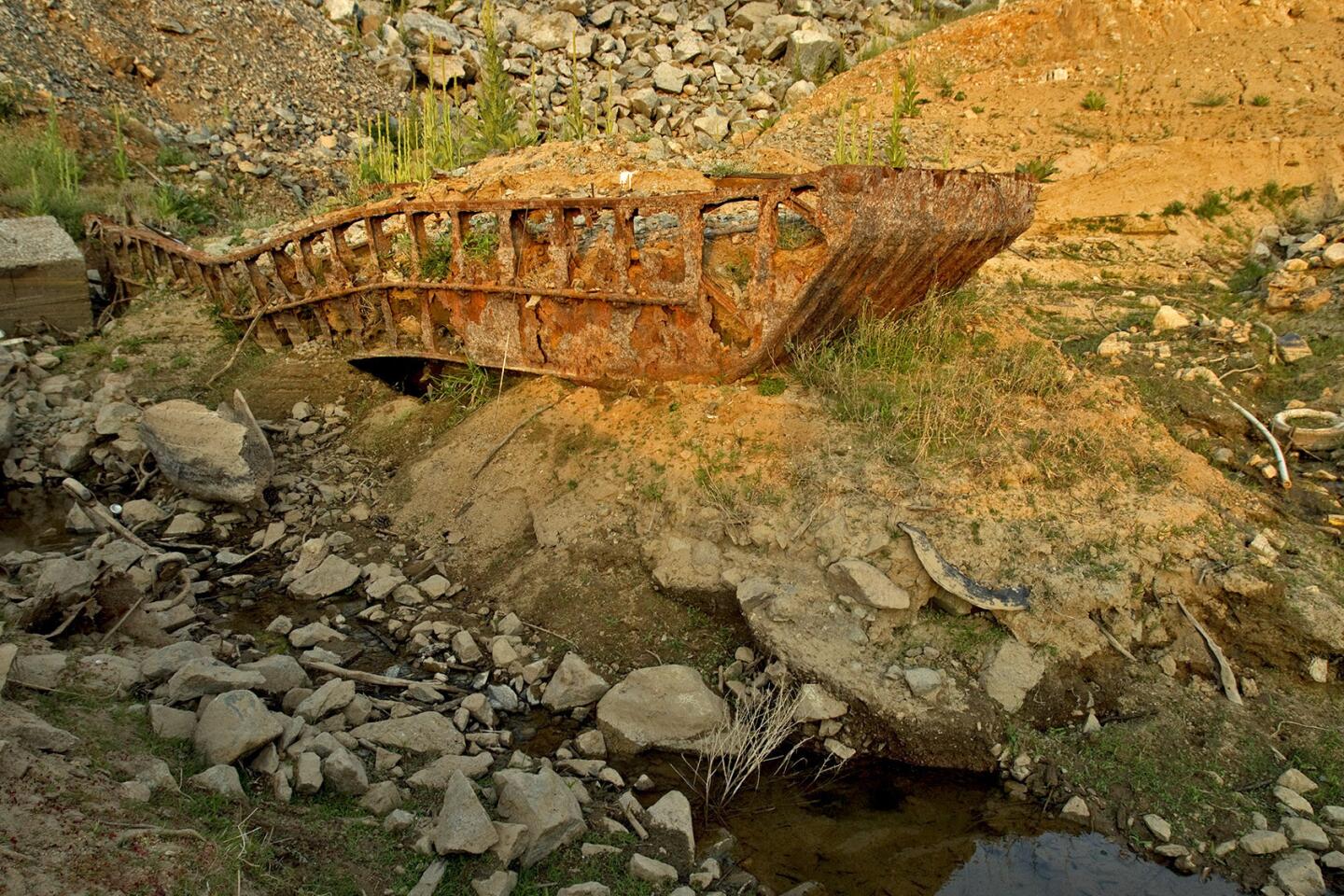
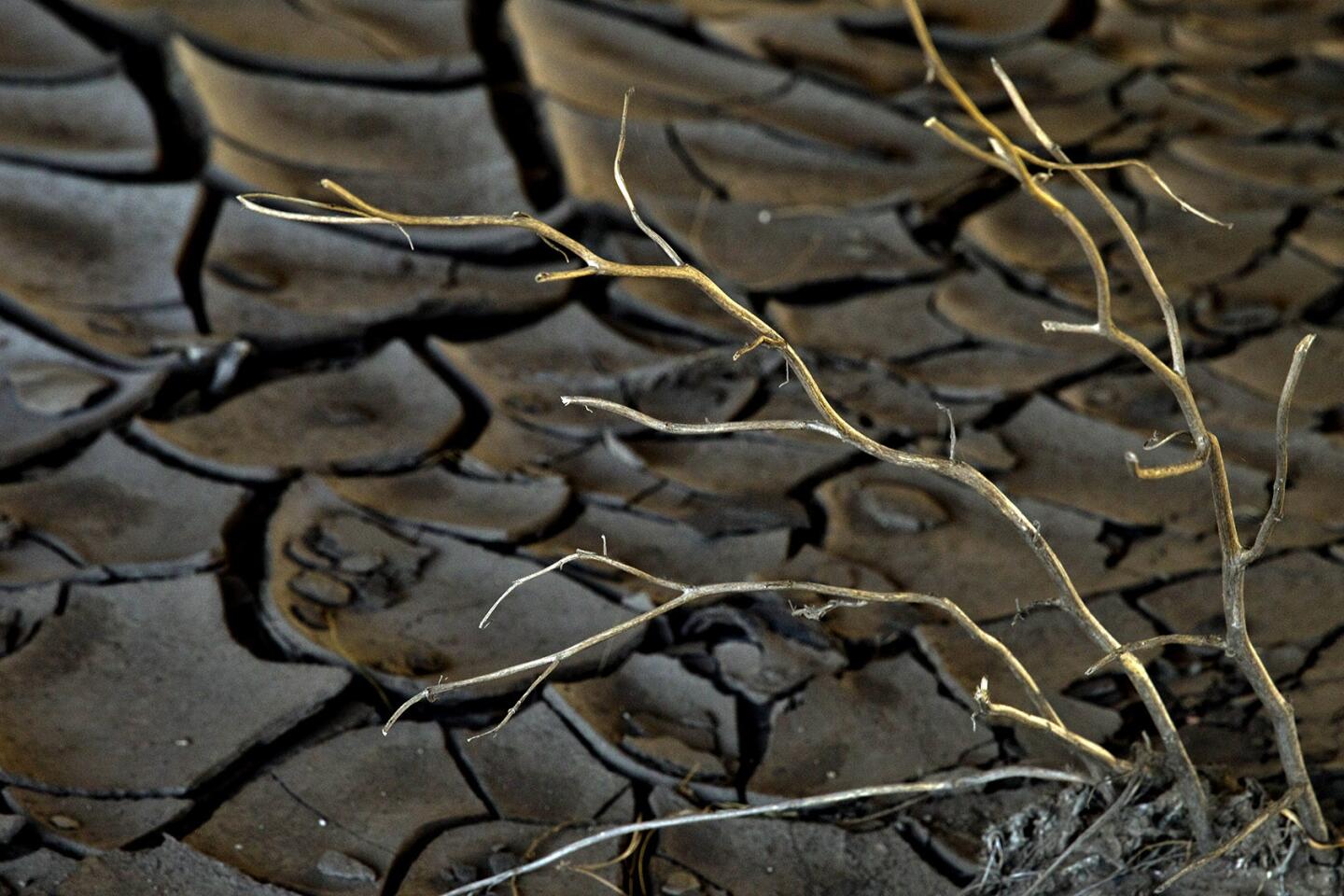
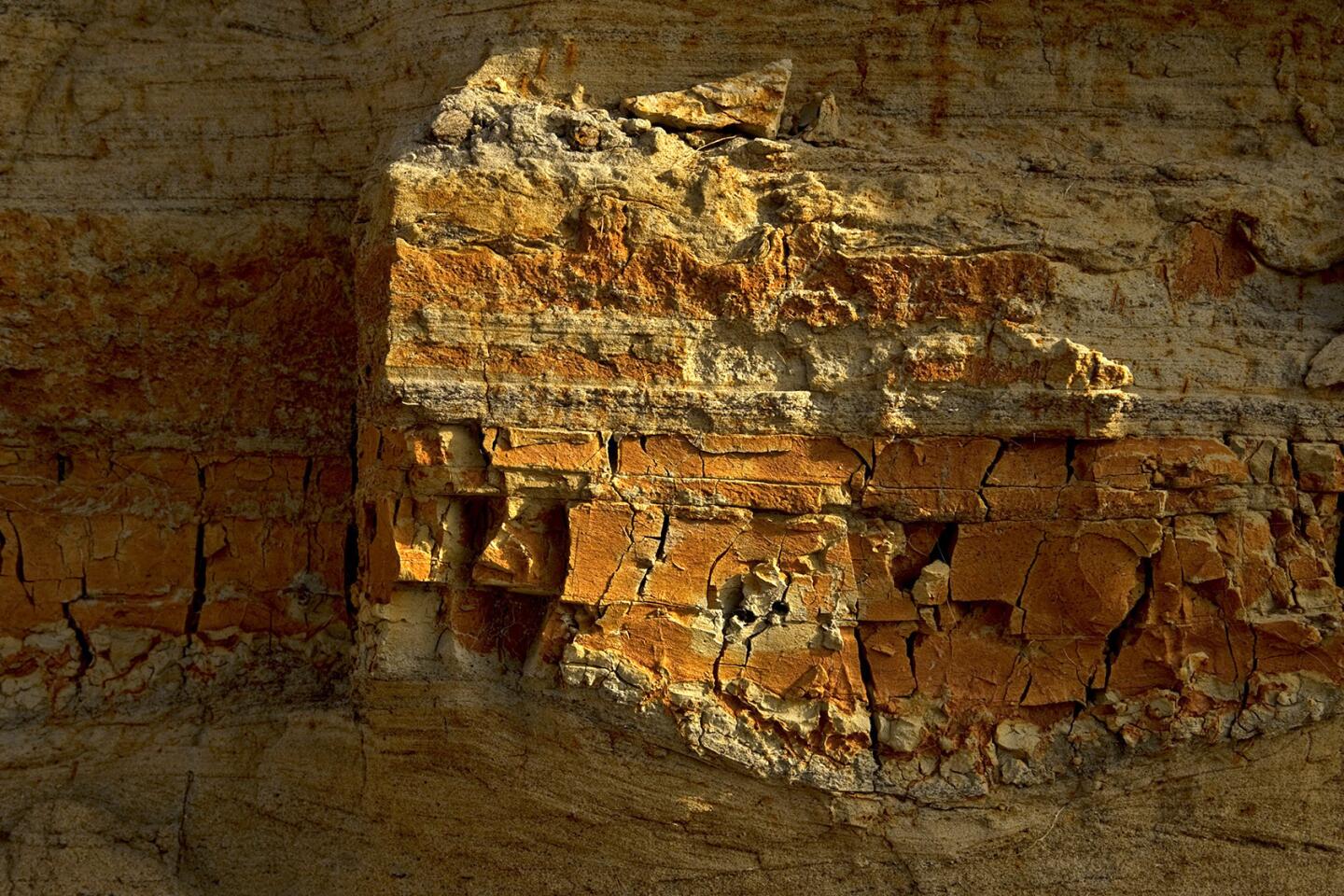

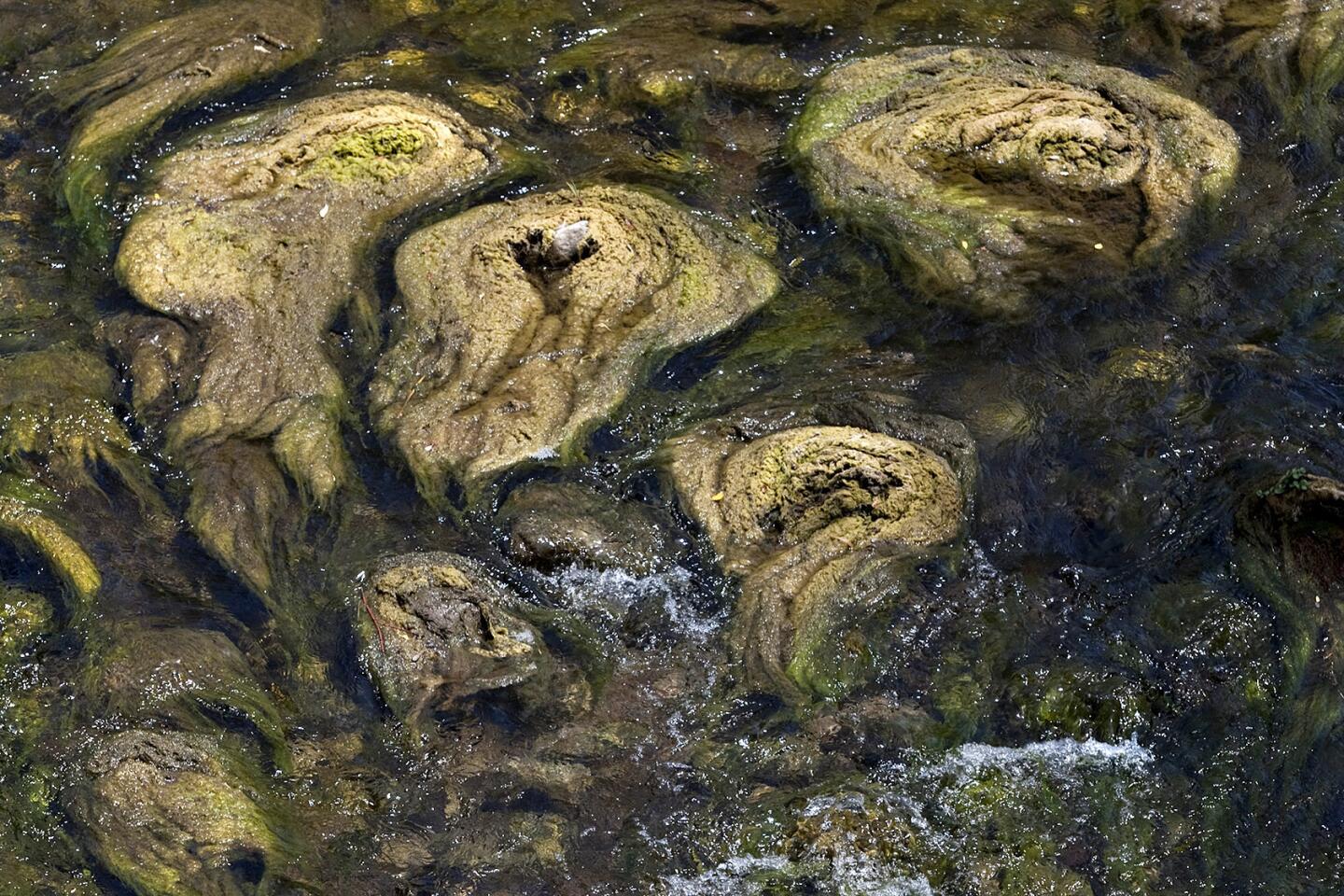
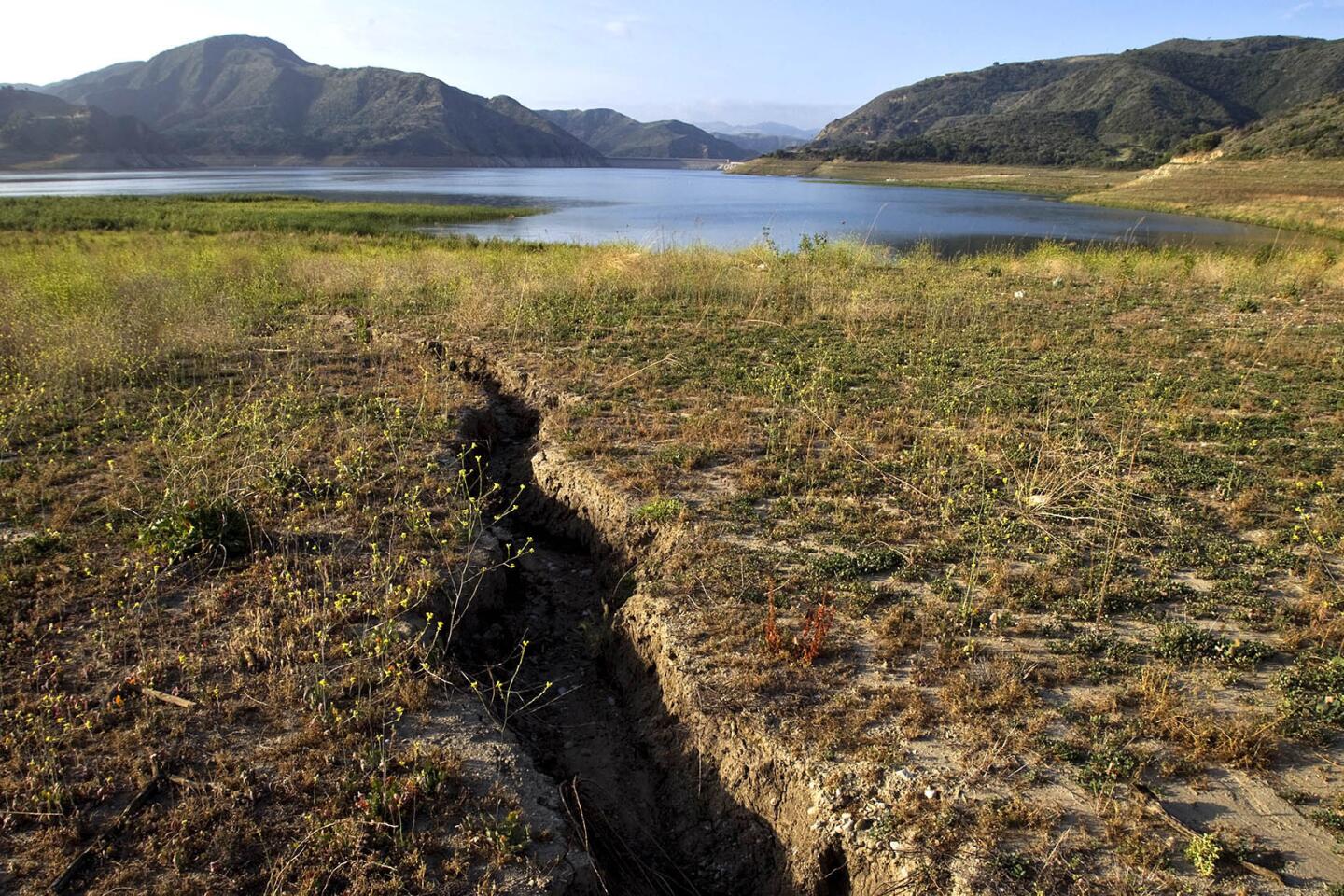

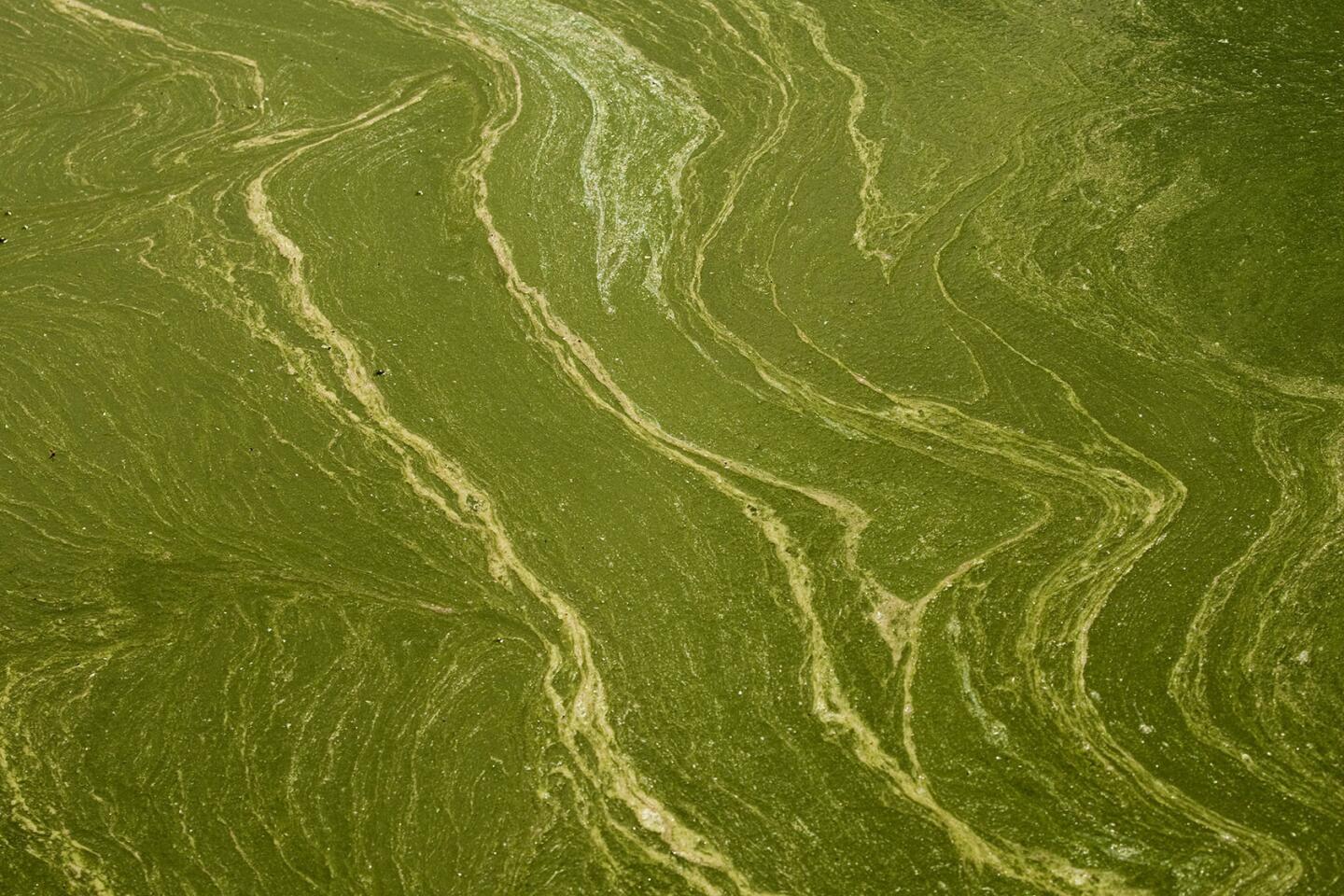
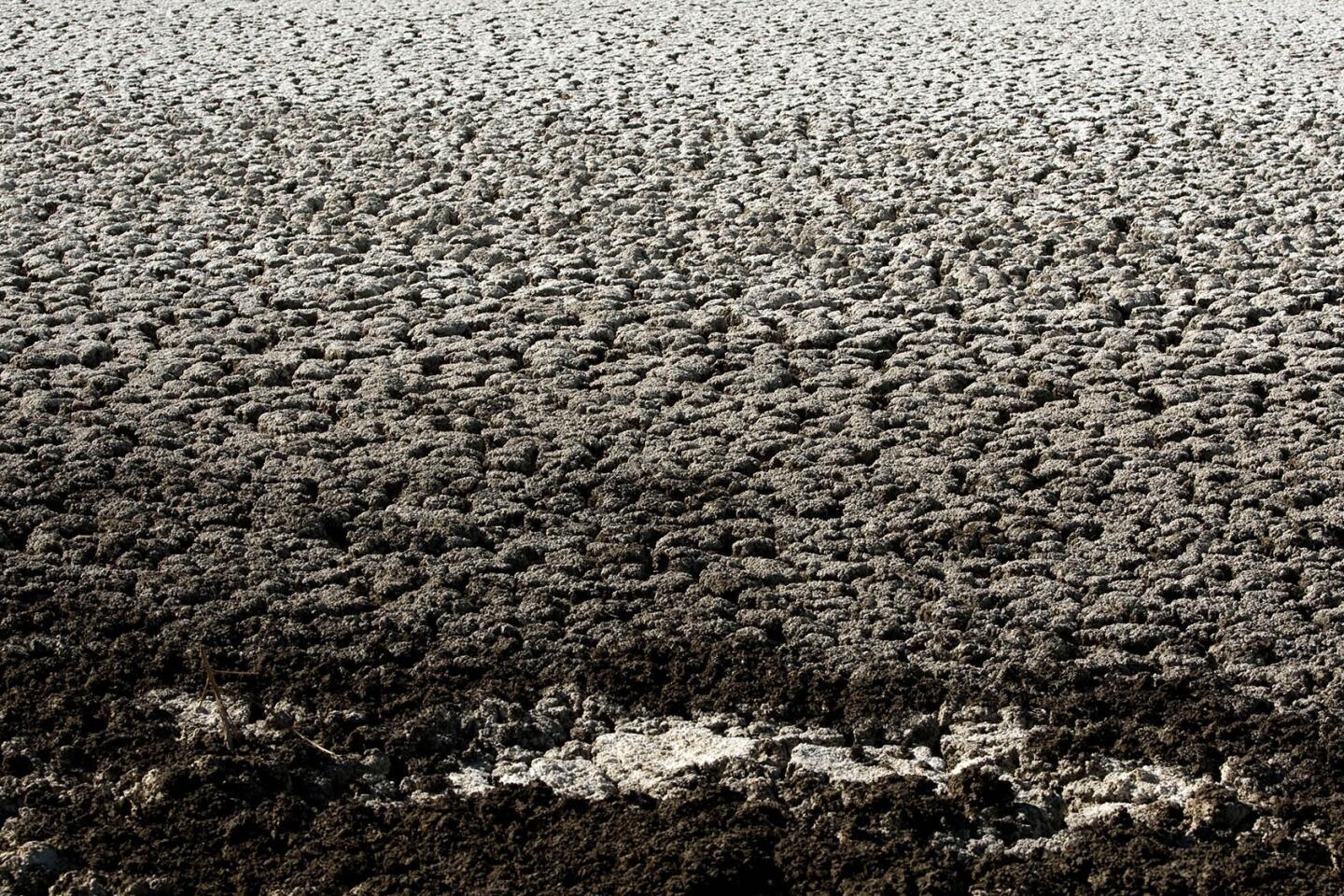
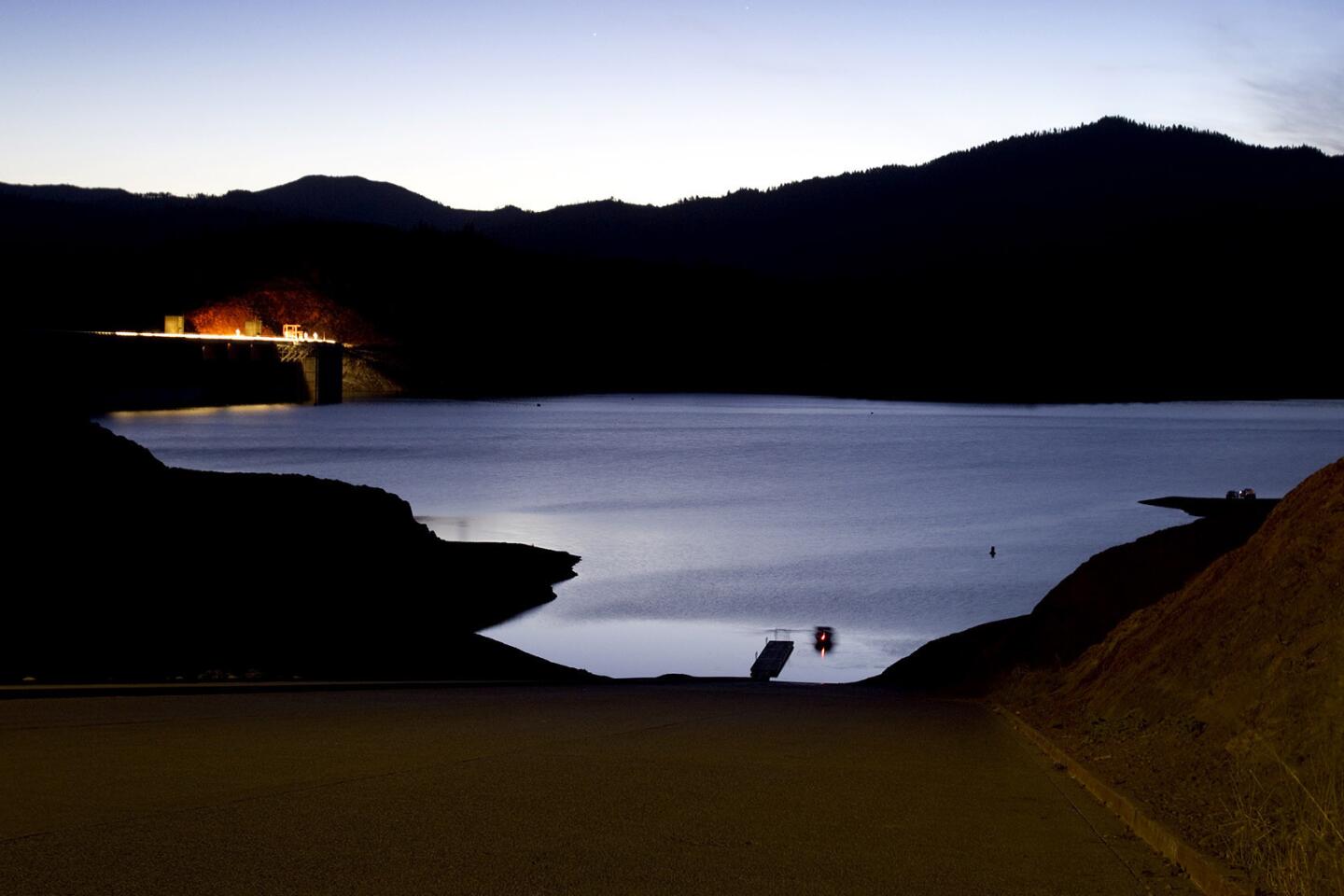

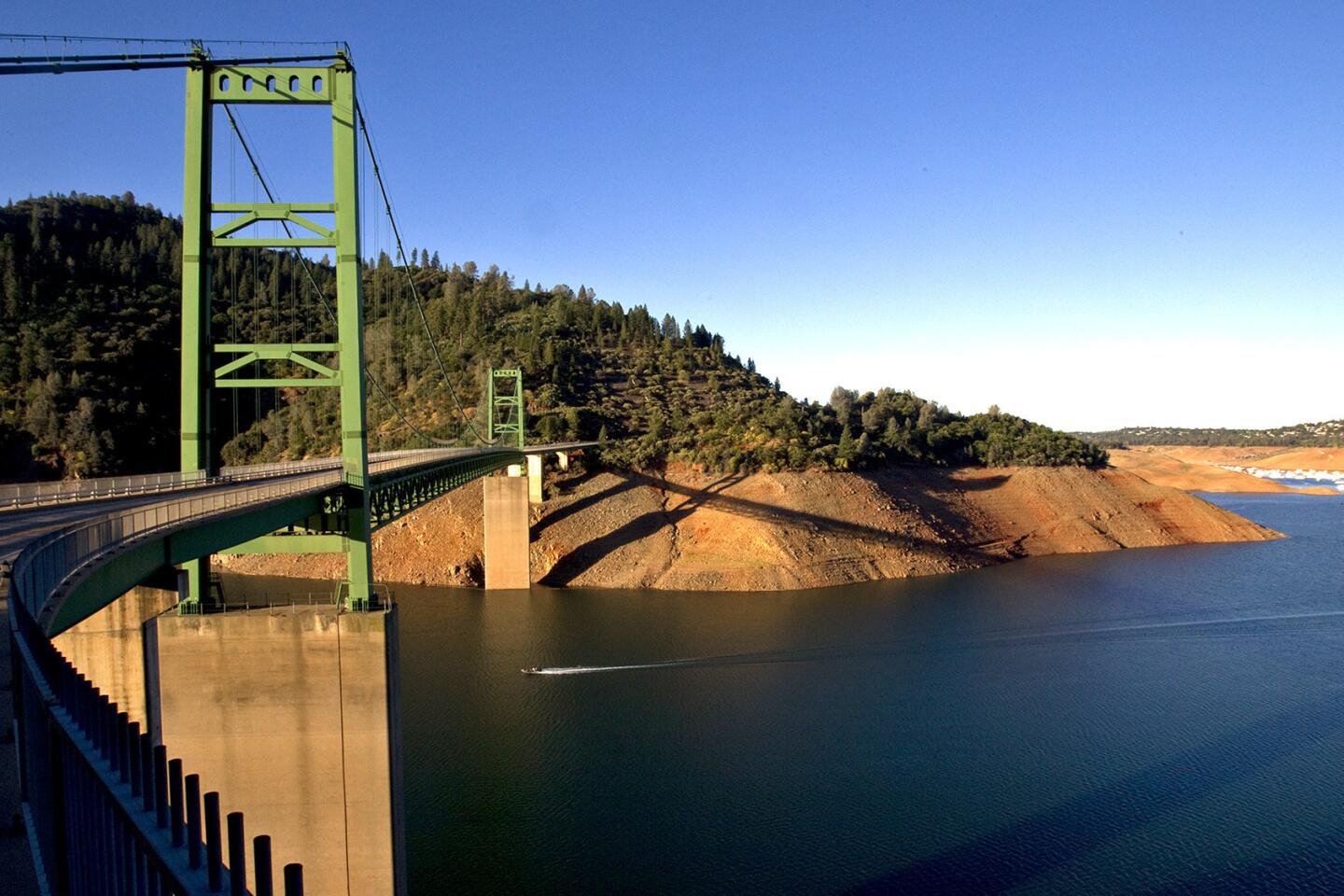
A boater speeds under the New Bidwell Bar Suspension Bridge as severe drought conditions show the water down 160 feet from the high water mark at Lake Oroville on June 21, 2014. Officials say Lake Oroville is at 43% capacity and is likely to get worse, but is not as bad as the drought of 1976-77.
(Allen J. Schaben / Los Angeles Times)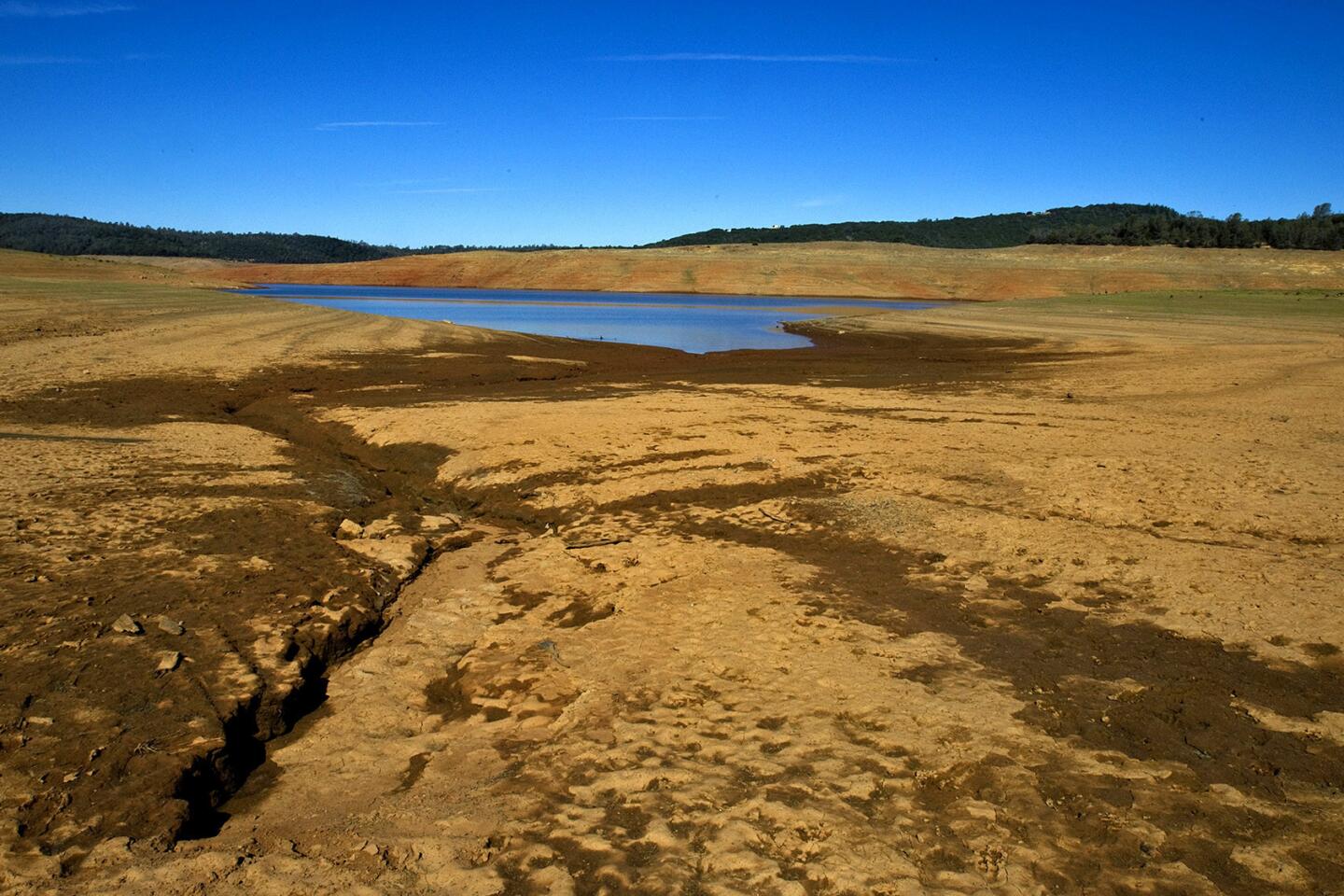
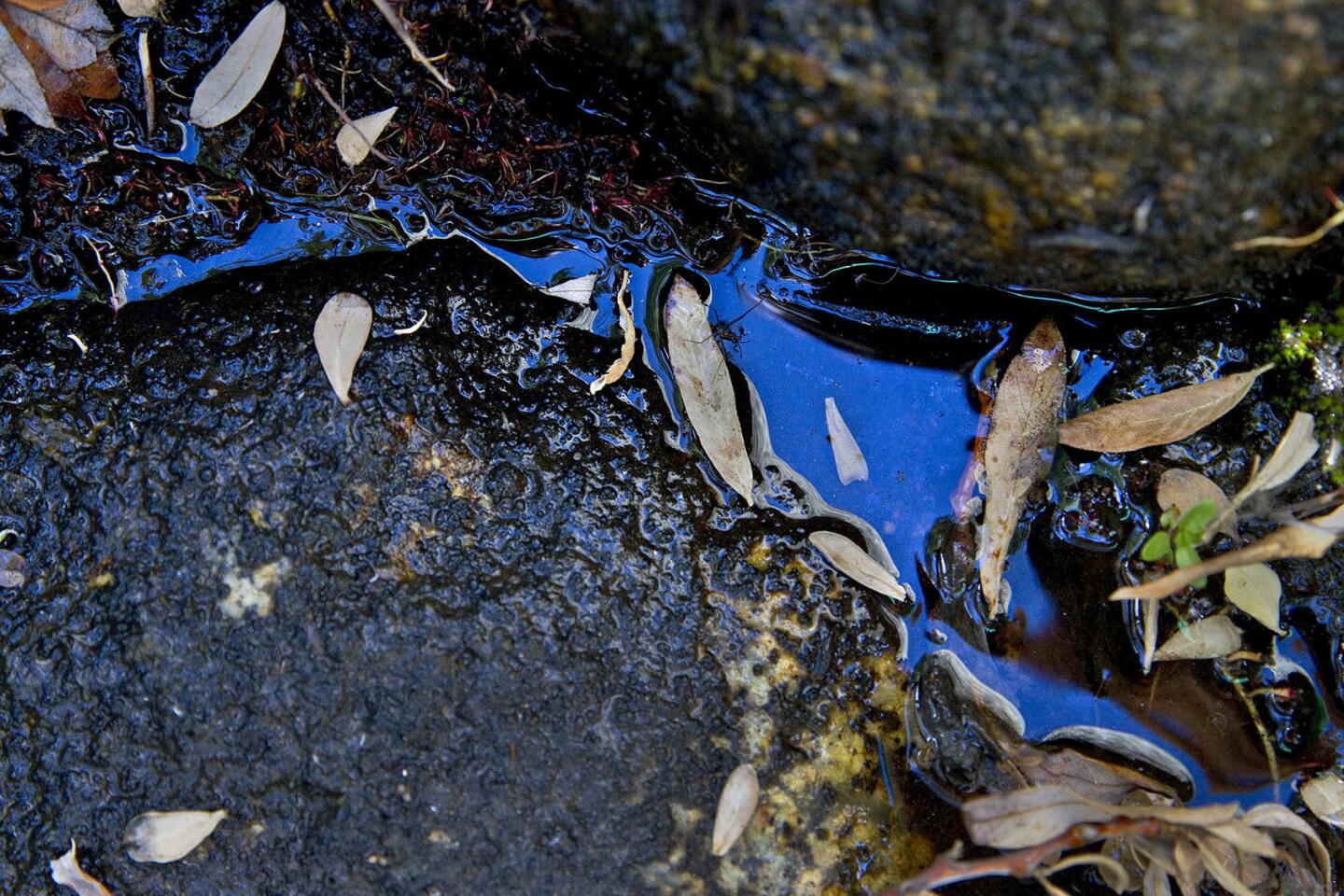

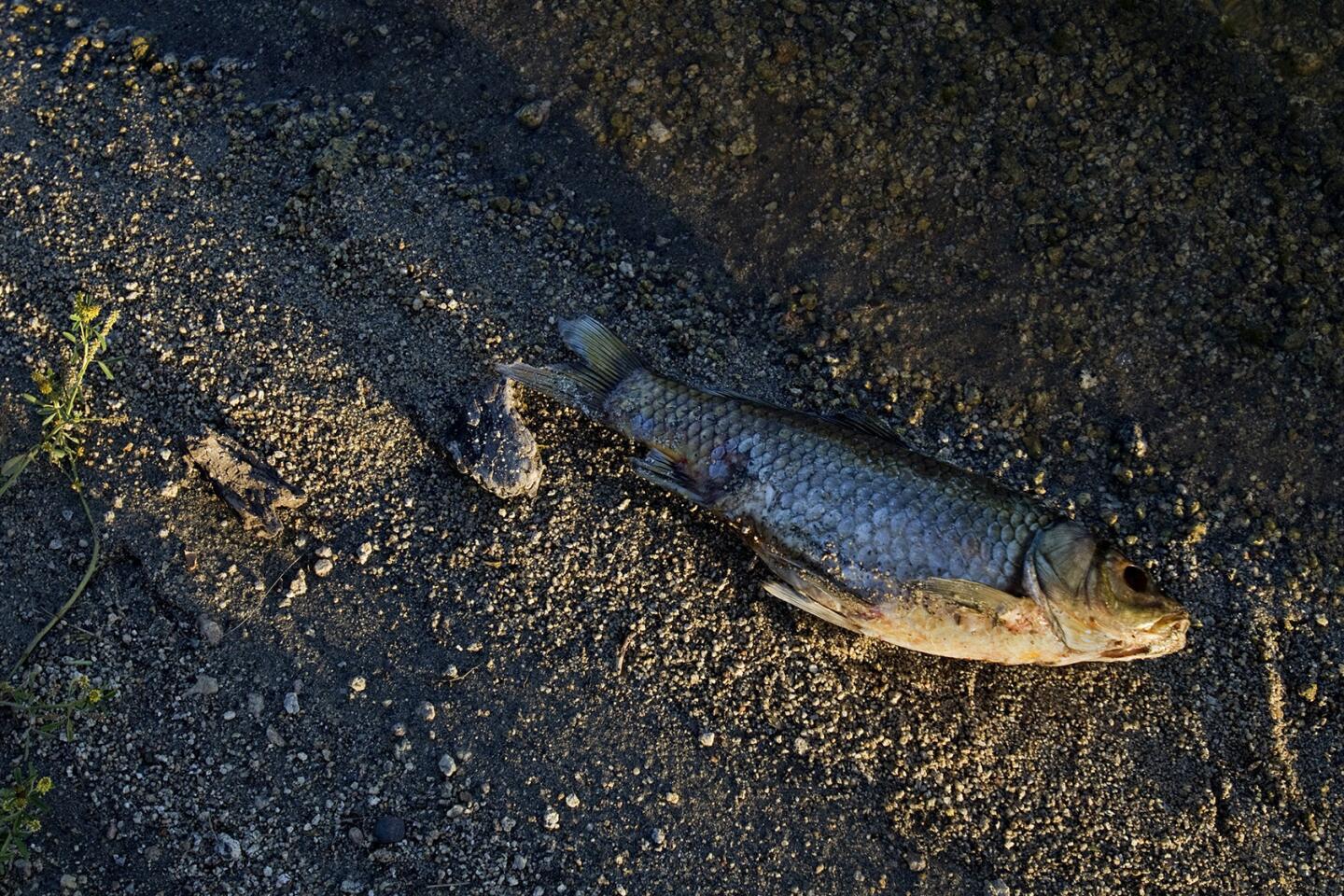
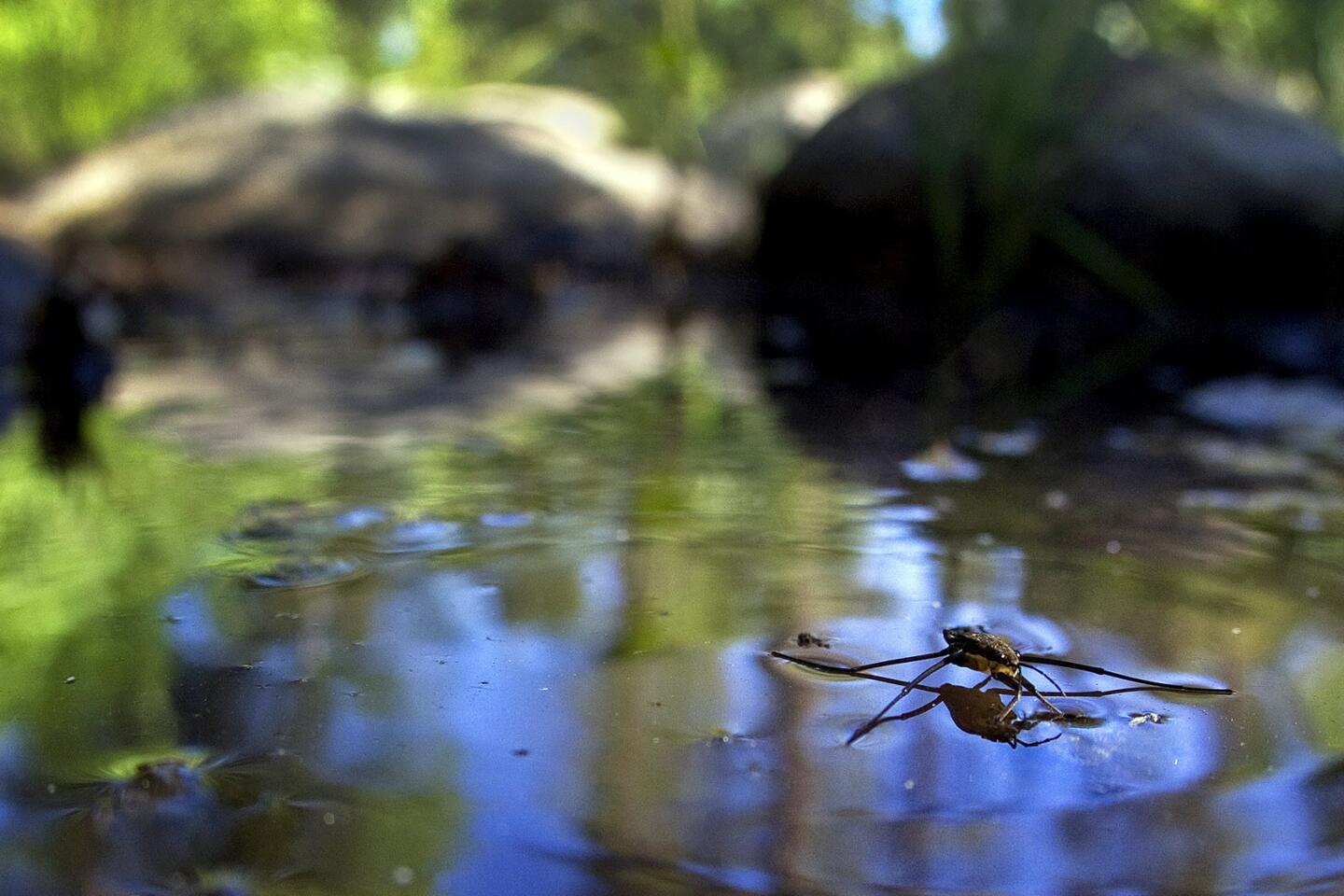
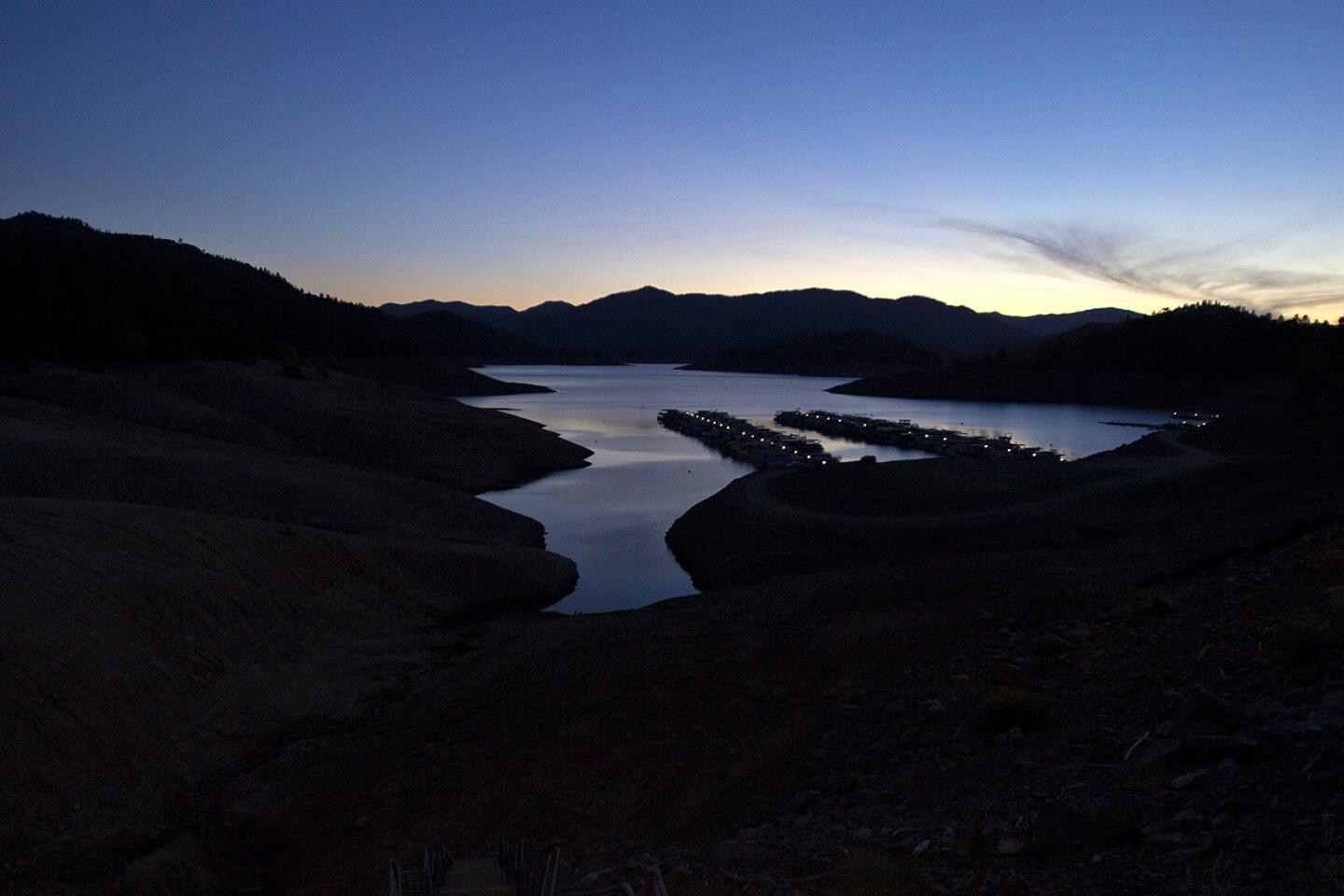
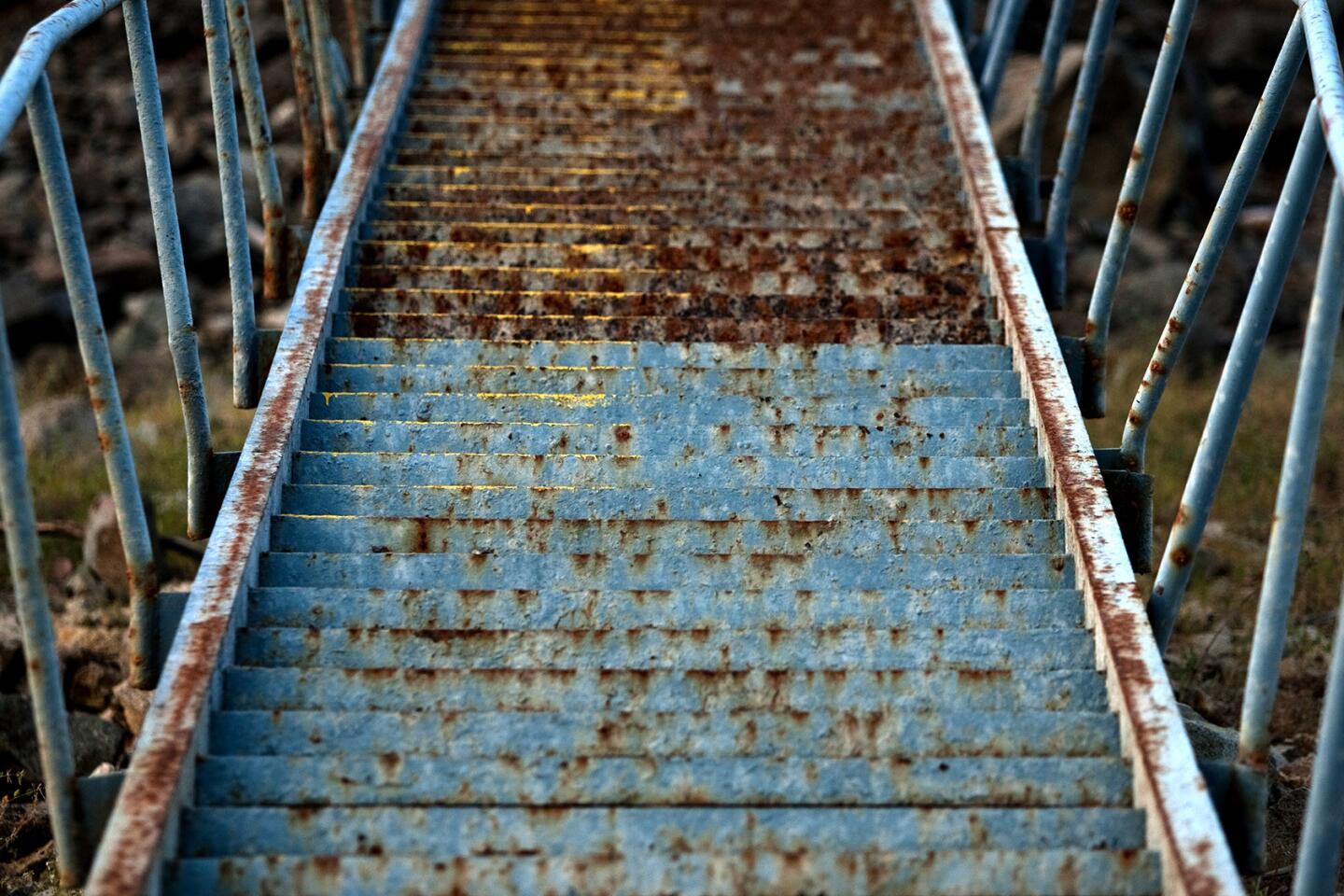
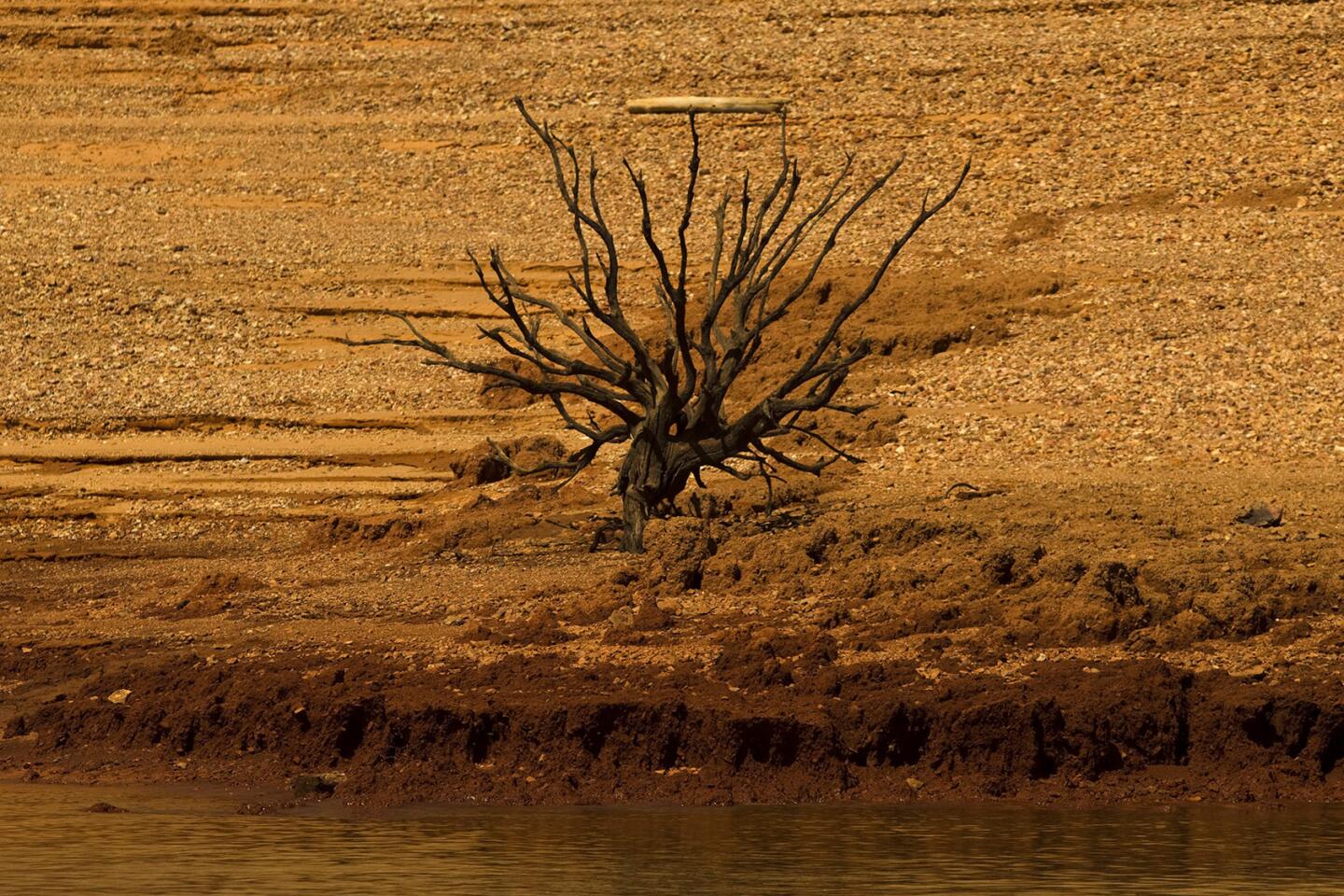
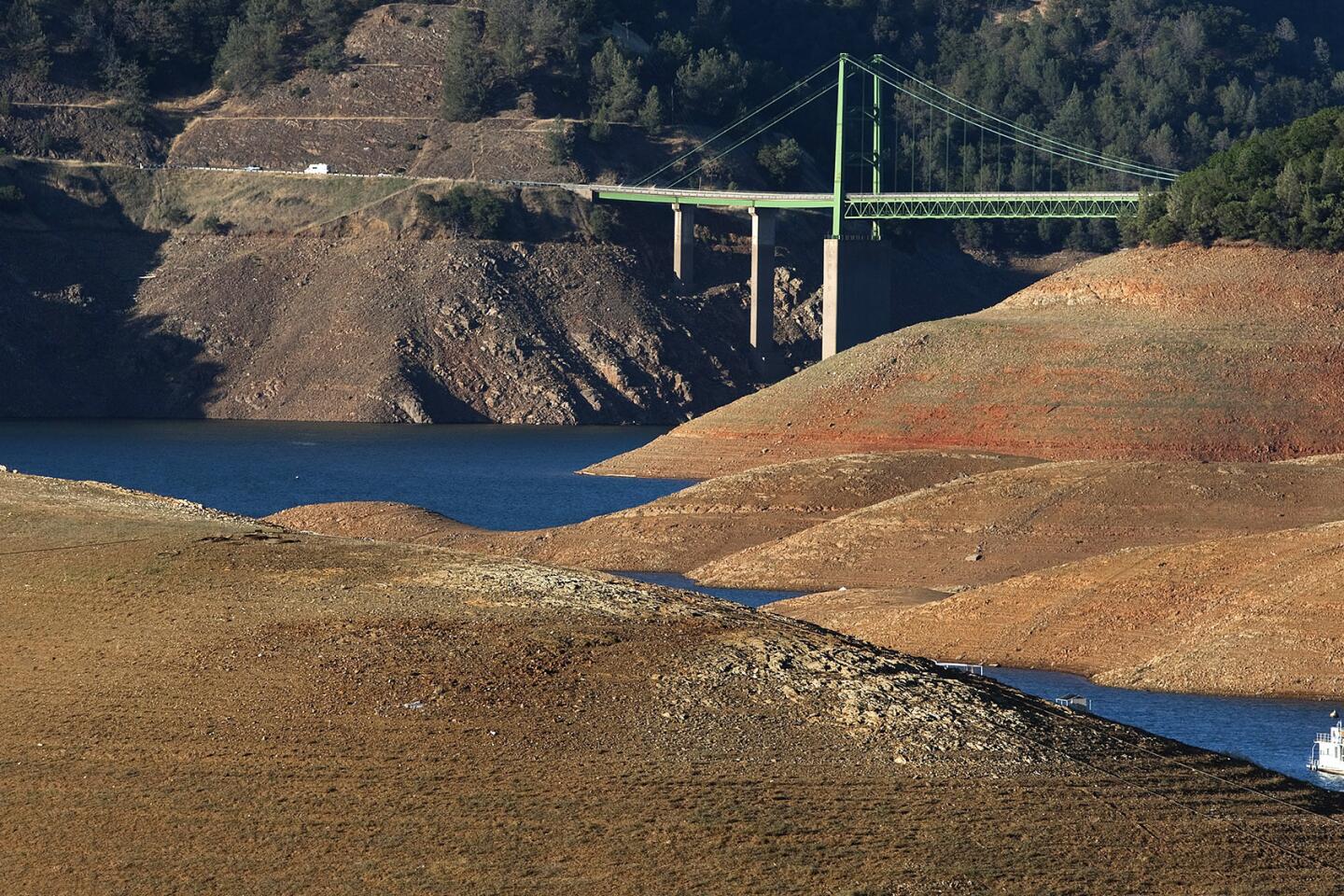
Severe drought conditions are evident as a lone houseboat is dwarfed by steep banks that show the water level down 160 feet from the high water mark at Lake Oroville on June 21, 2014. Receding water levels are revealing prehistoric and historic artifacts such as bedrock mortars and projectile points made by the Maidu people and remnants of placer and dredge mining that thrived here after John Bidwell discovered gold in 1848.
(Allen J. Schaben / Los Angeles Times)Drought conditions may have leveled off across California, but nearly 100% of the state remains in the third-harshest category for dryness, according to the latest measurements.
For the past two weeks, California’s drought picture has remained the same, halting a steady march toward worse. But the breather has allowed the state to recover only ever so slightly.
In May, 100% of California was experiencing “severe” drought -- the third harshest on a five-level scale -- but since things have leveled off, that figure has only improved to 99.8%, according to the U.S. Drought Monitor report.
Meanwhile, nearly 82% of California continues to suffer “extreme” drought, and within that area, more than half the state is under the driest “exceptional” drought category.
The figures comes as the state Water Resources Control Board authorized strict fines for water wasters in July as part of the latest conservation effort.
As cities across California start enforcing penalties with renewed gusto for over-watering, residents have felt the consequences -- some incurring huge fines, others annoyed with browning neighborhood lawns.
In Santa Cruz, residents who incur penalties can even attend one-time classes instead of paying fees -- the water equivalent of traffic school.
As images of dry lake beds and muddy streams continue to proliferate, forecasters warn hope for relief has dimmed somewhat.
The latest long-term forecast shows the chances of a wet El Niño weather pattern starting this fall has decreased to about 65%, and if it does arrive, it will probably be weaker than originally expected.
For breaking news in Los Angeles and throughout California, follow @VeronicaRochaLA. She can be reached at [email protected].
Sign up for Essential California
The most important California stories and recommendations in your inbox every morning.
You may occasionally receive promotional content from the Los Angeles Times.
Veronica Rocha worked on the Metro desk and at L.A. Now covering breaking news in California. She joined the Los Angeles Times in 2014 and left in 2017.


